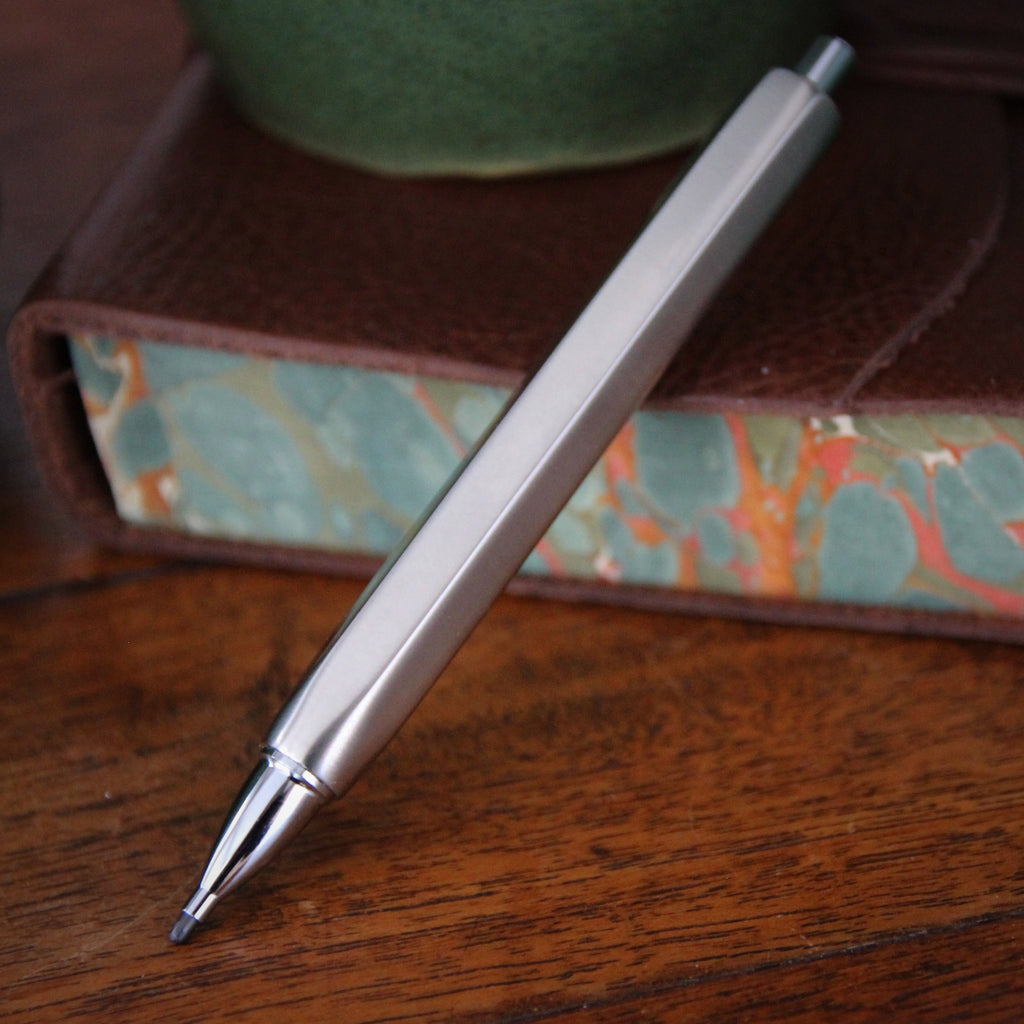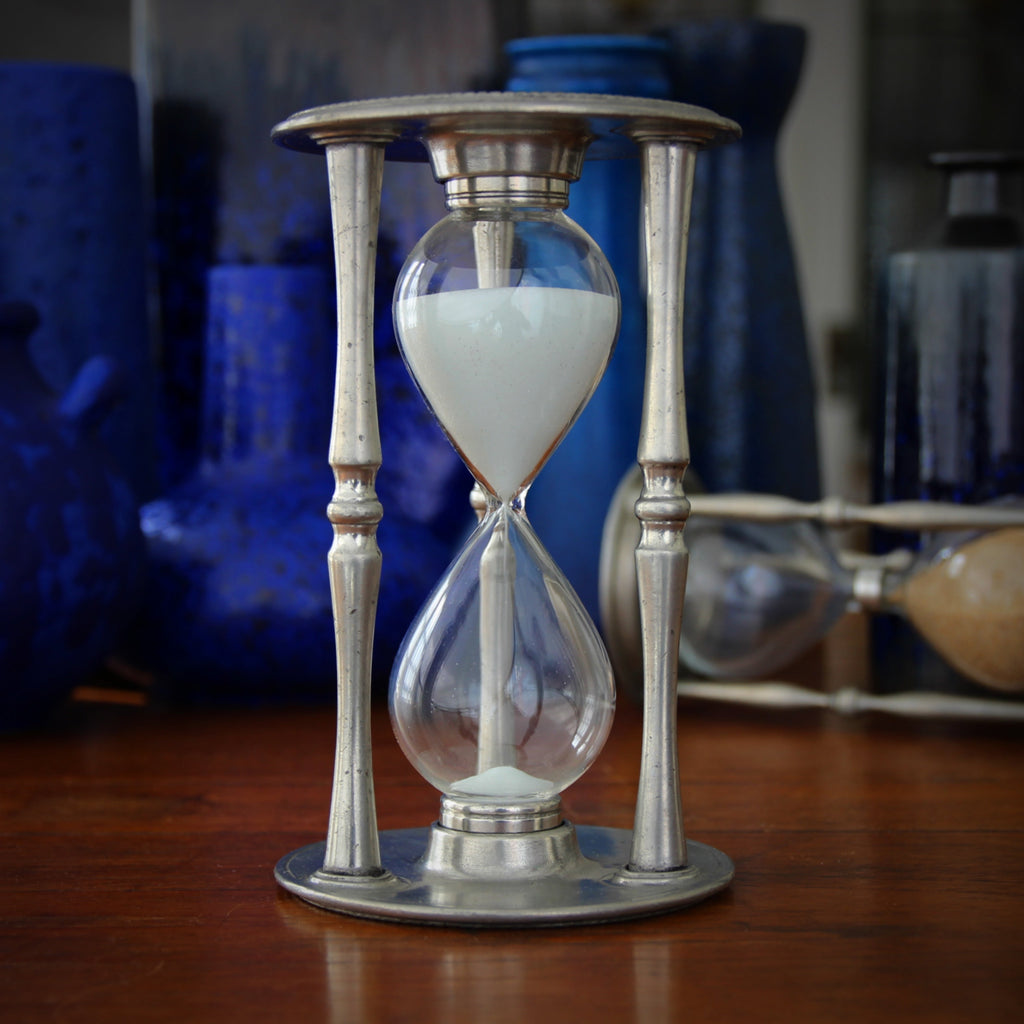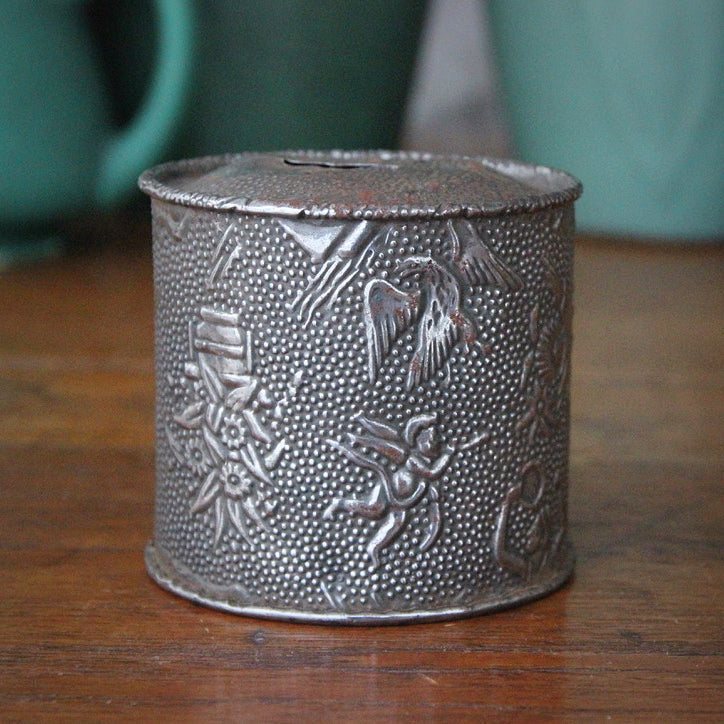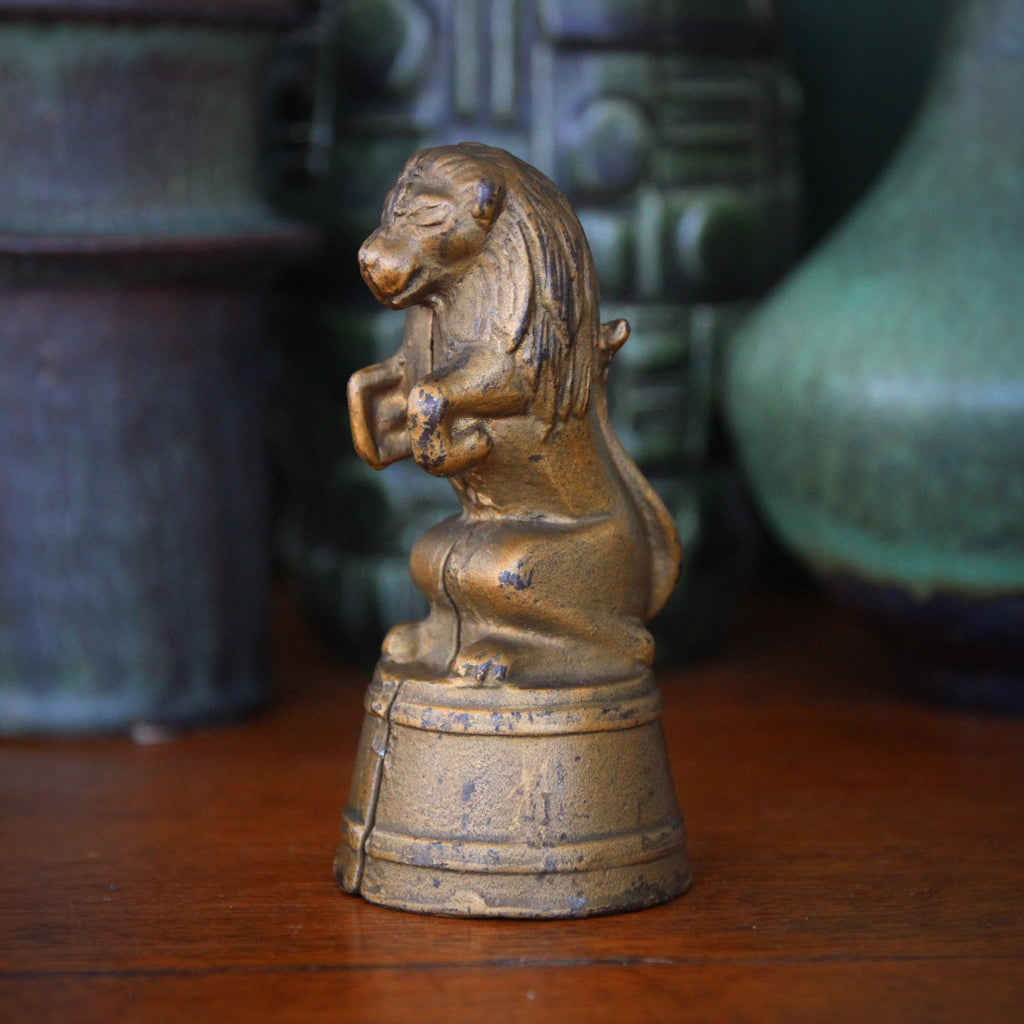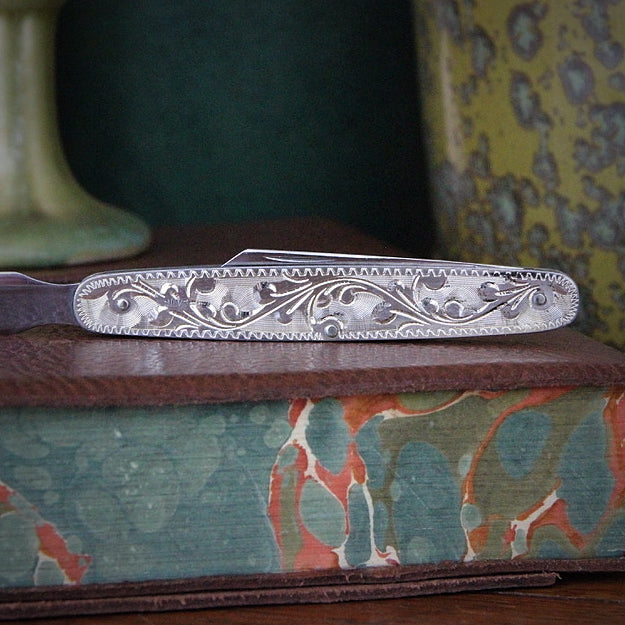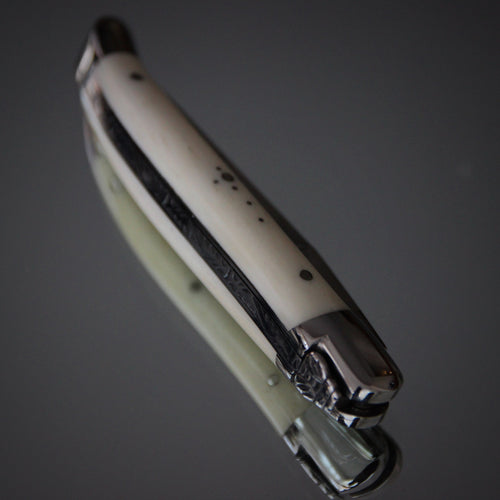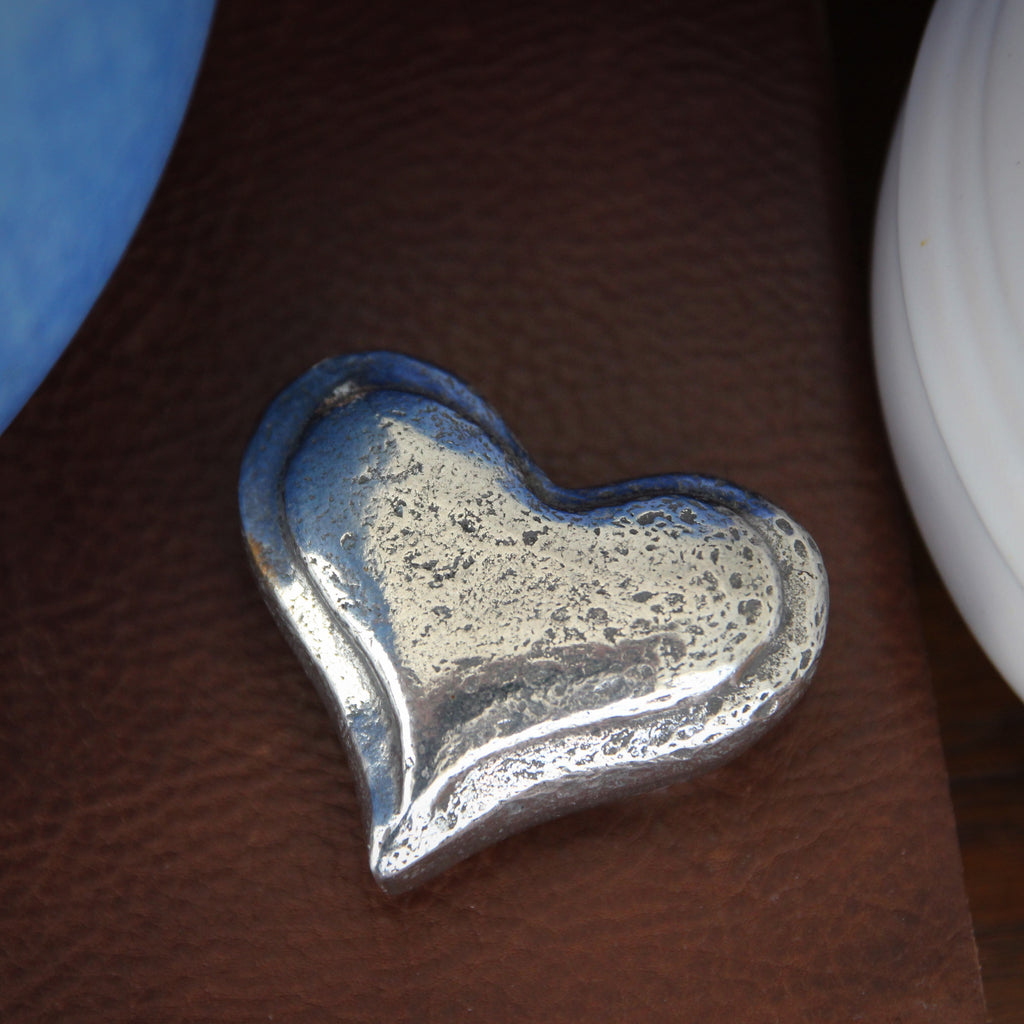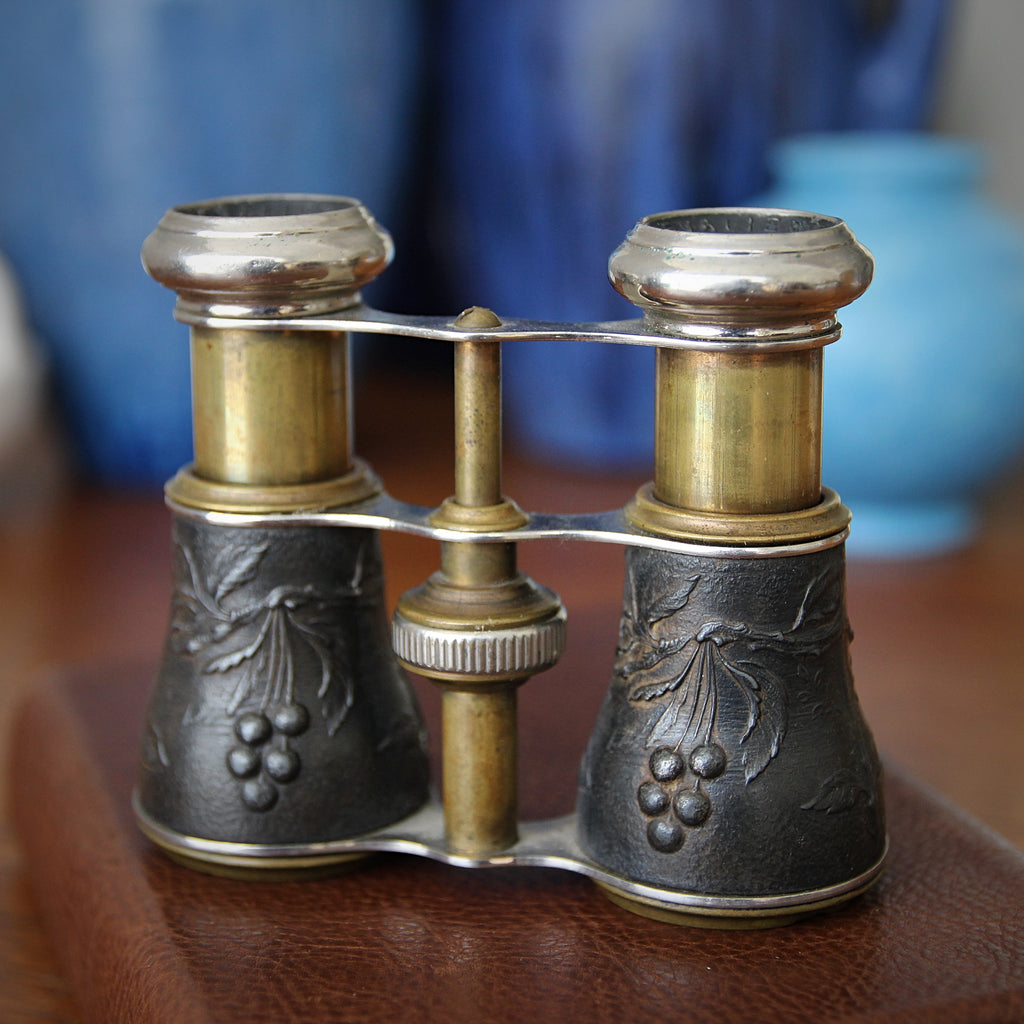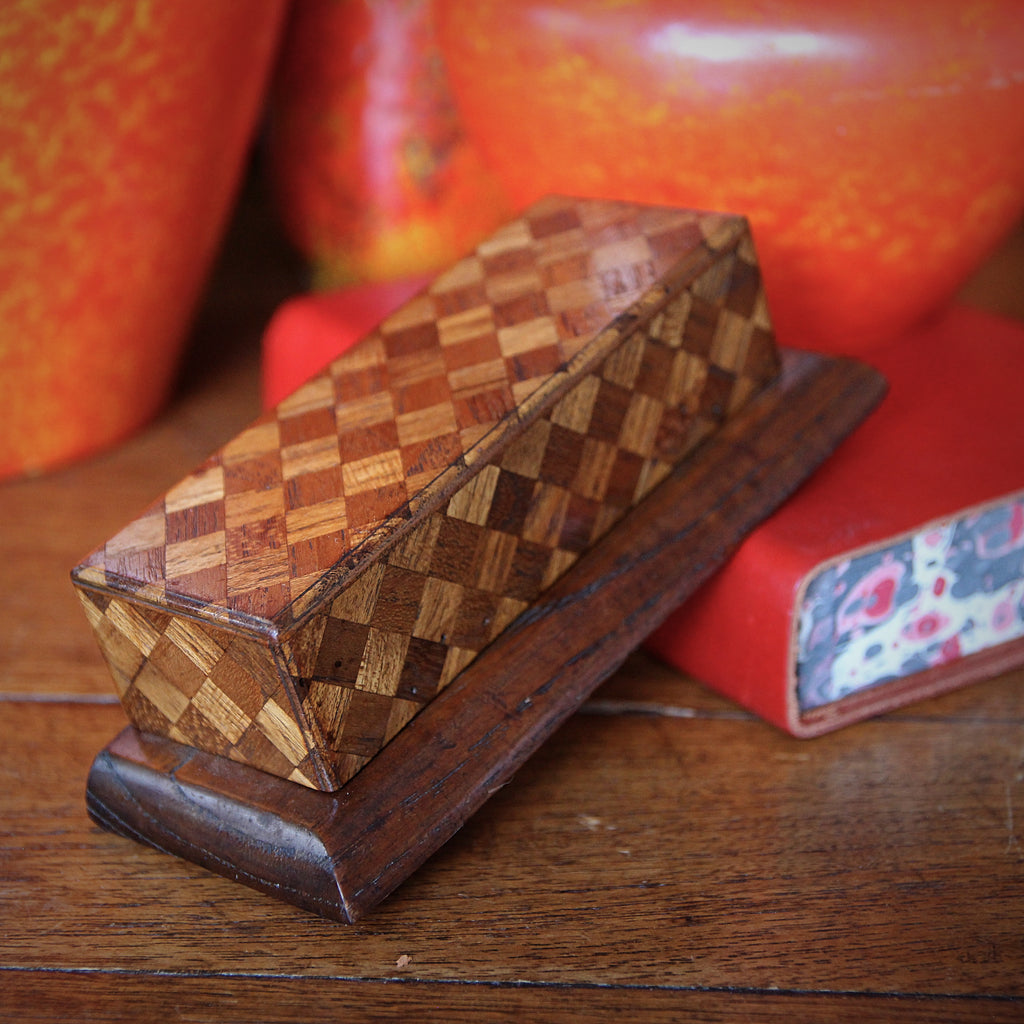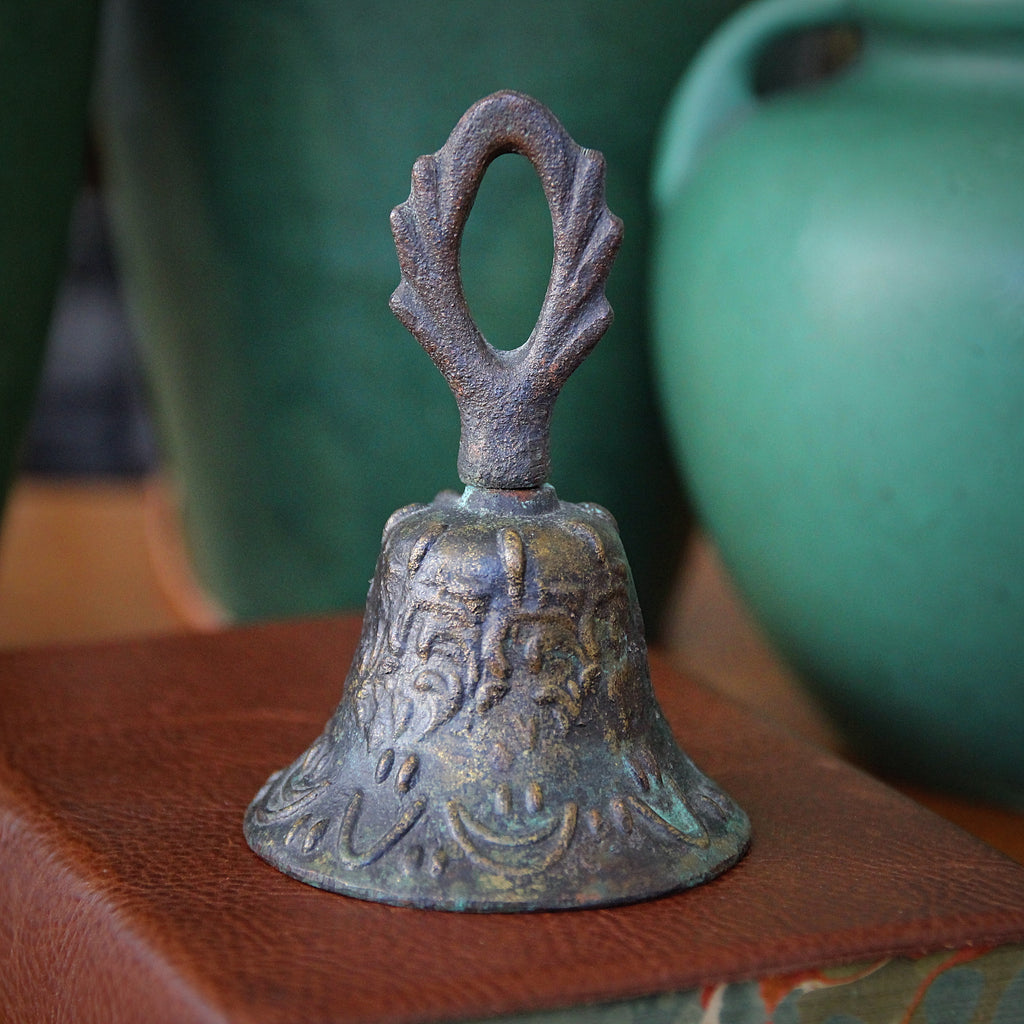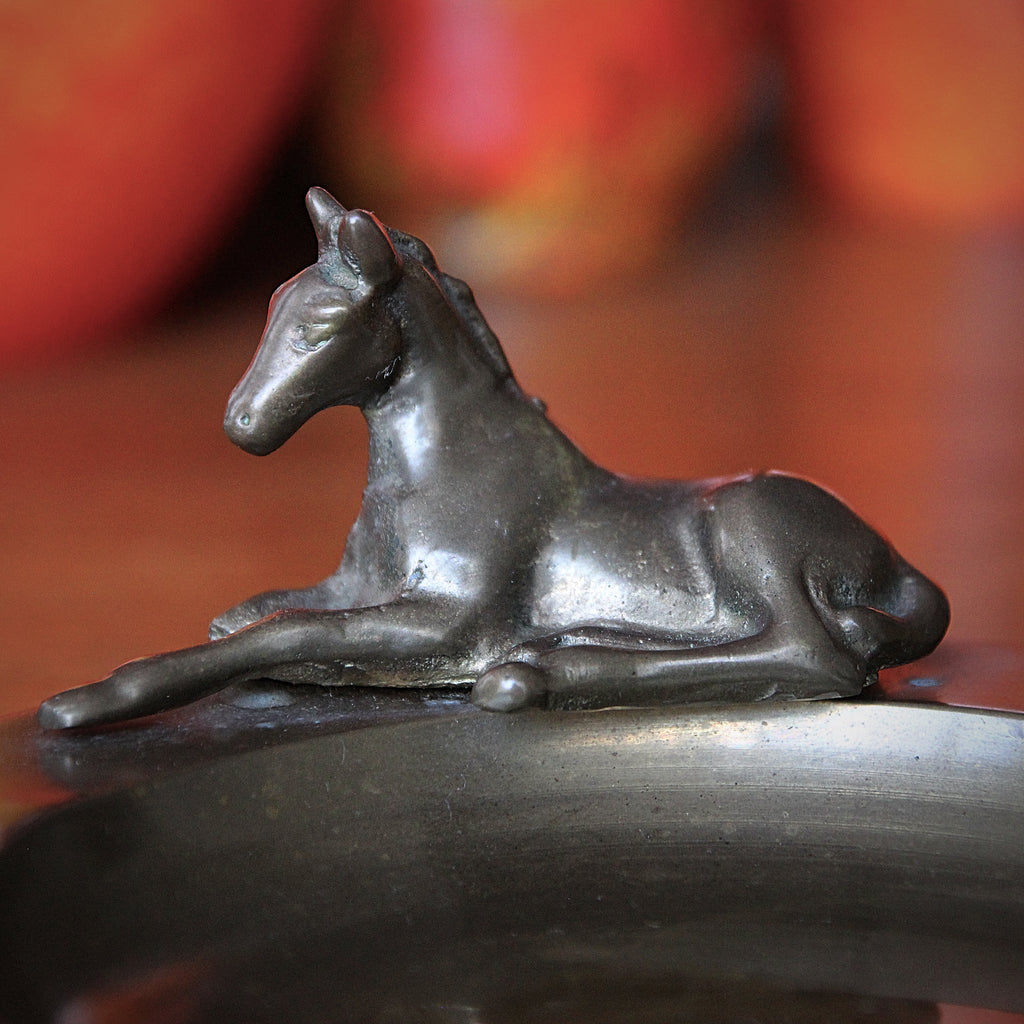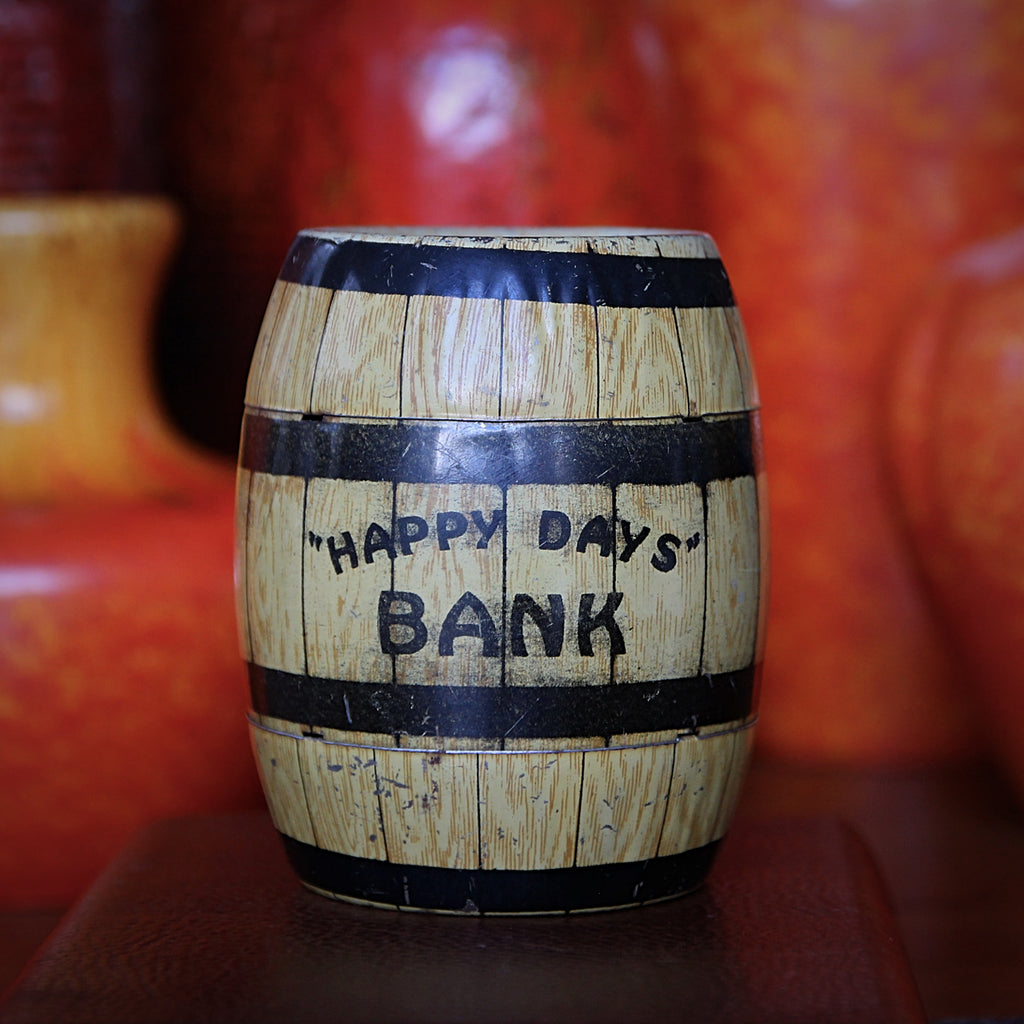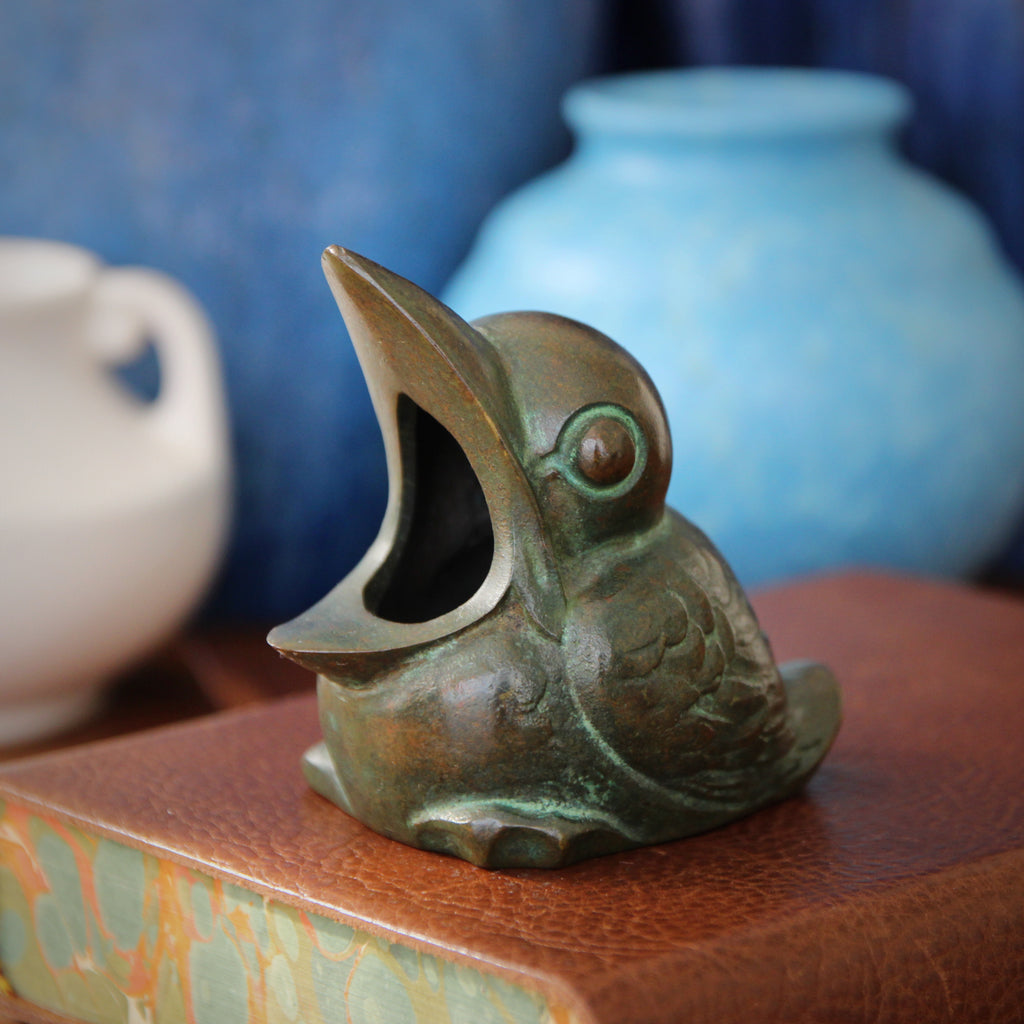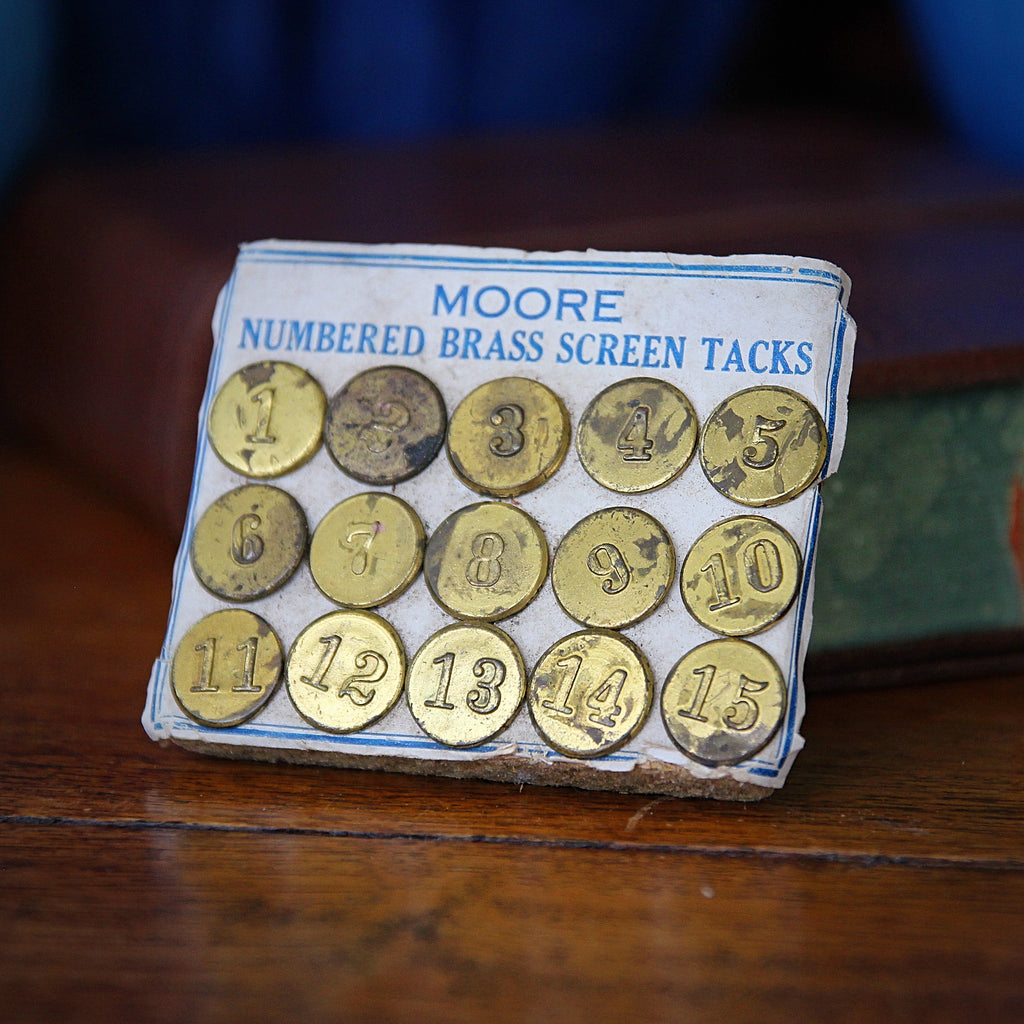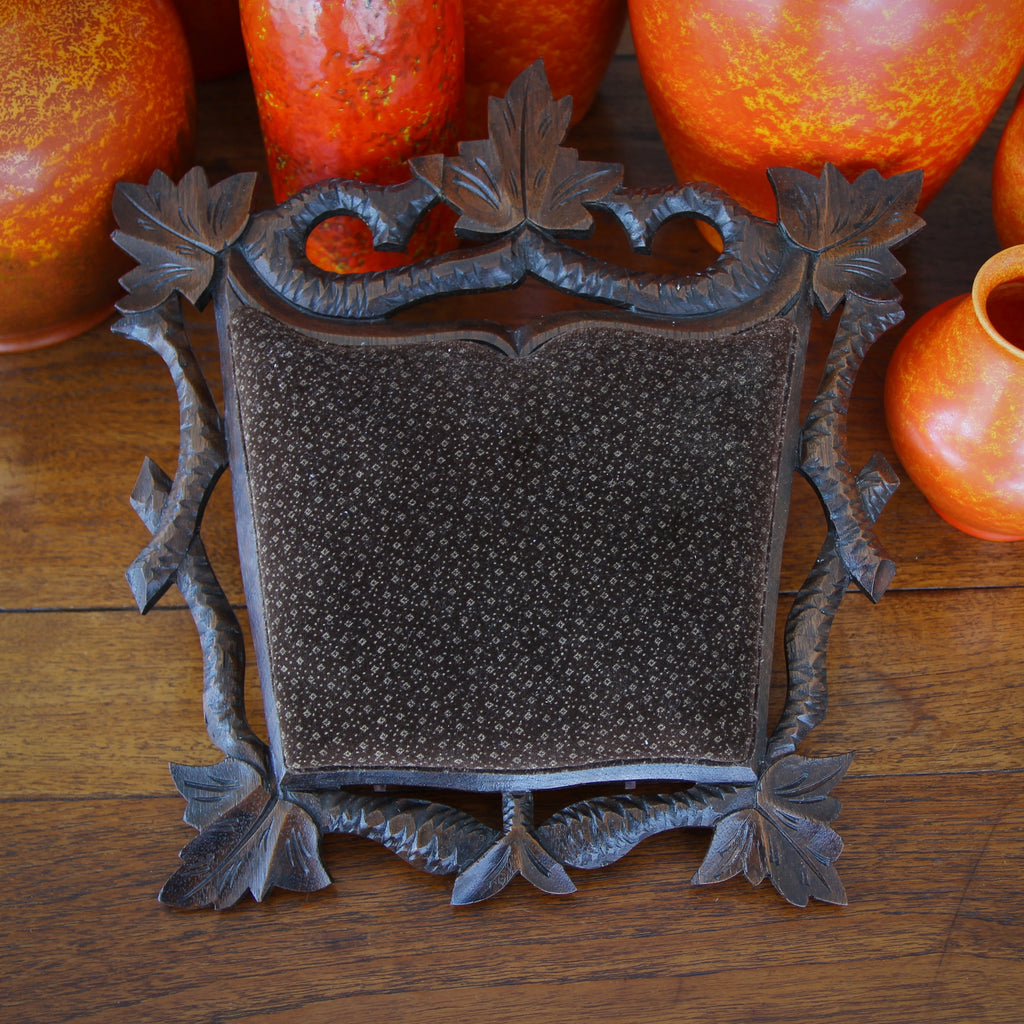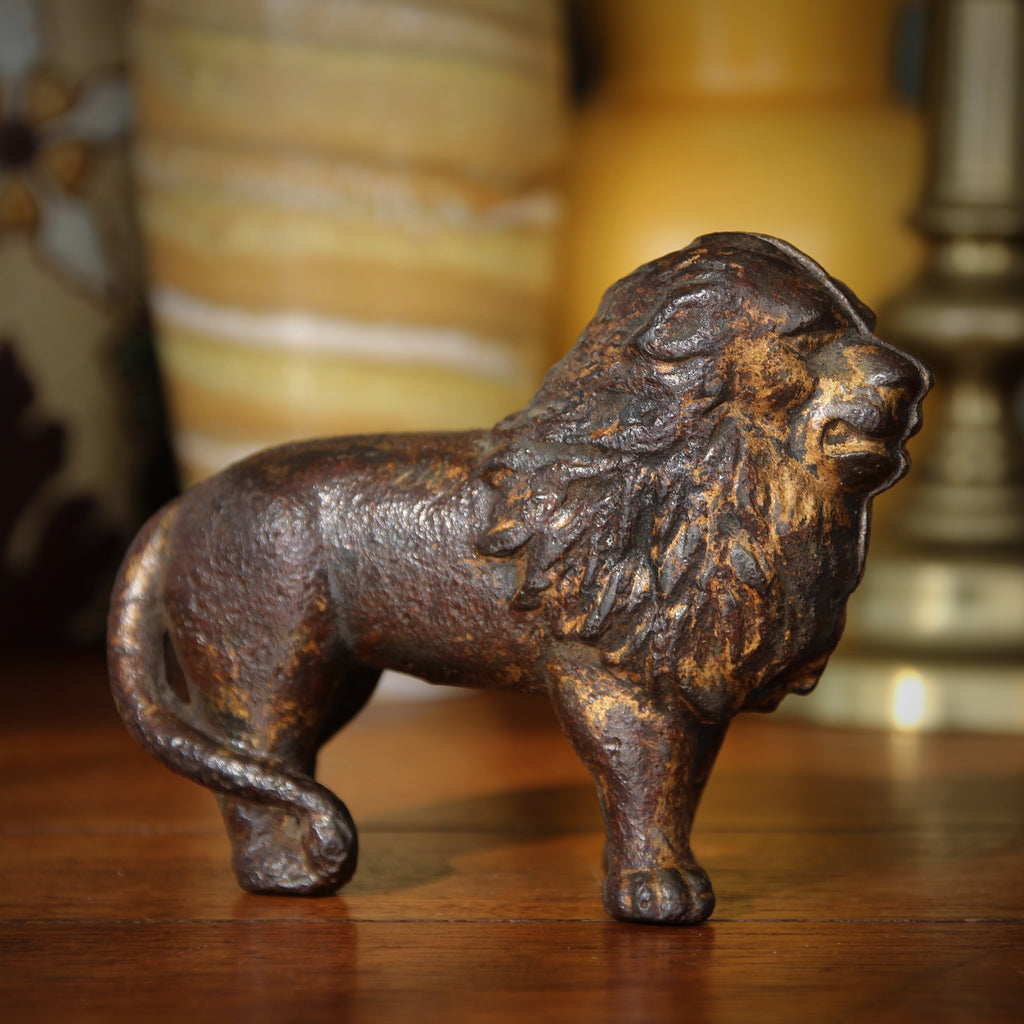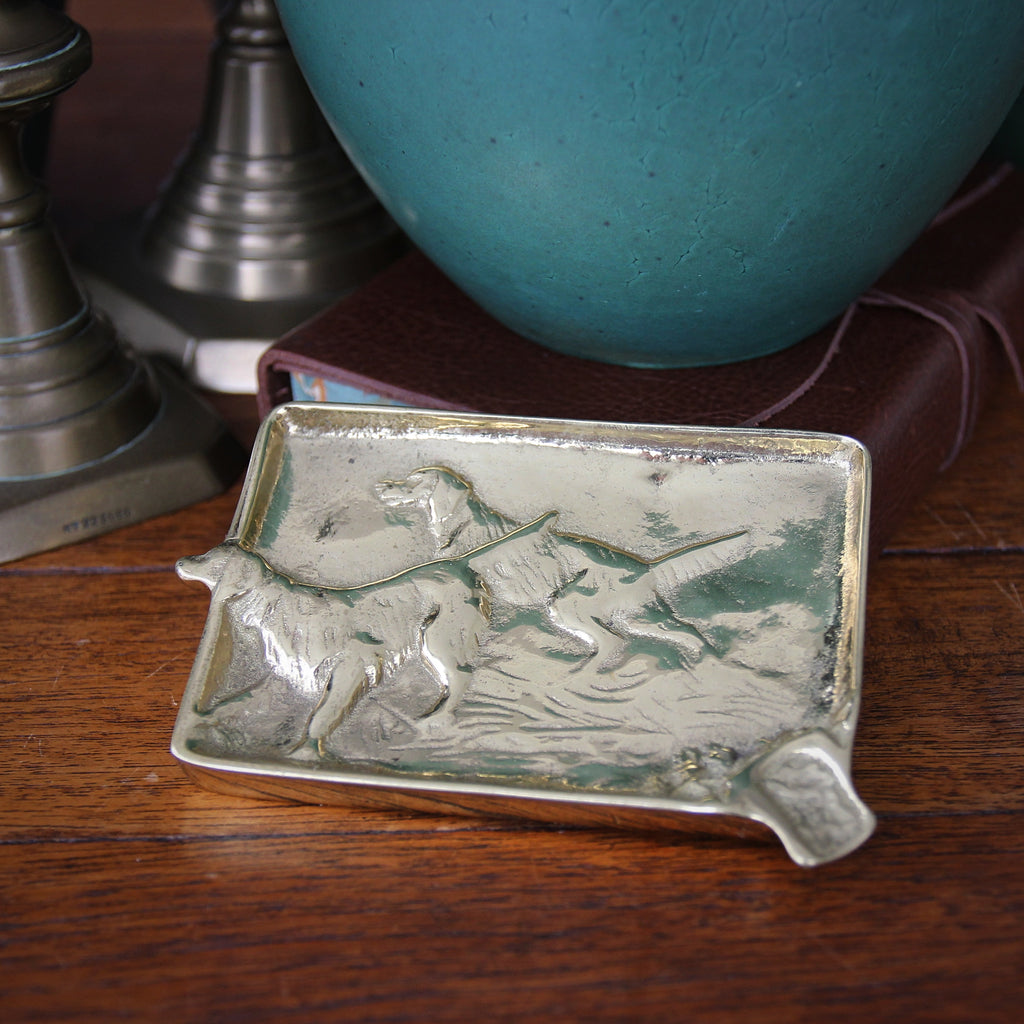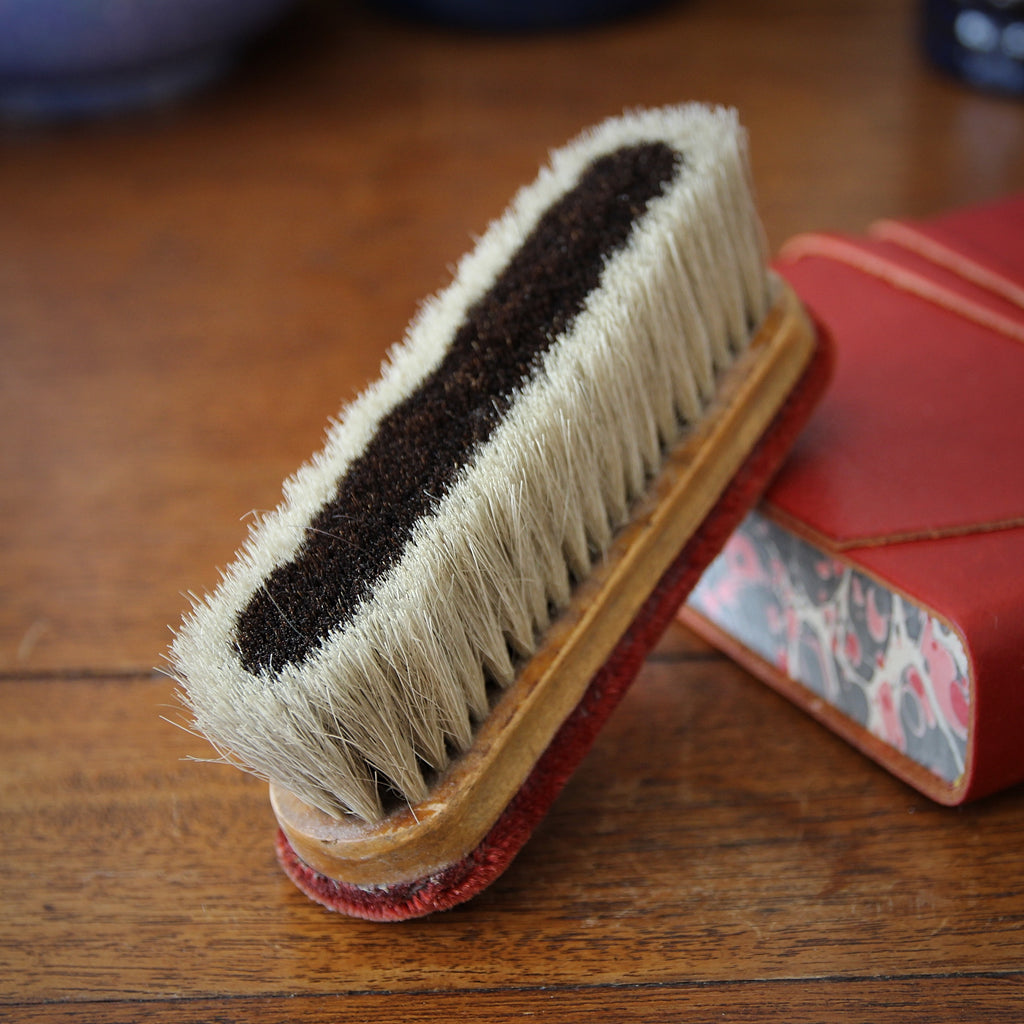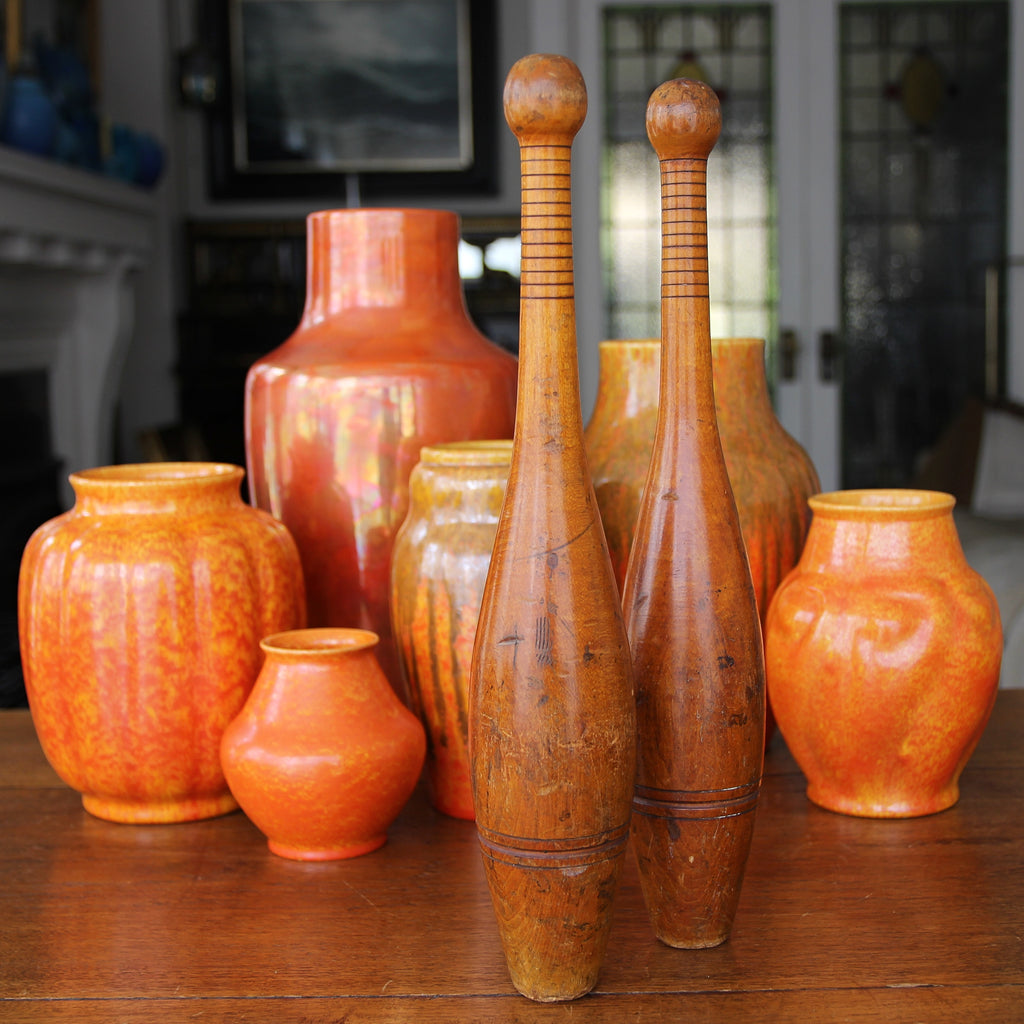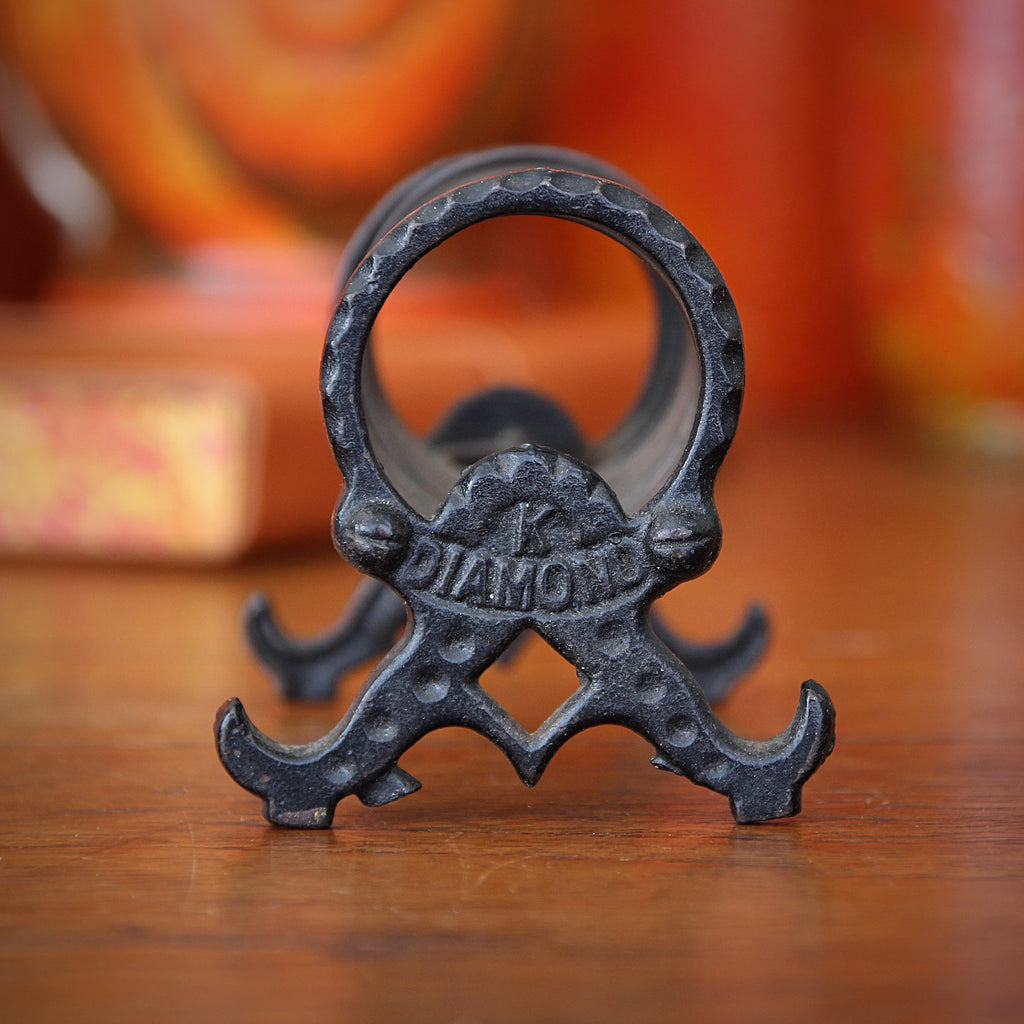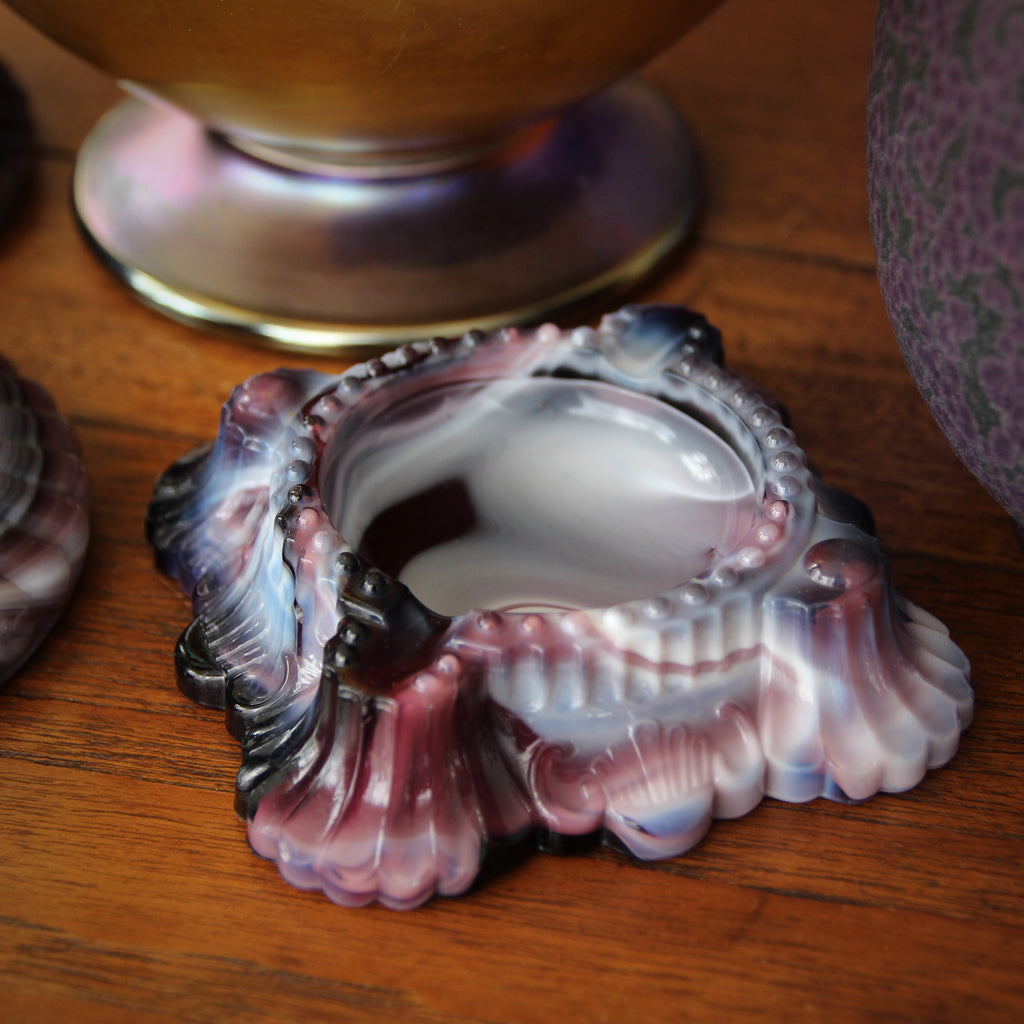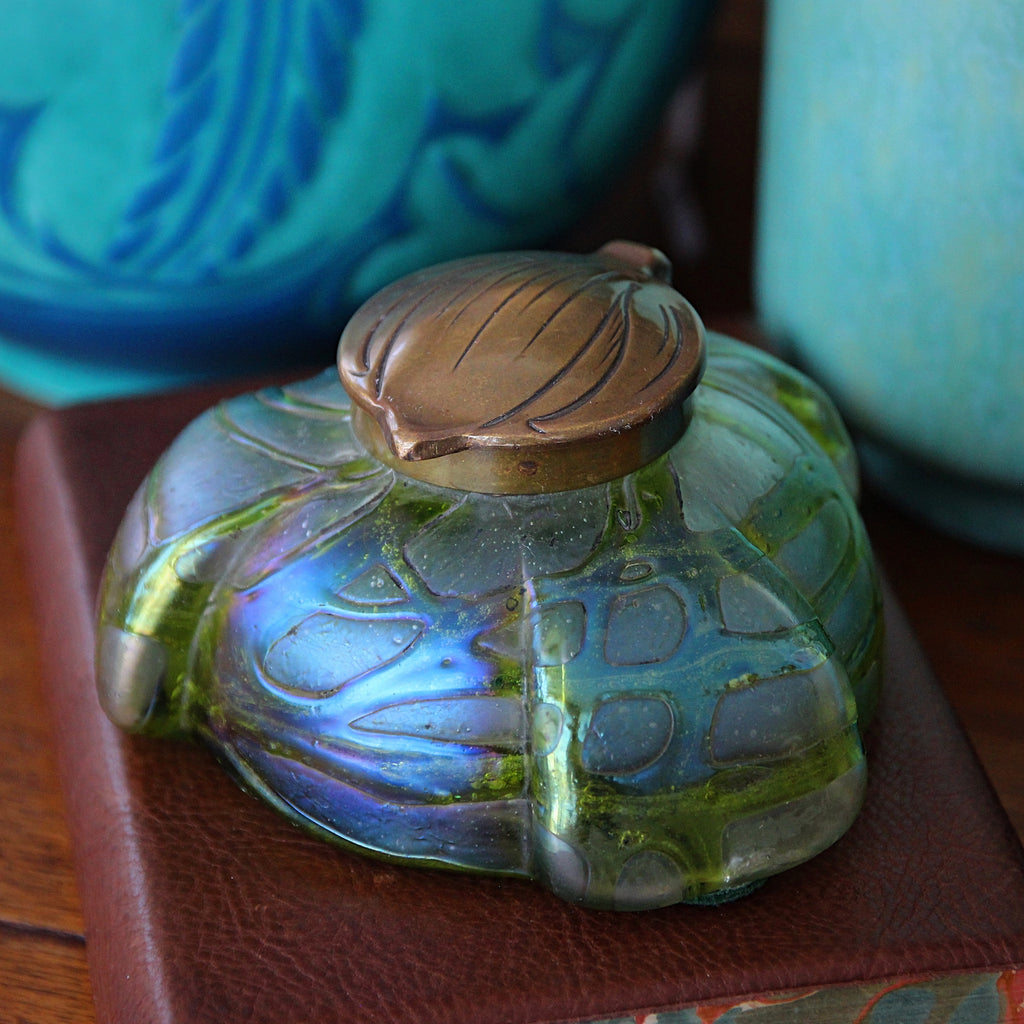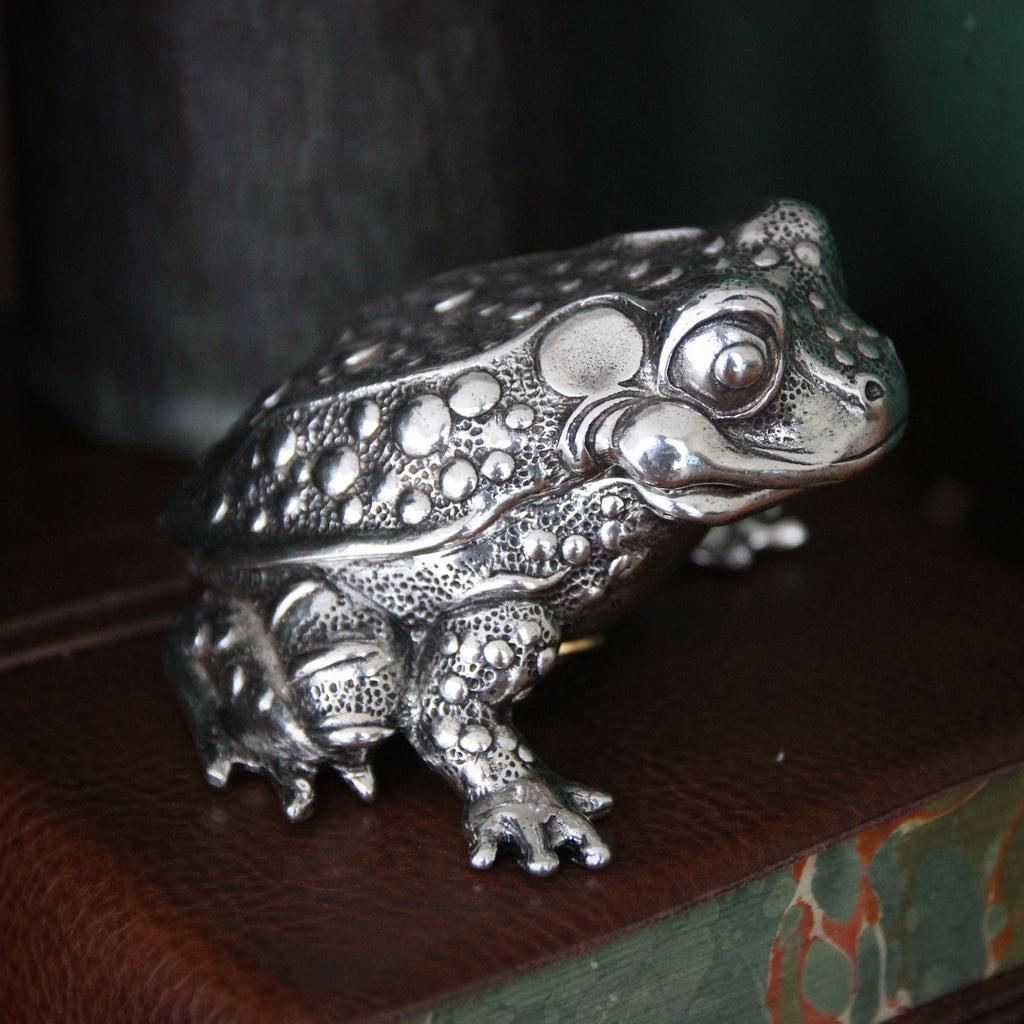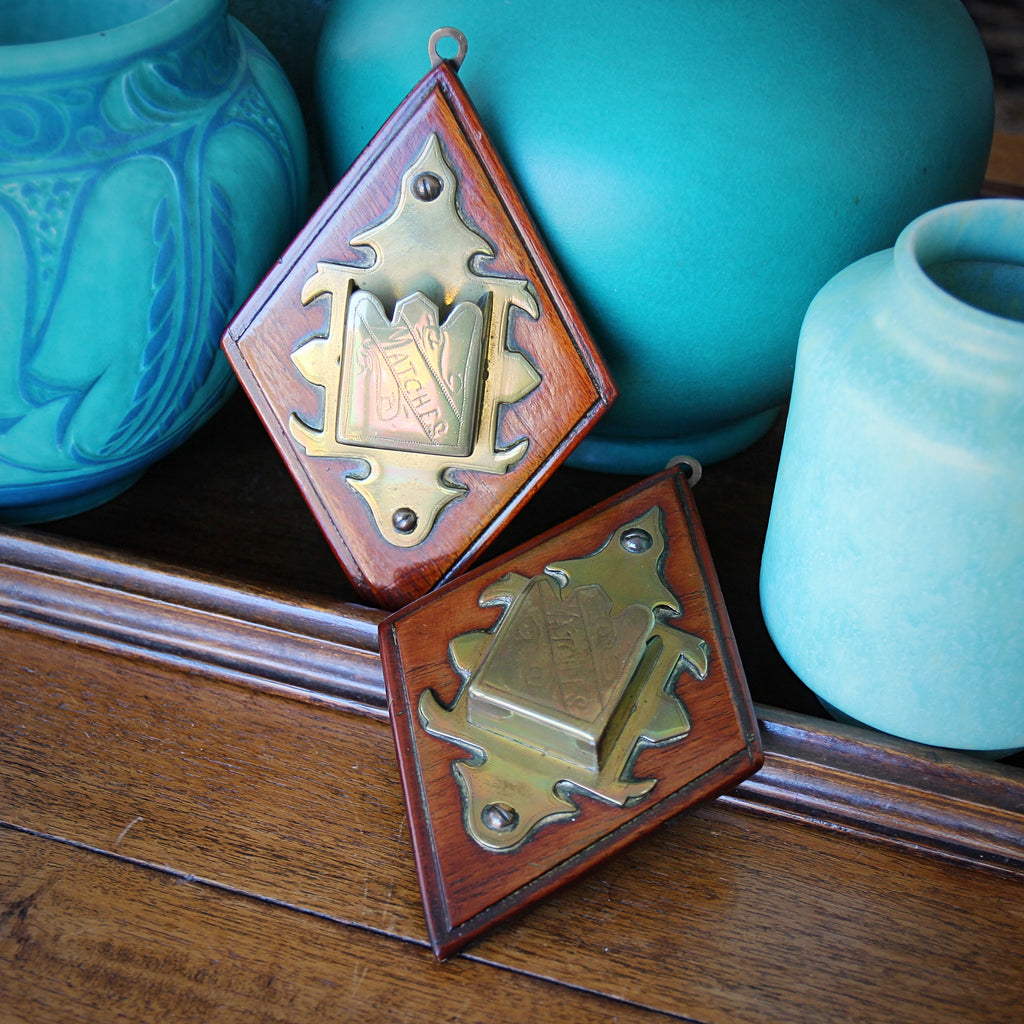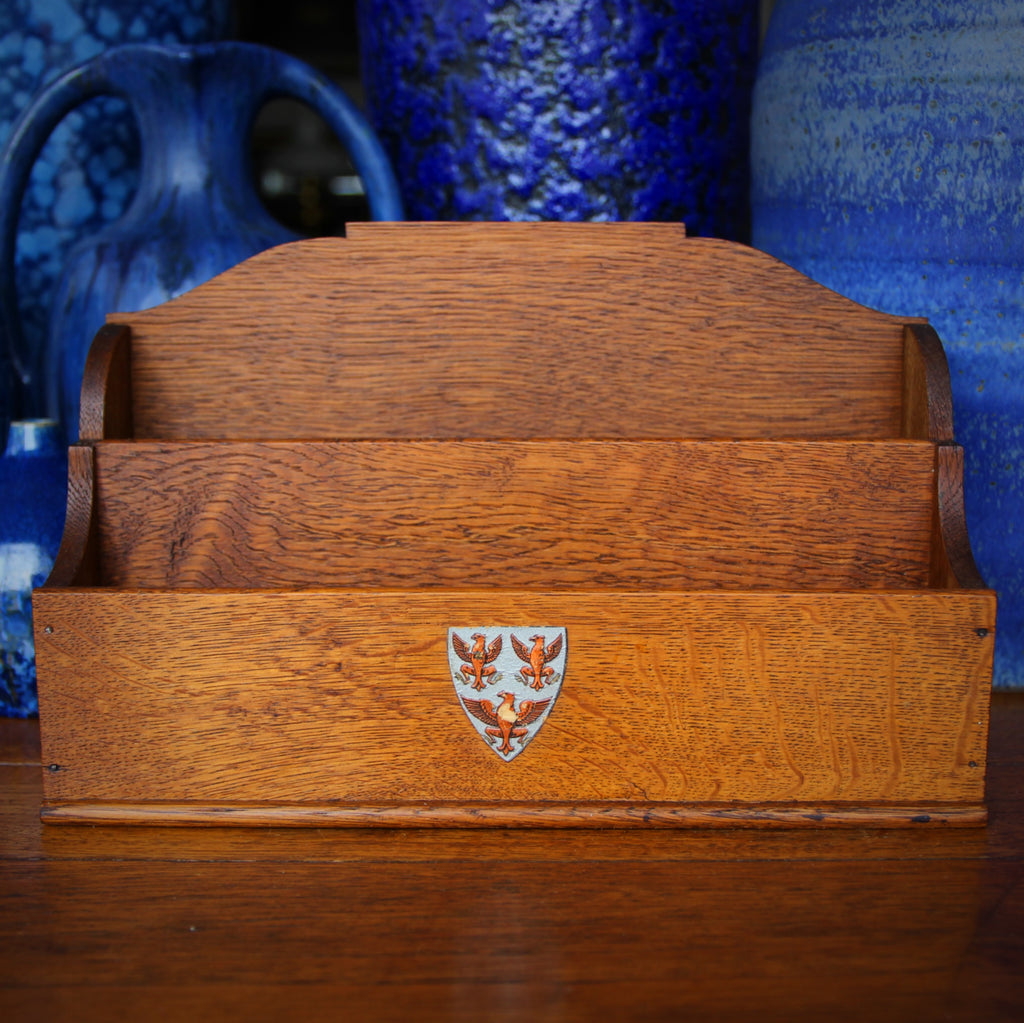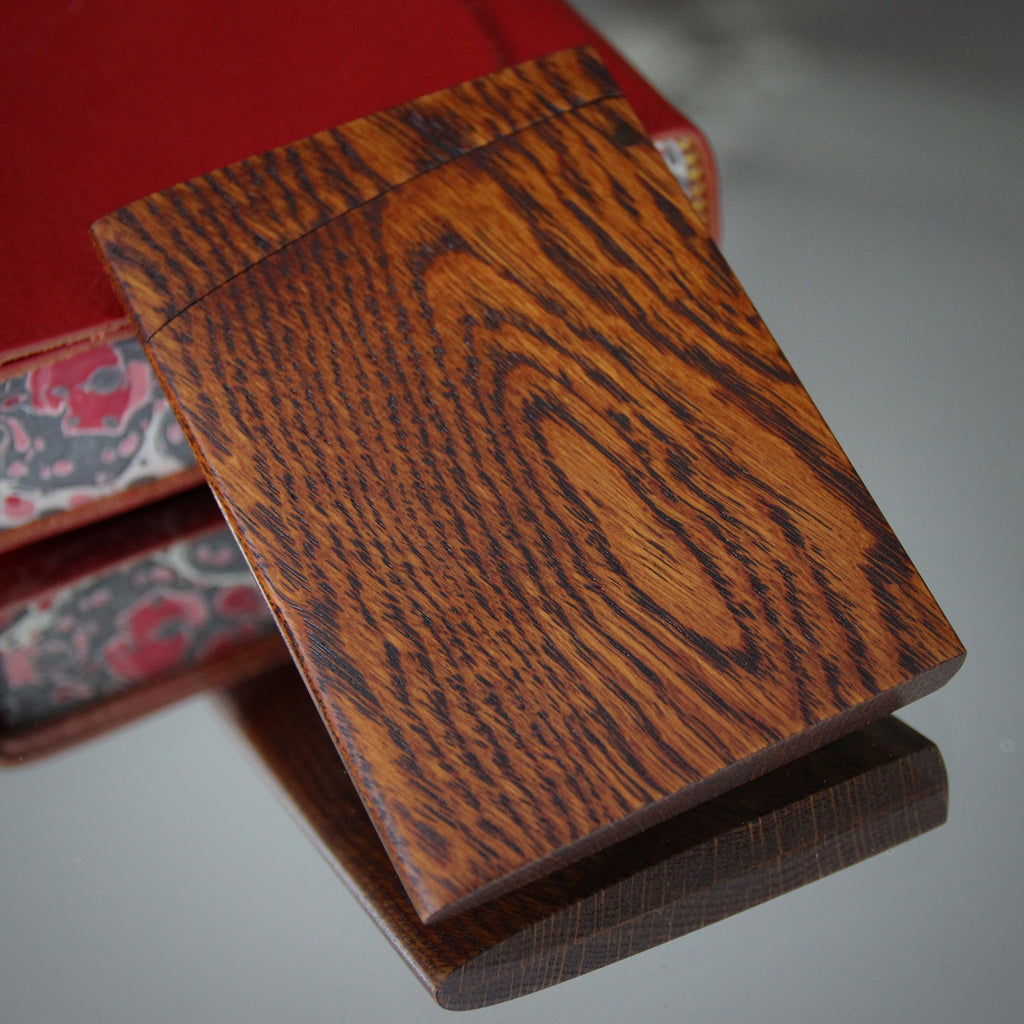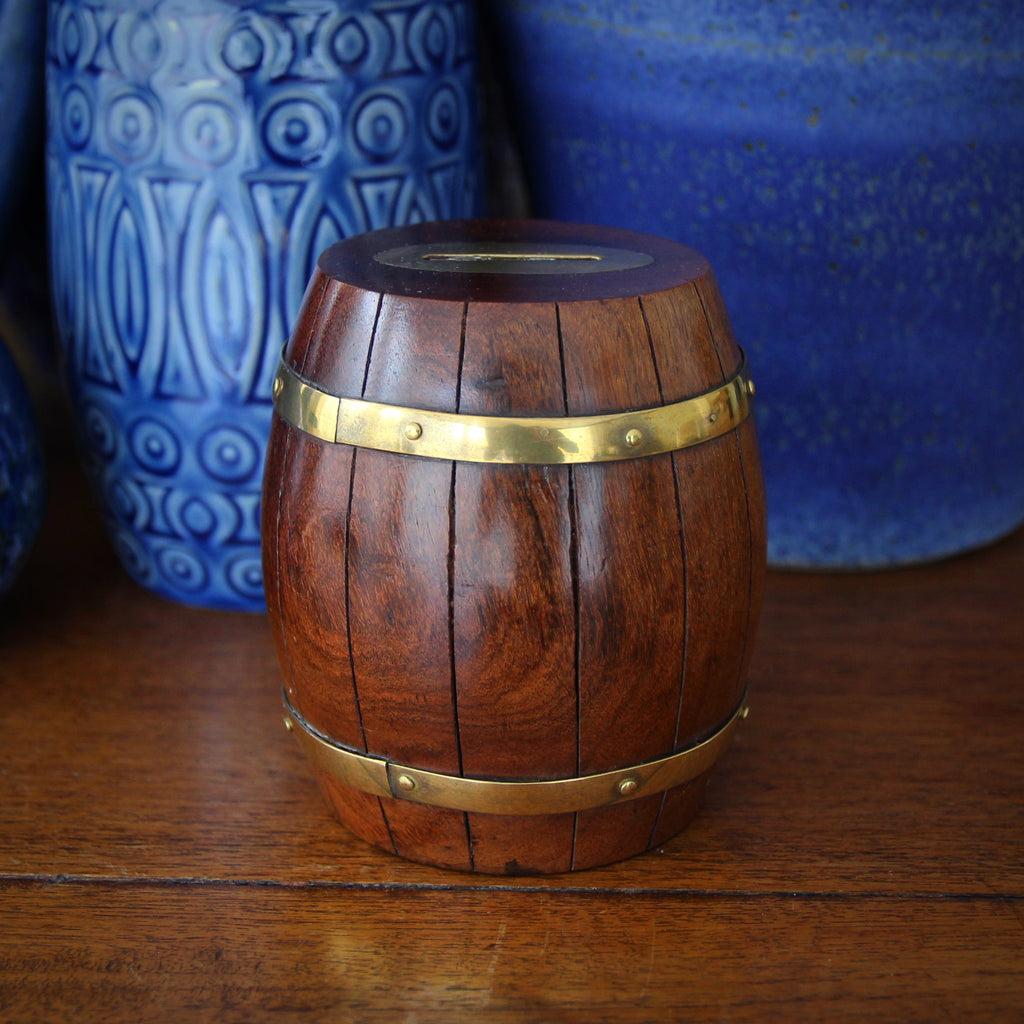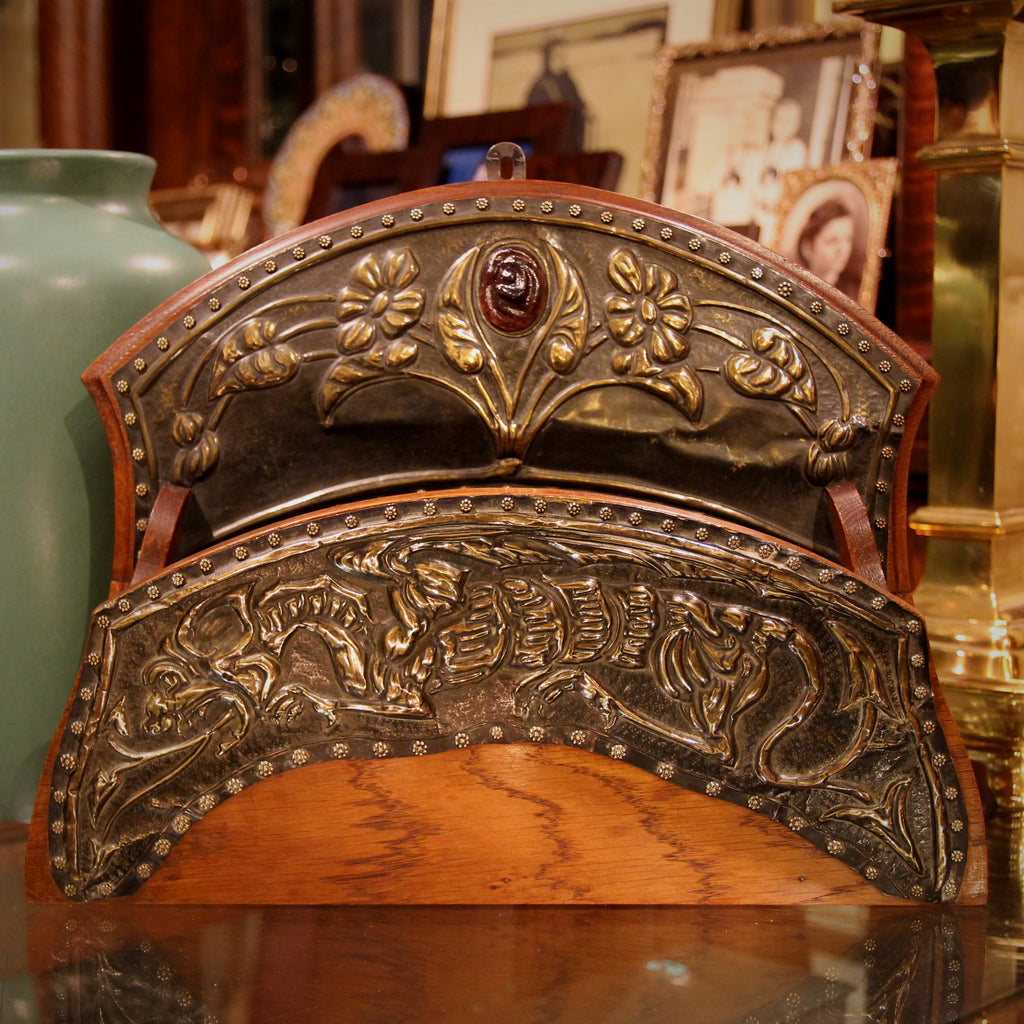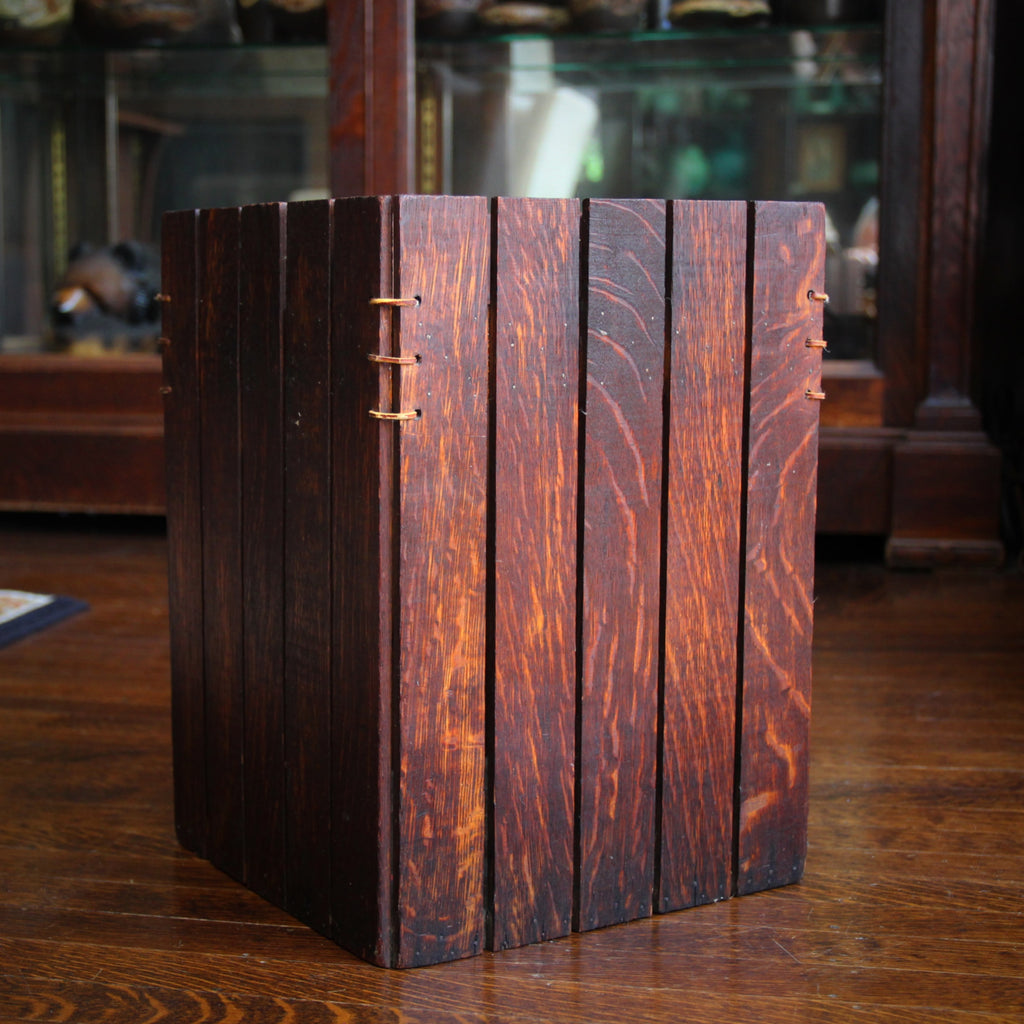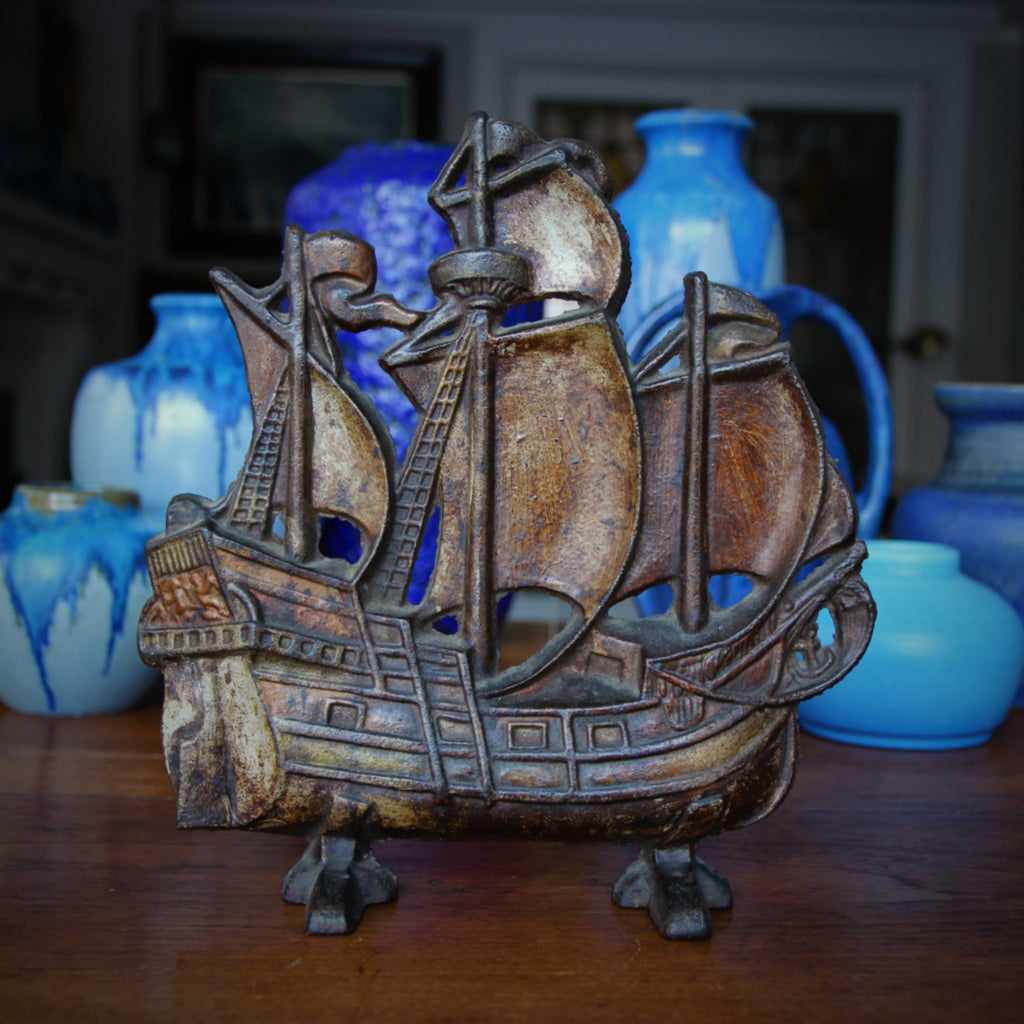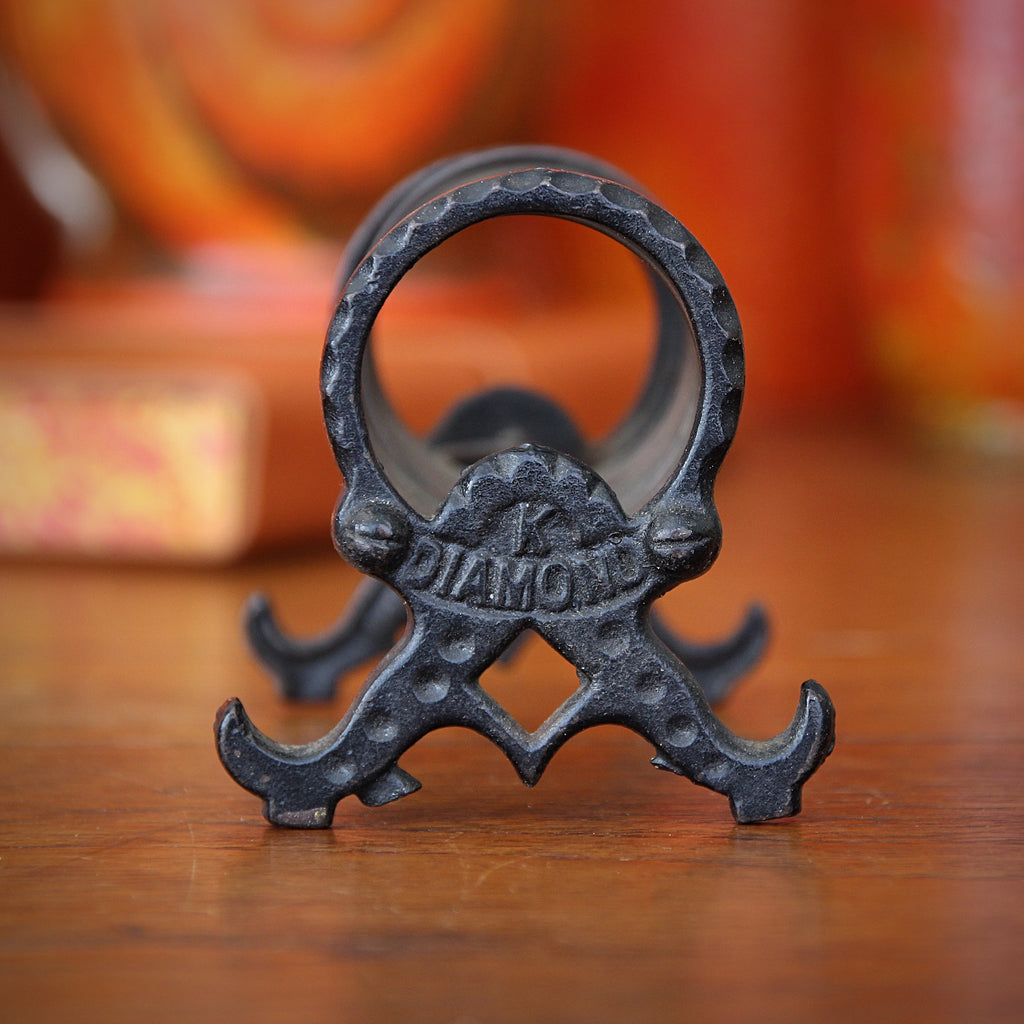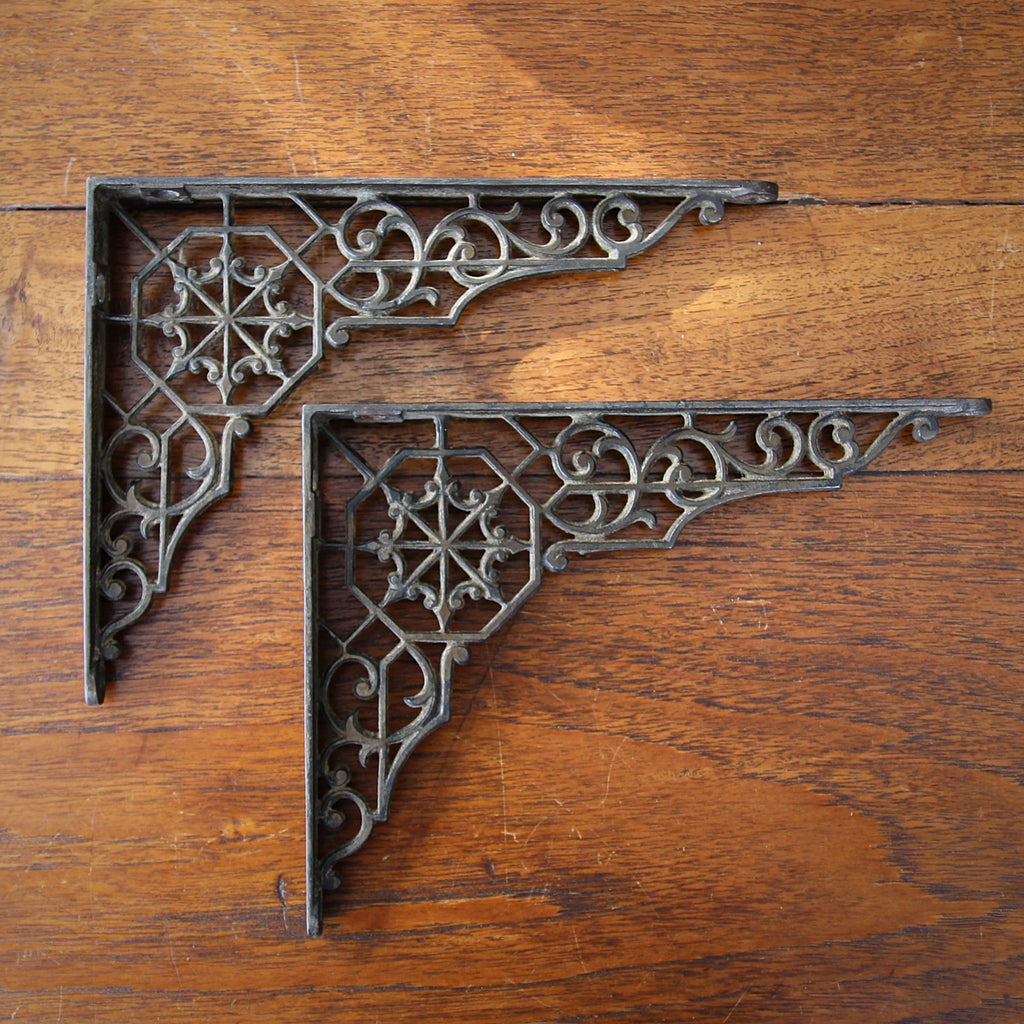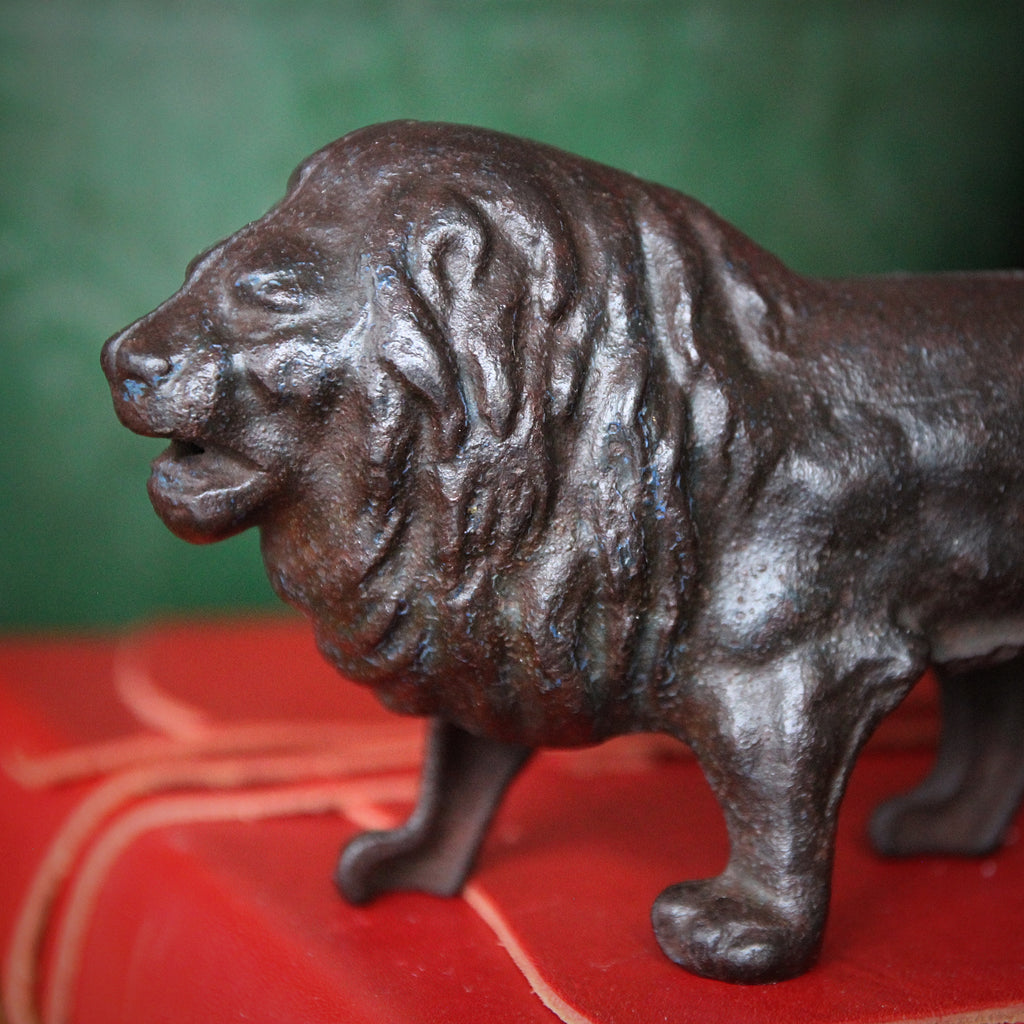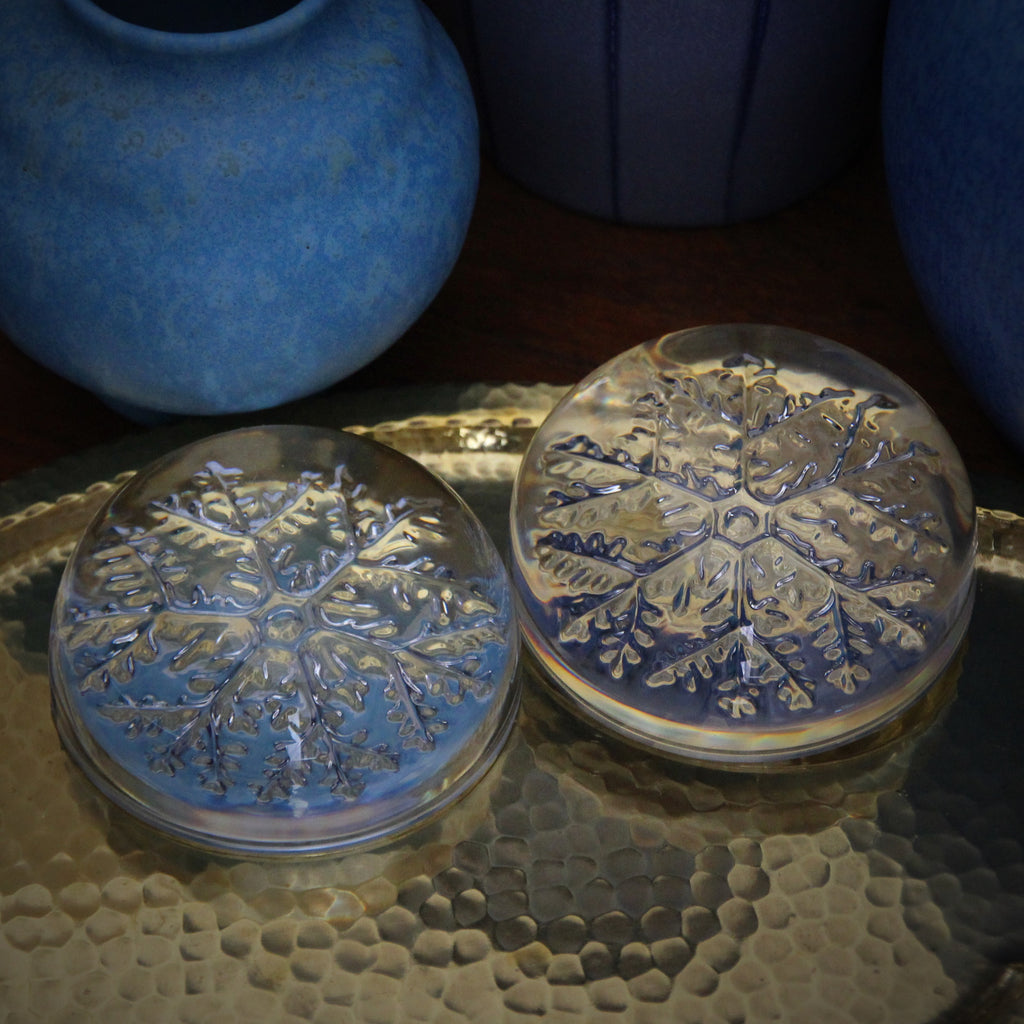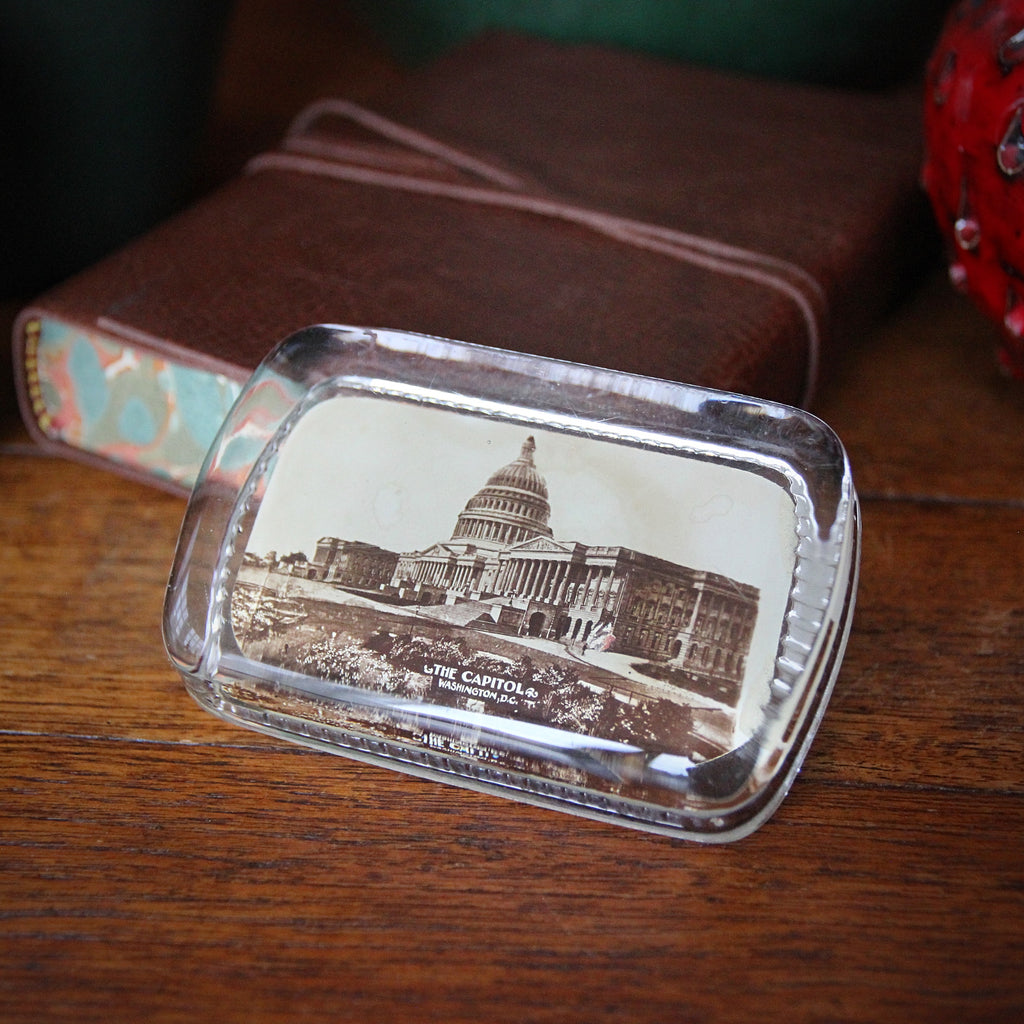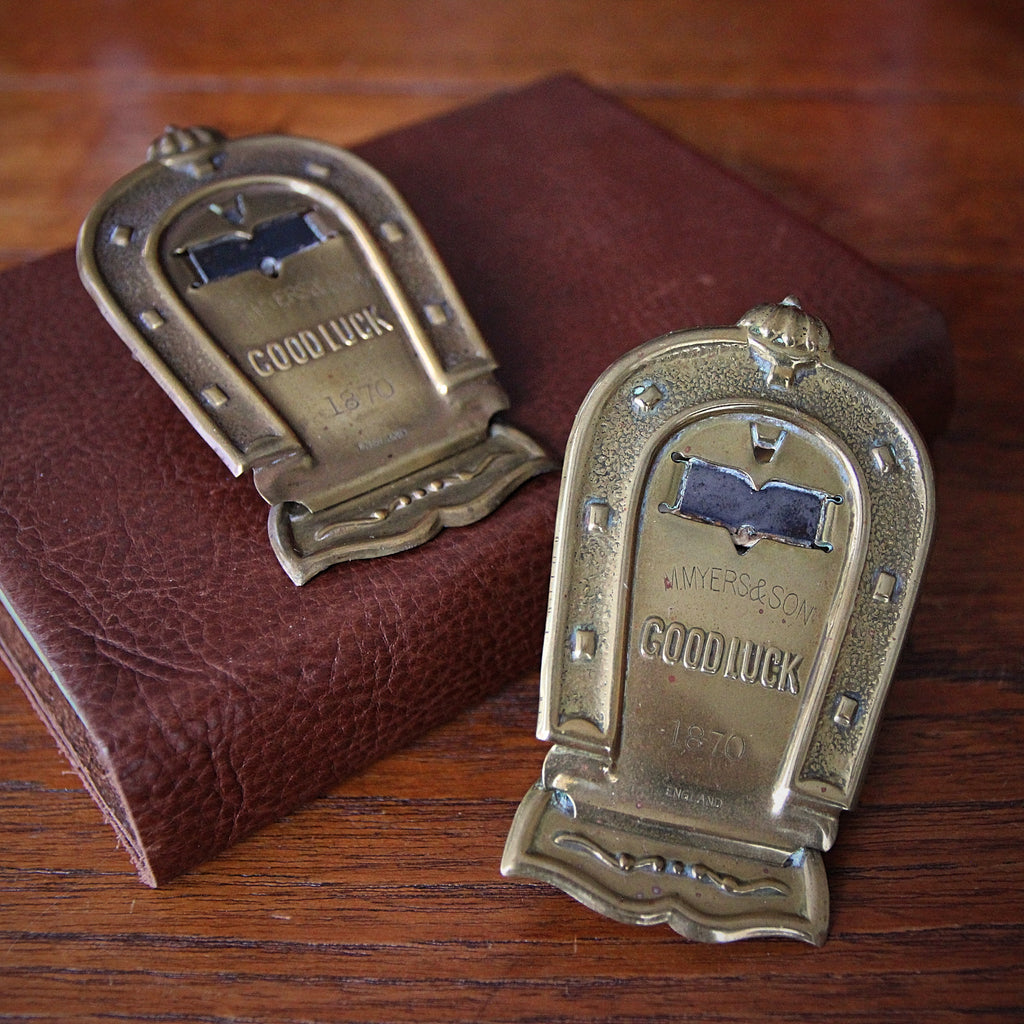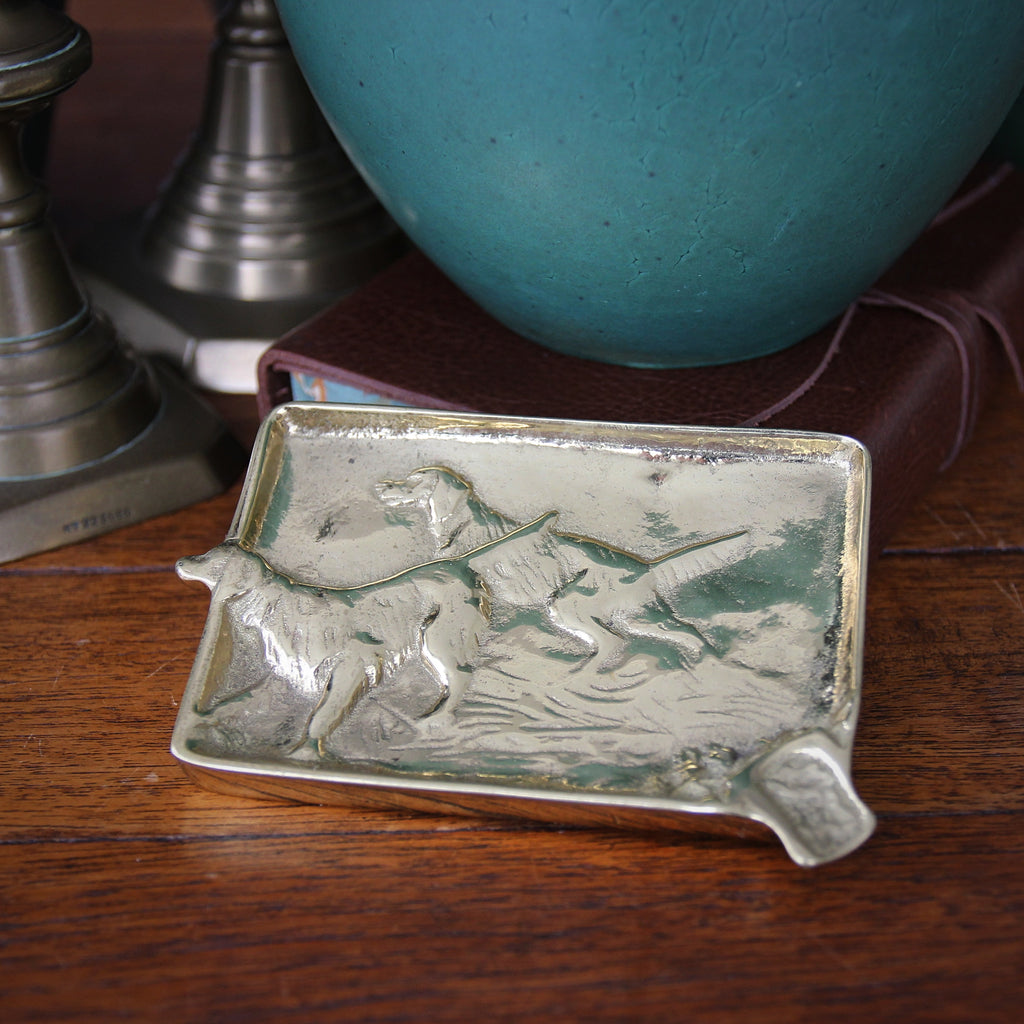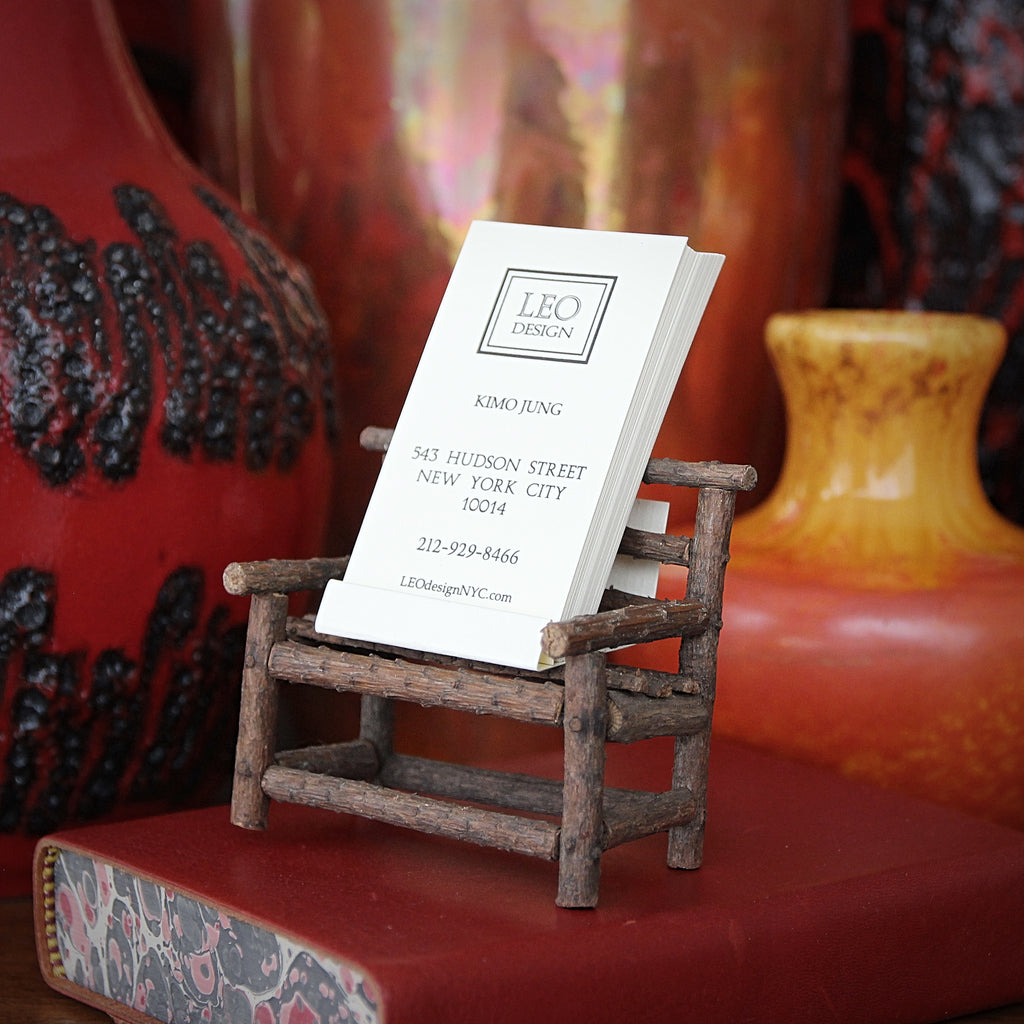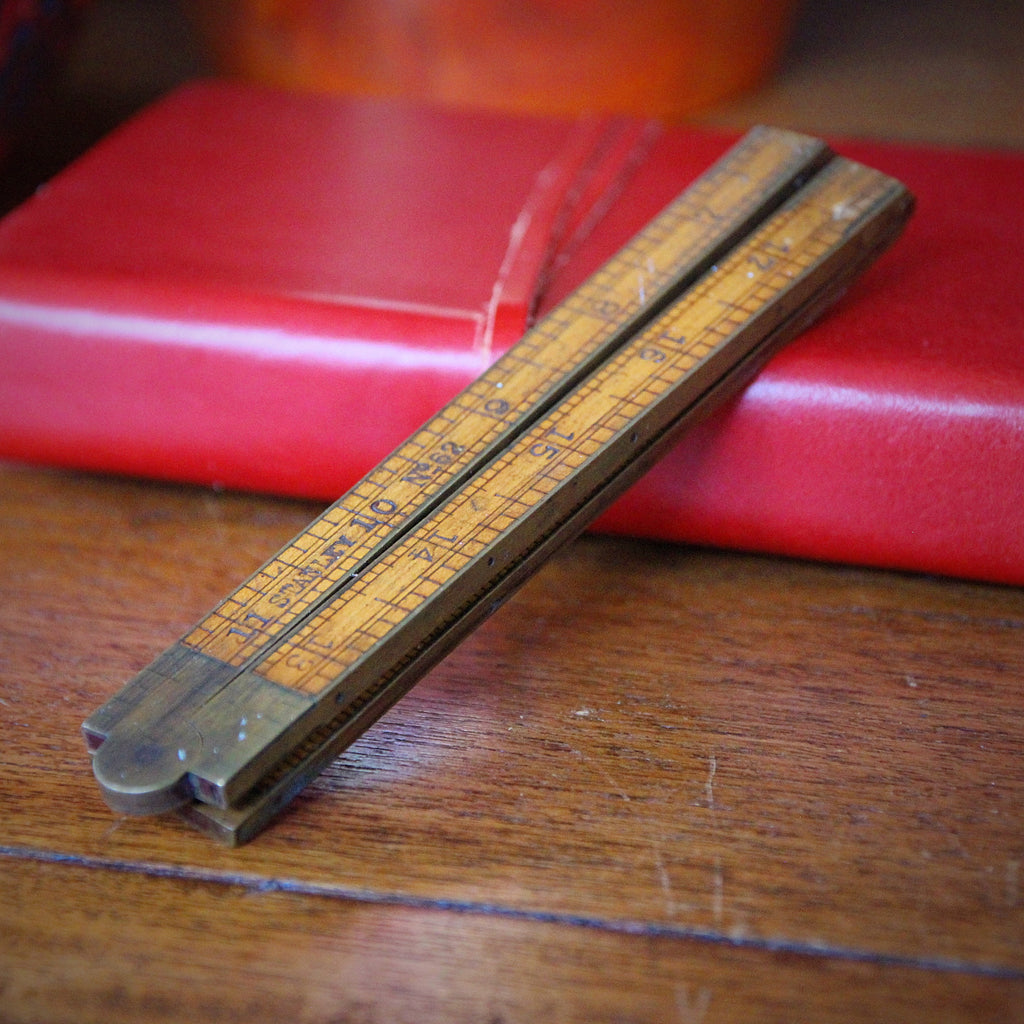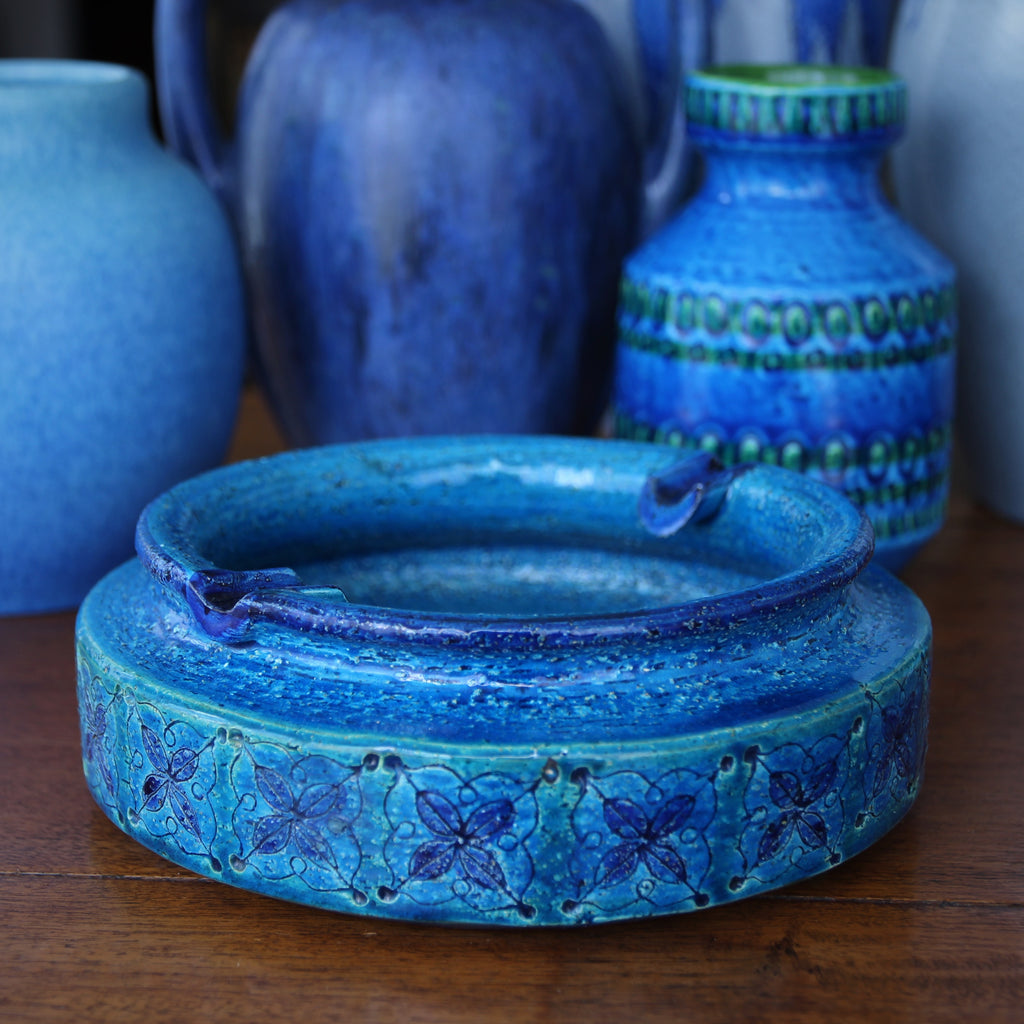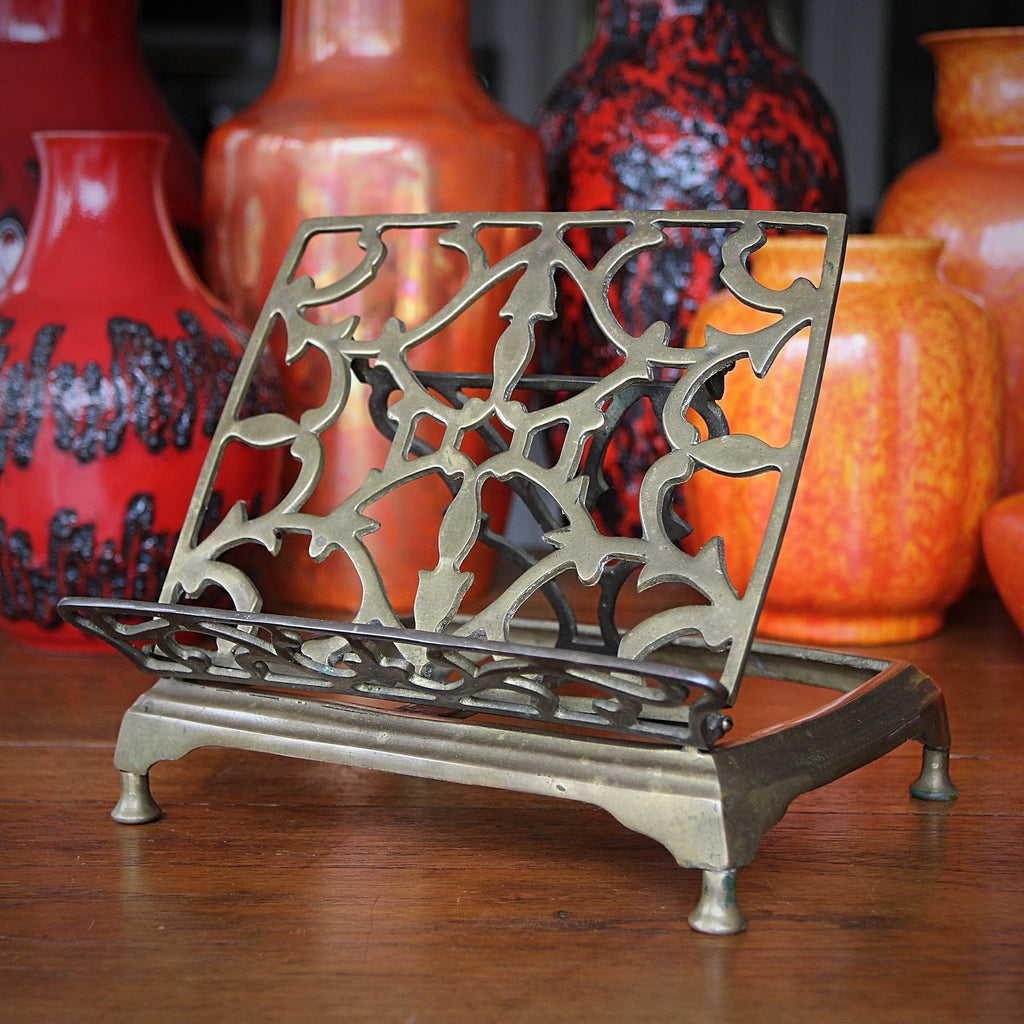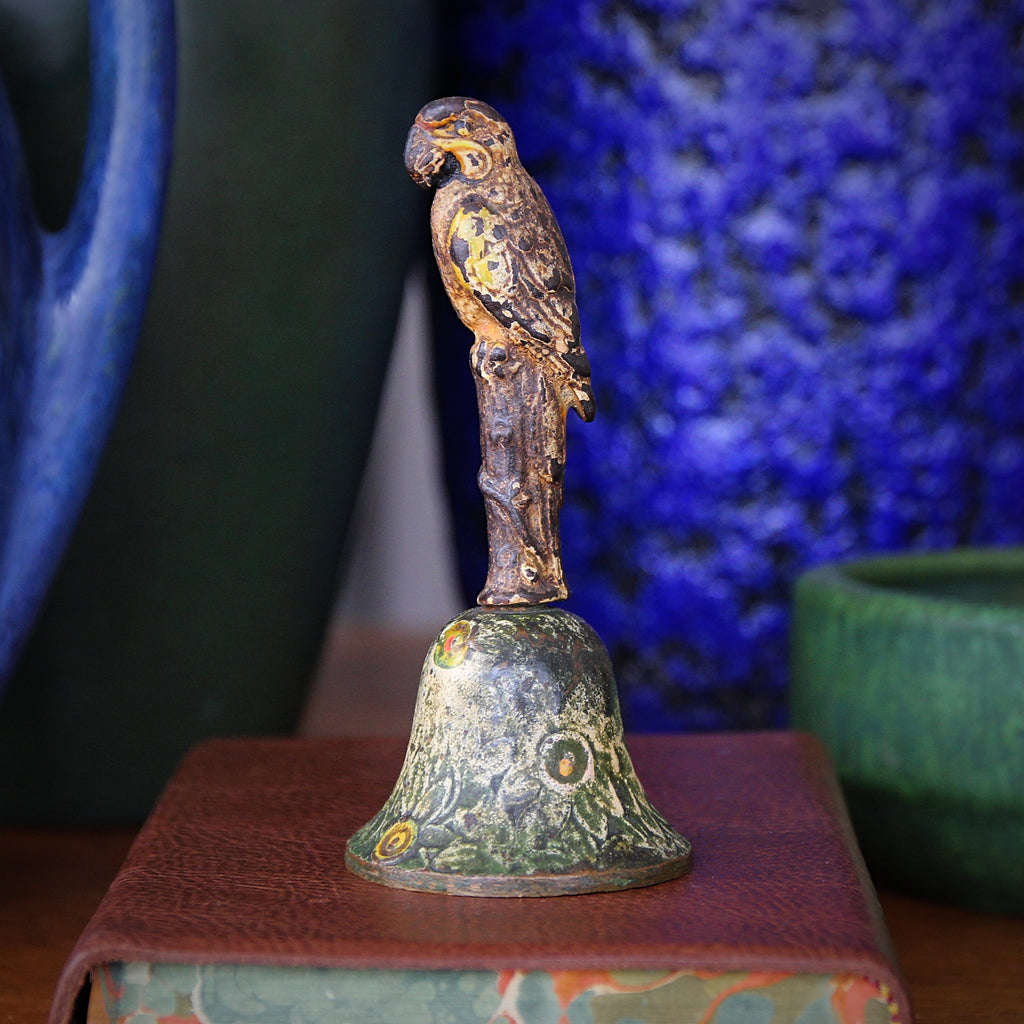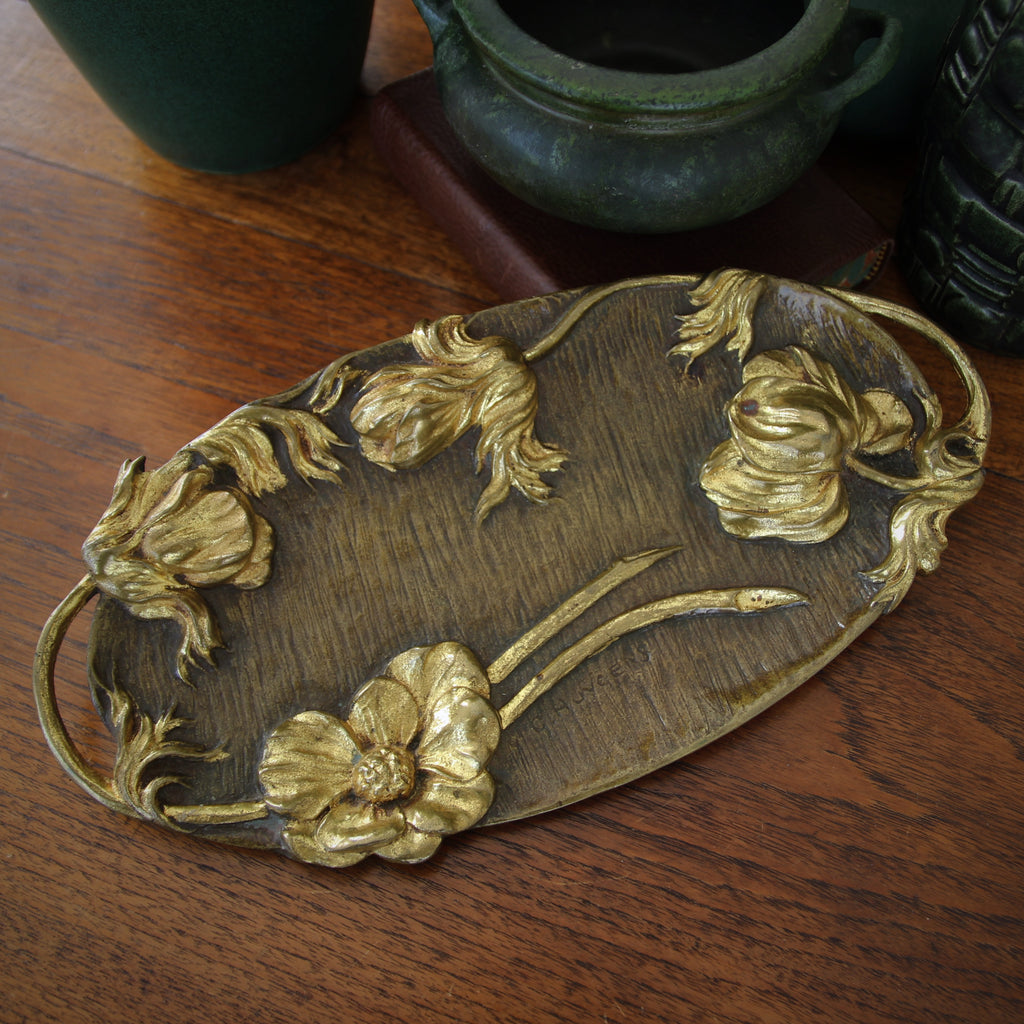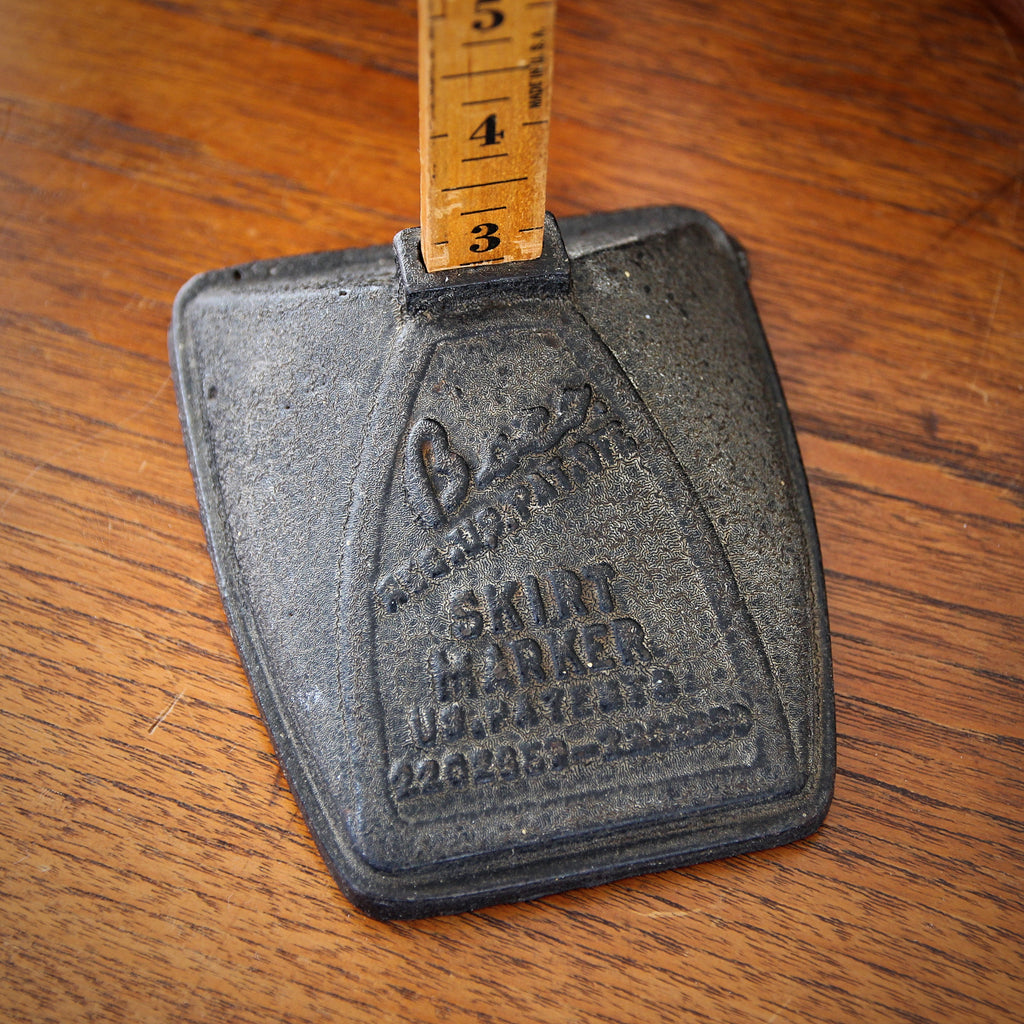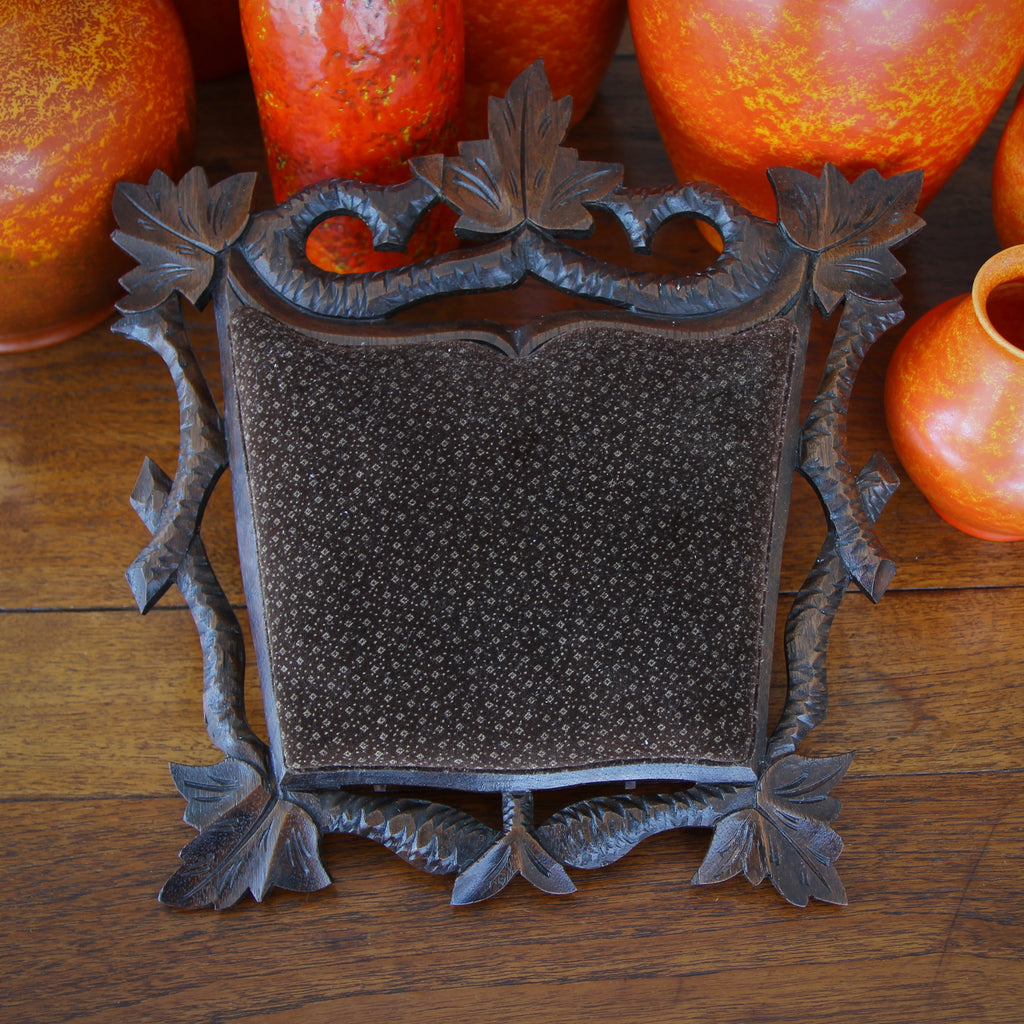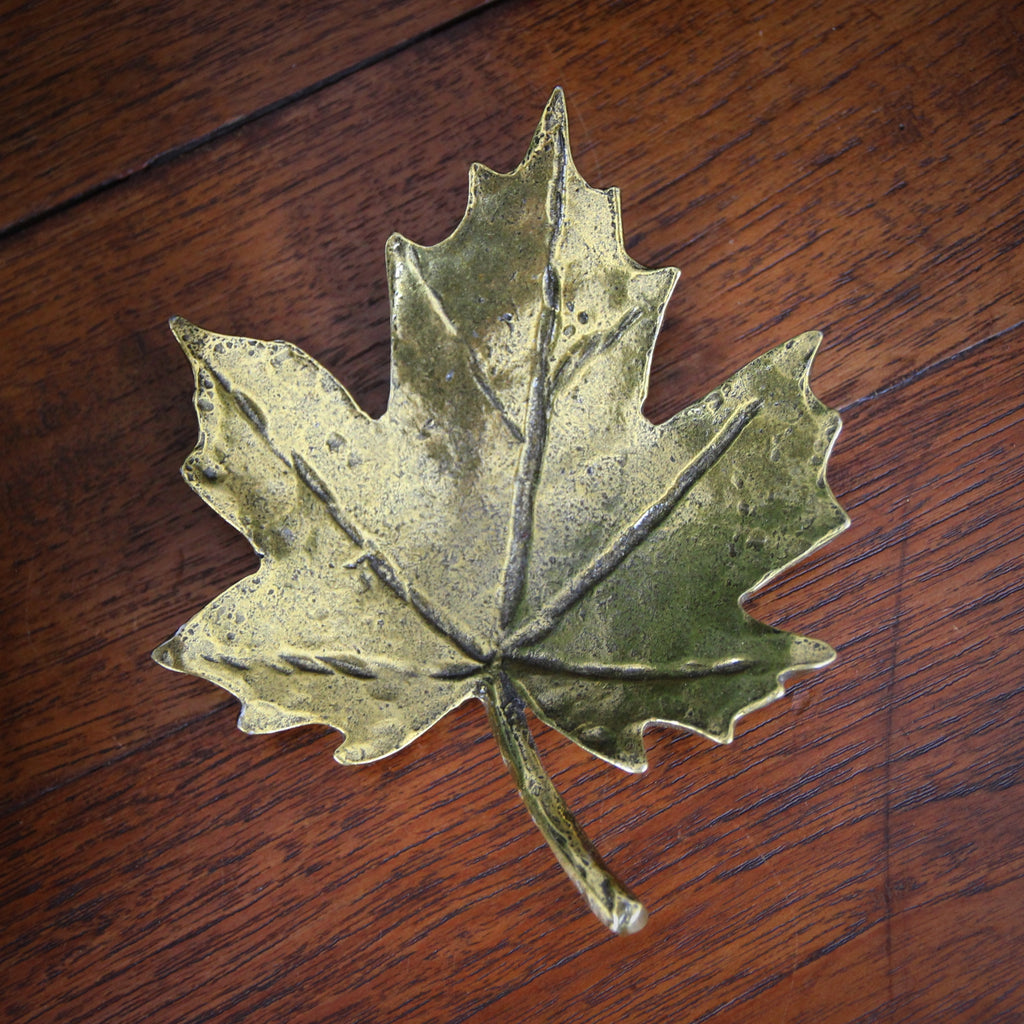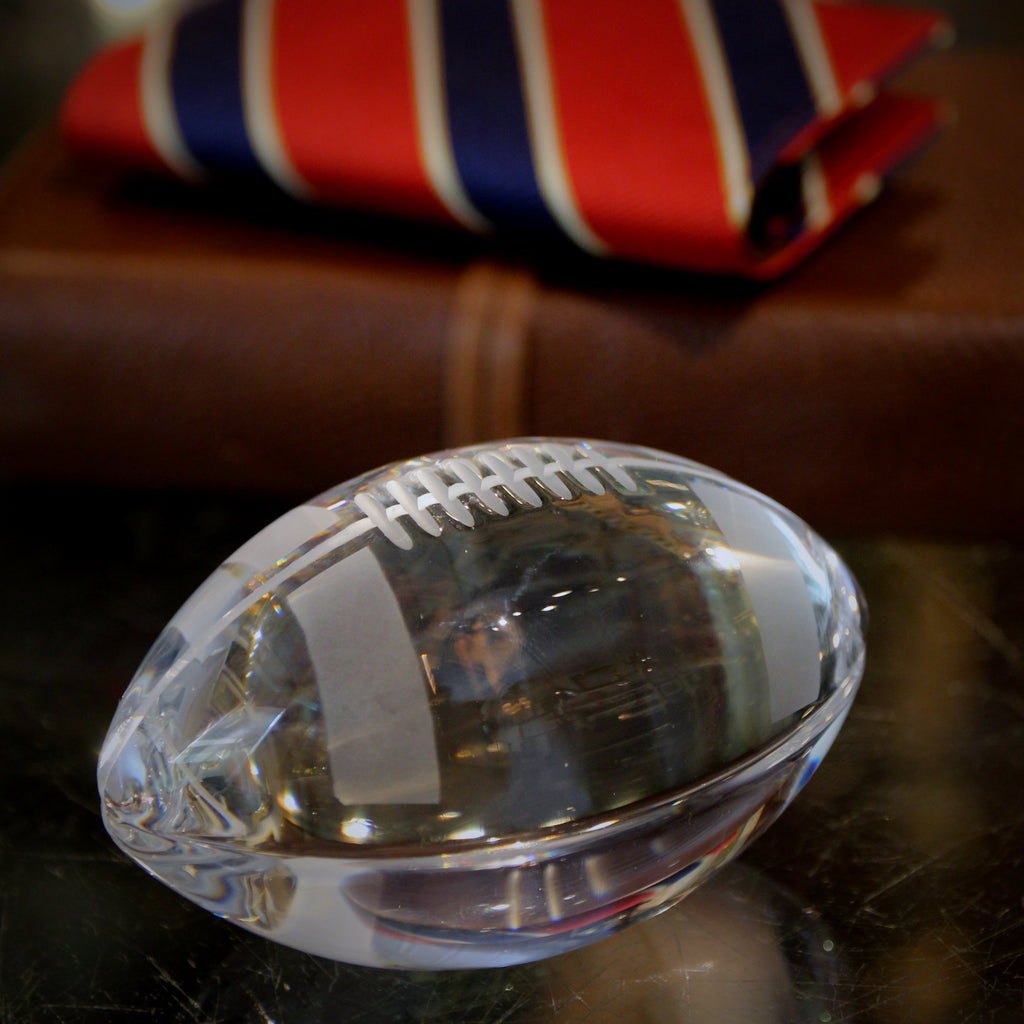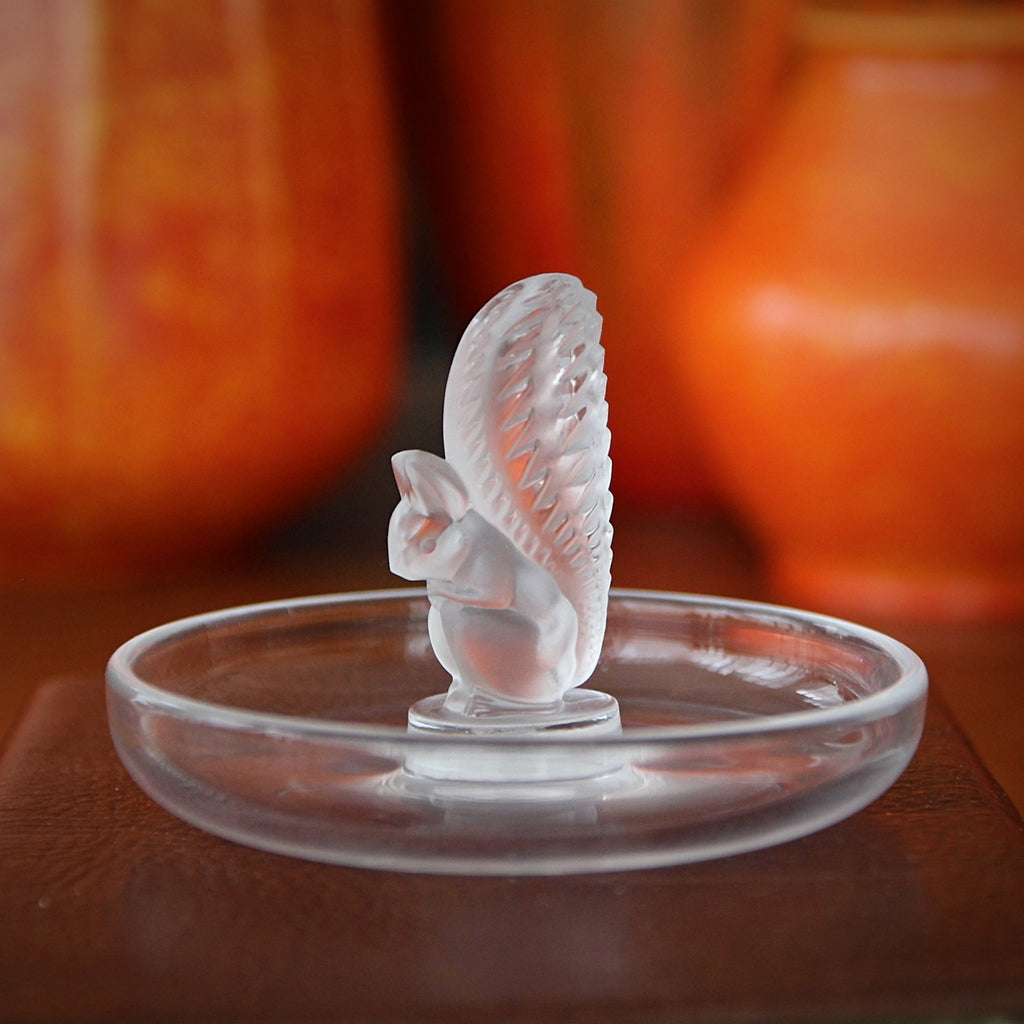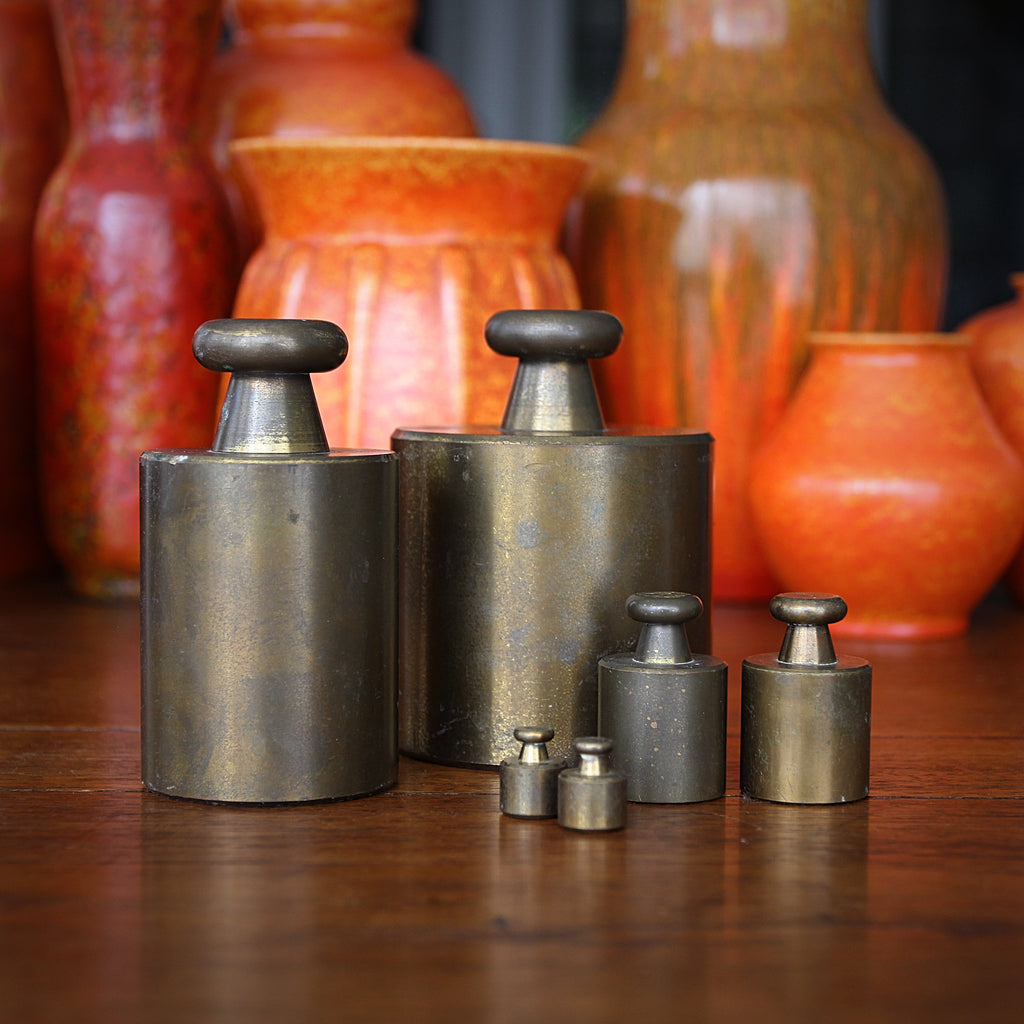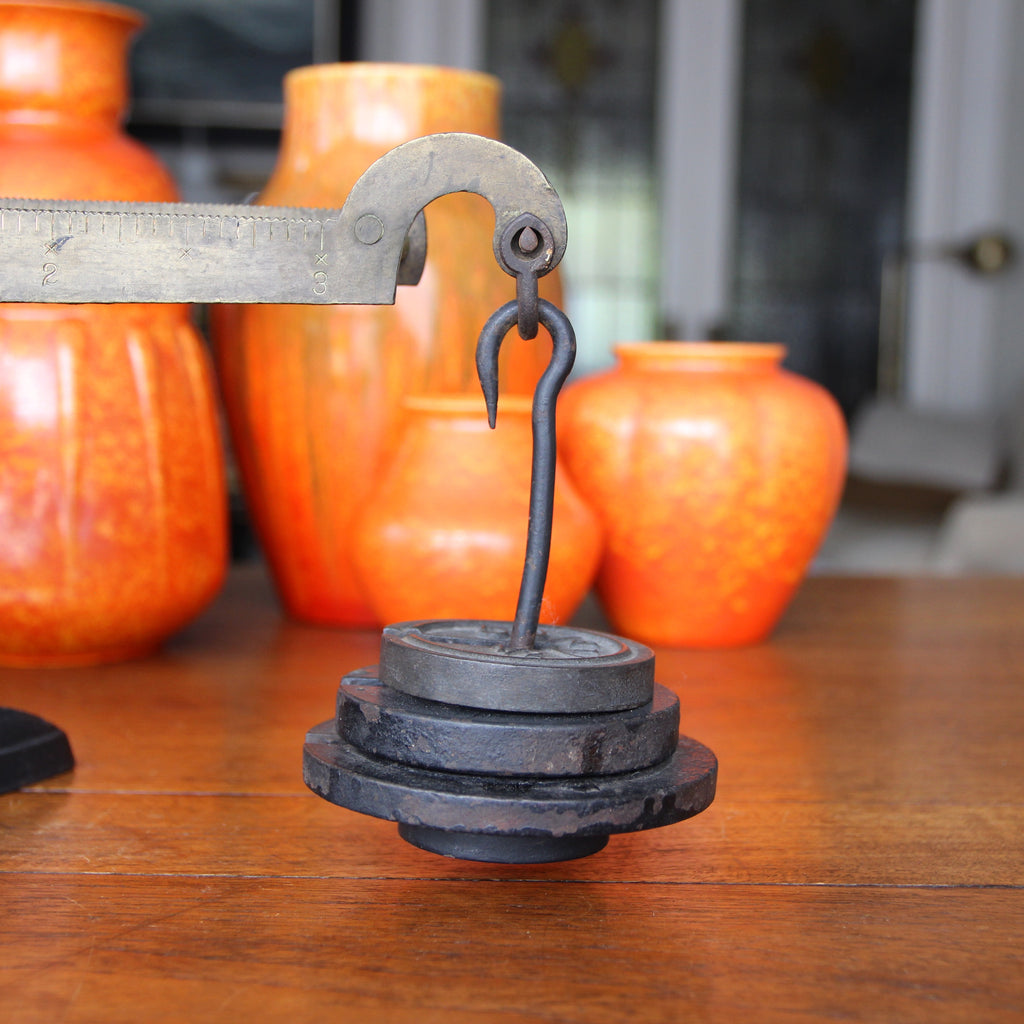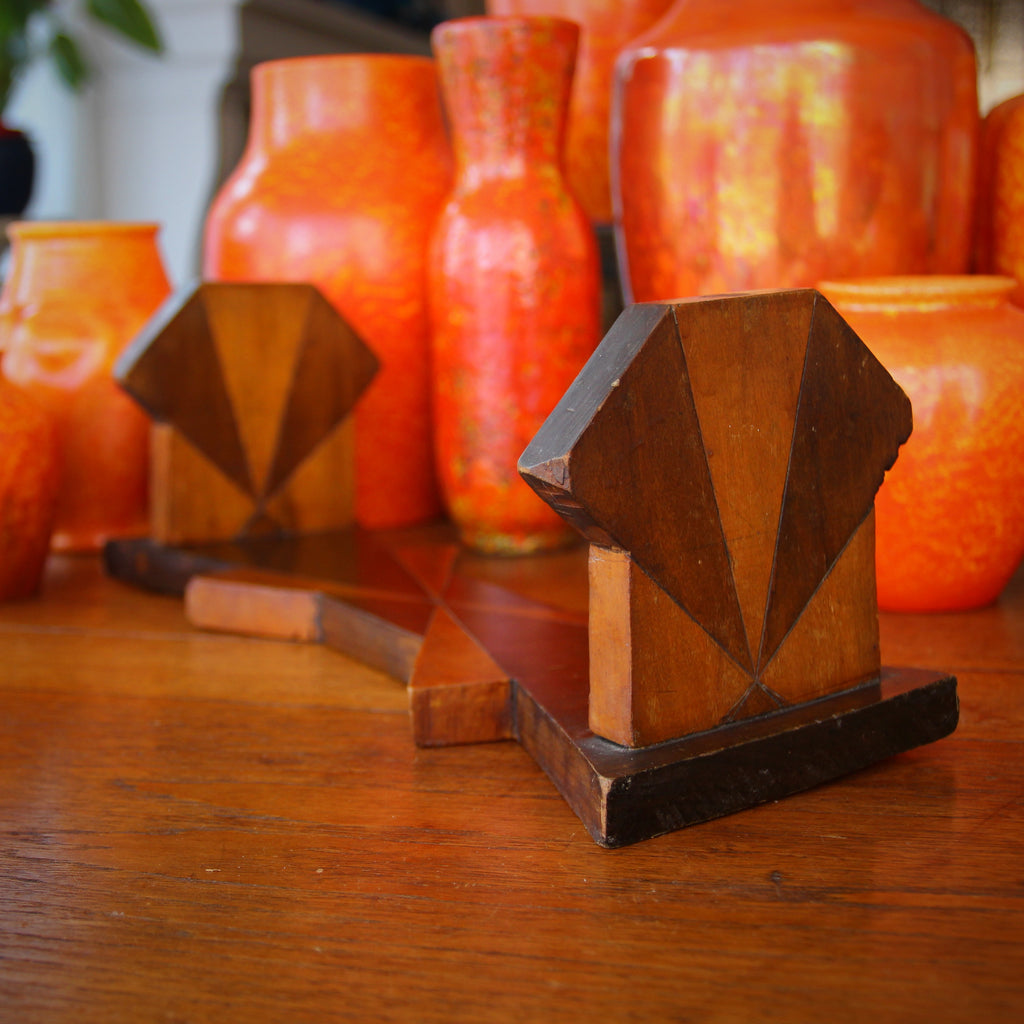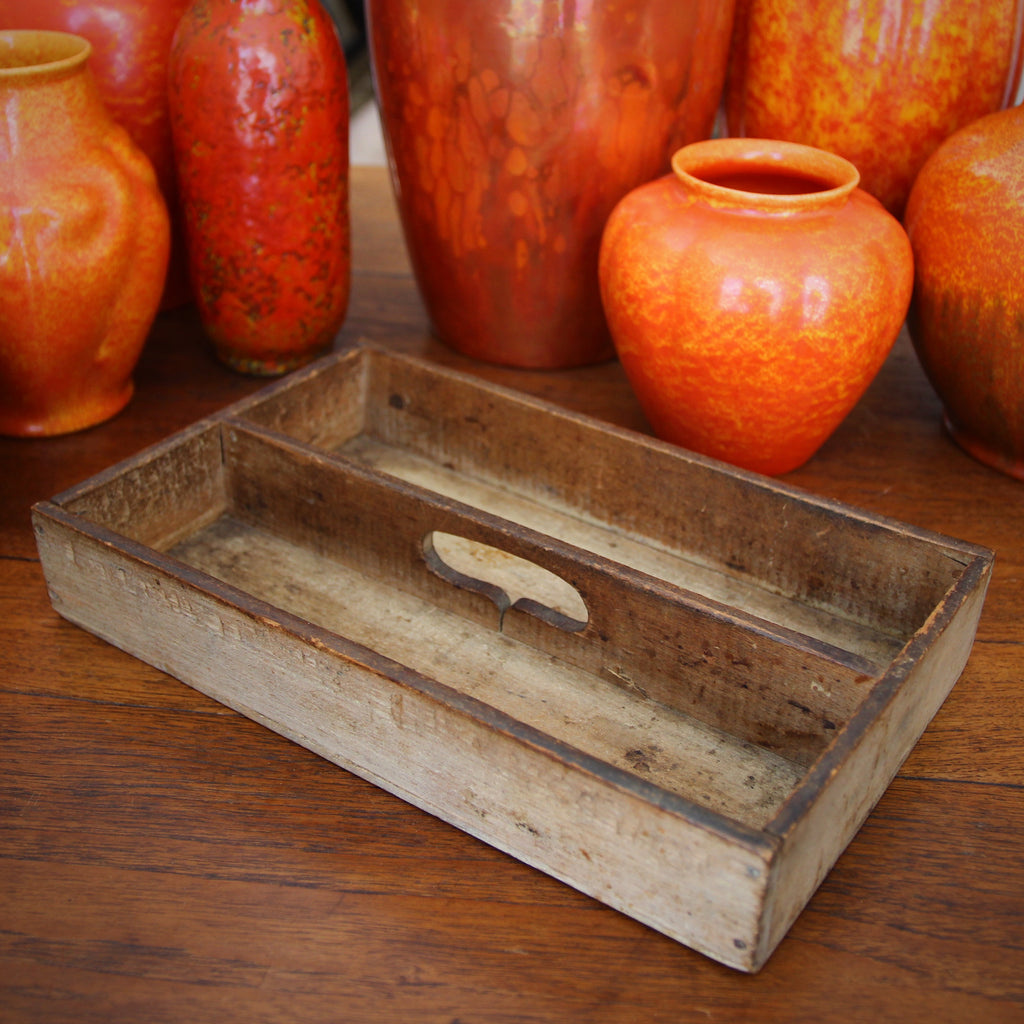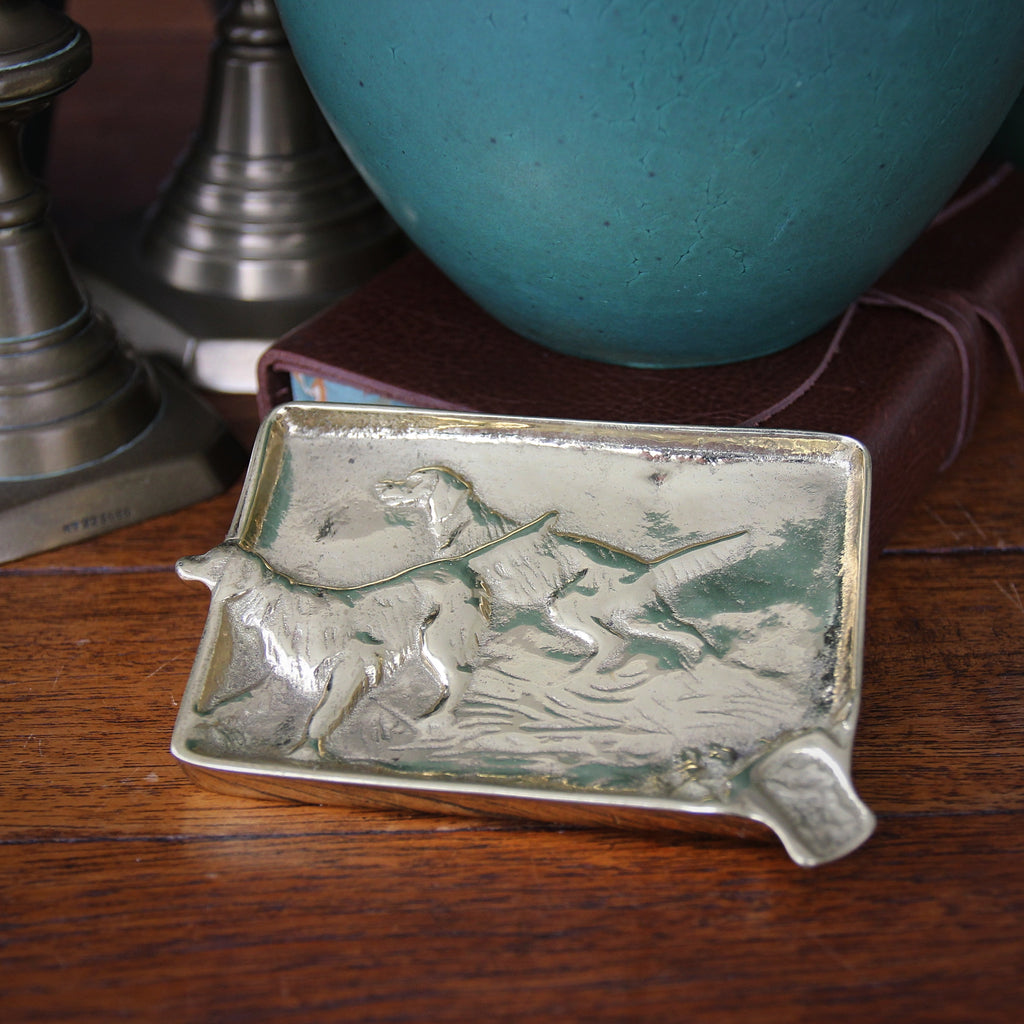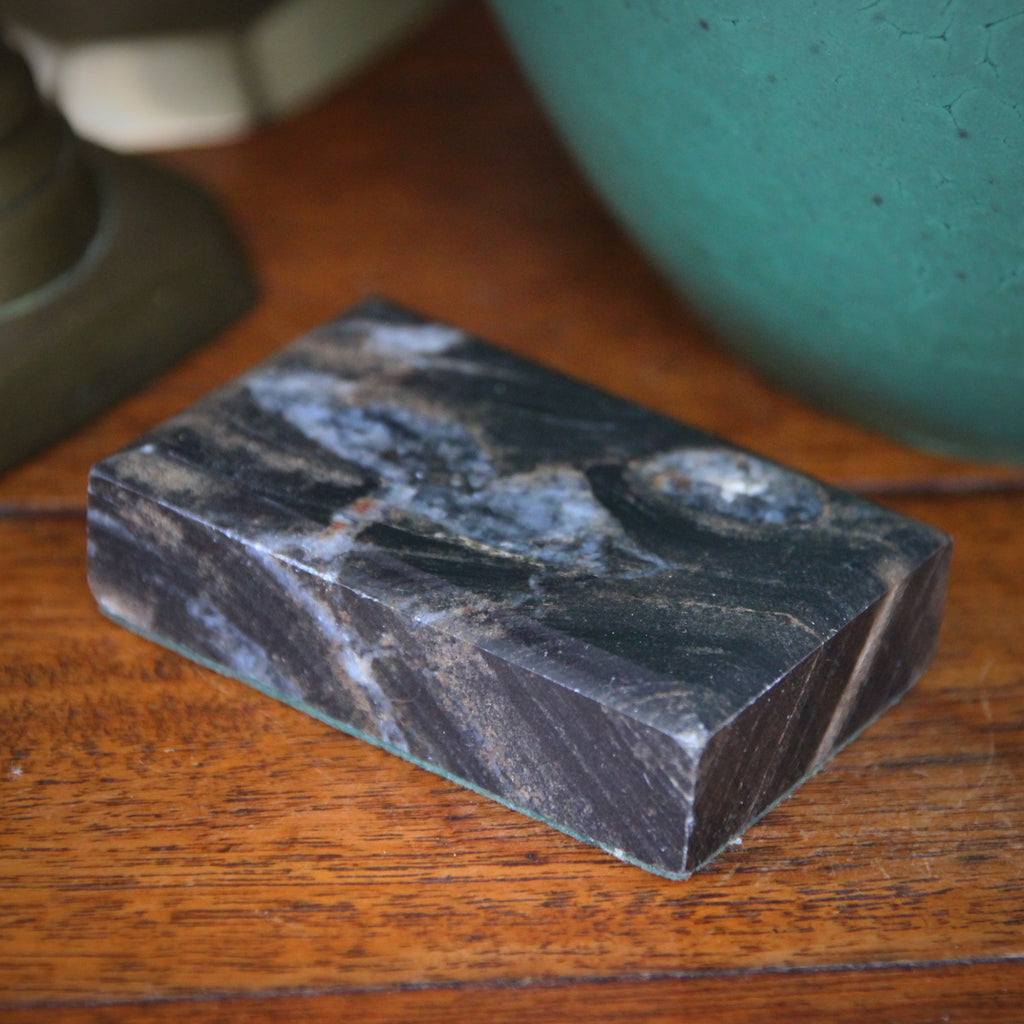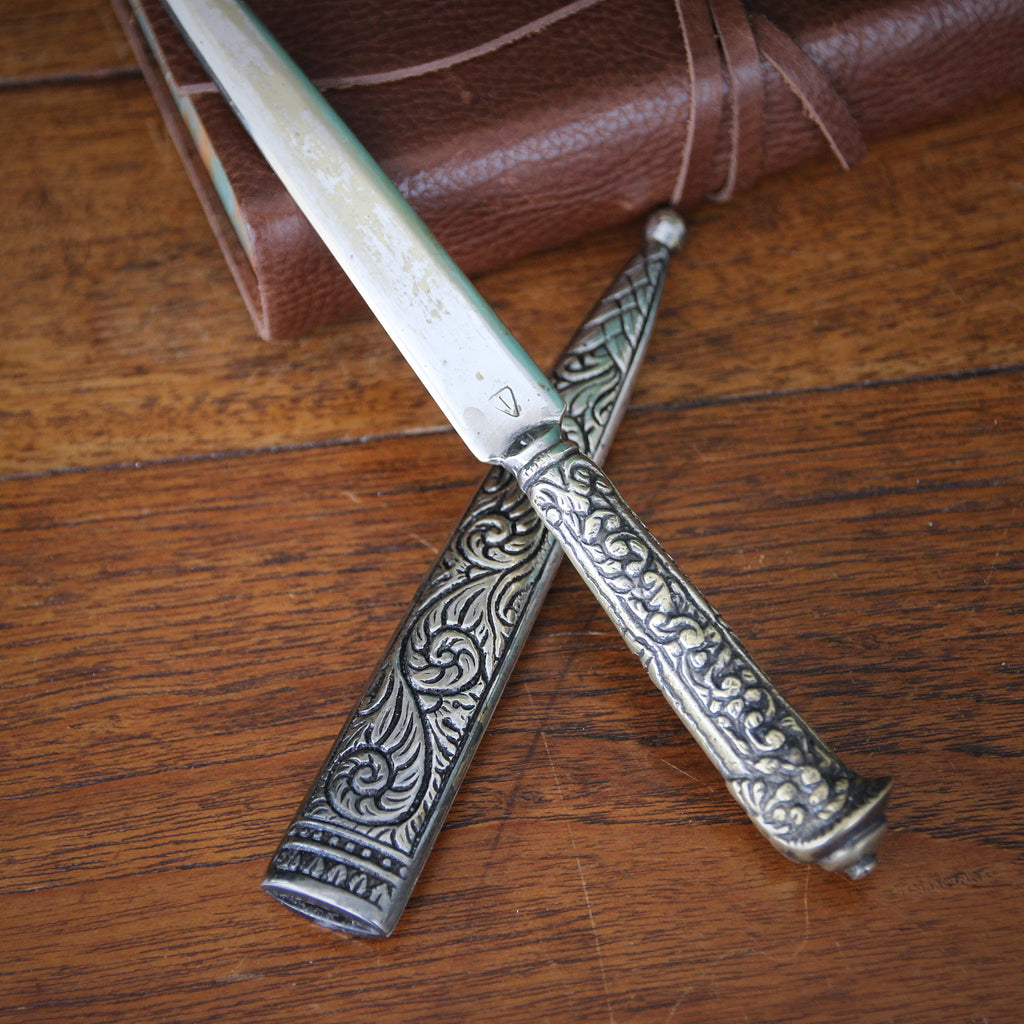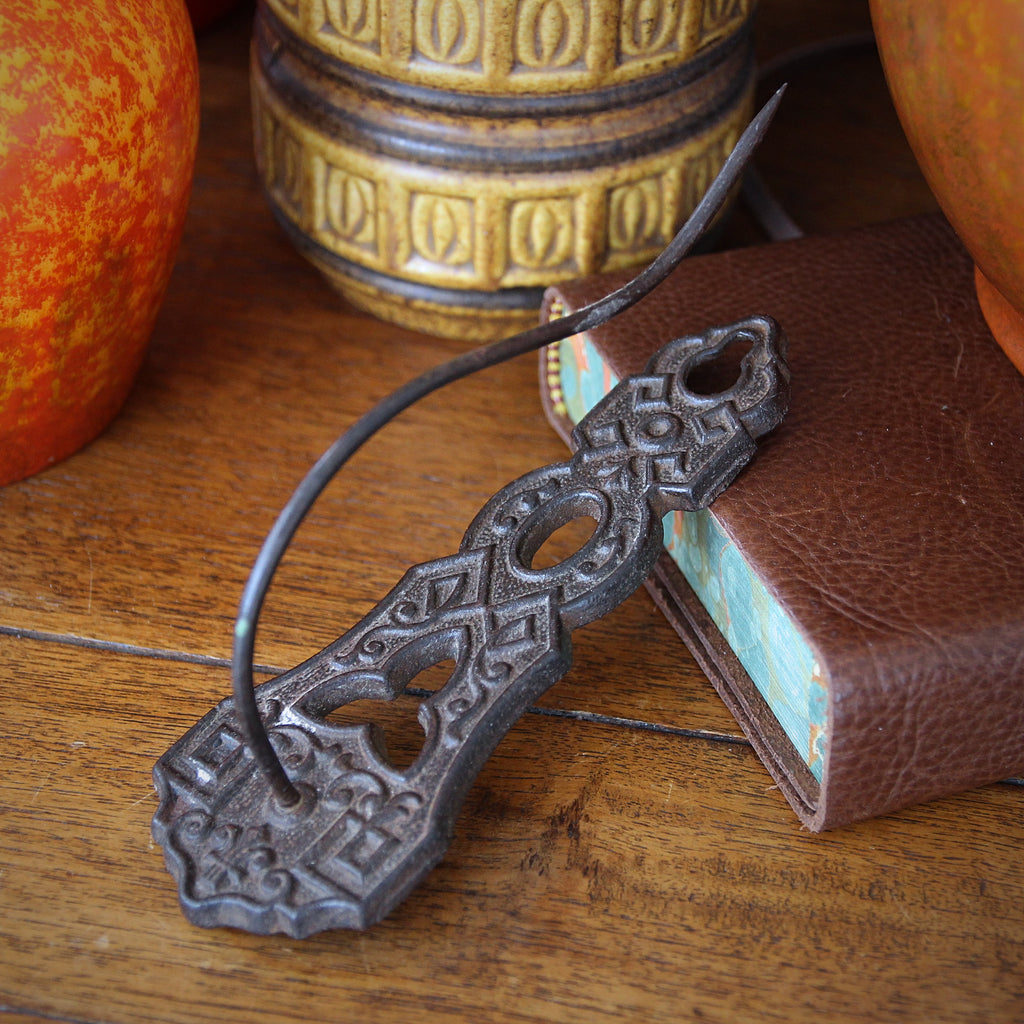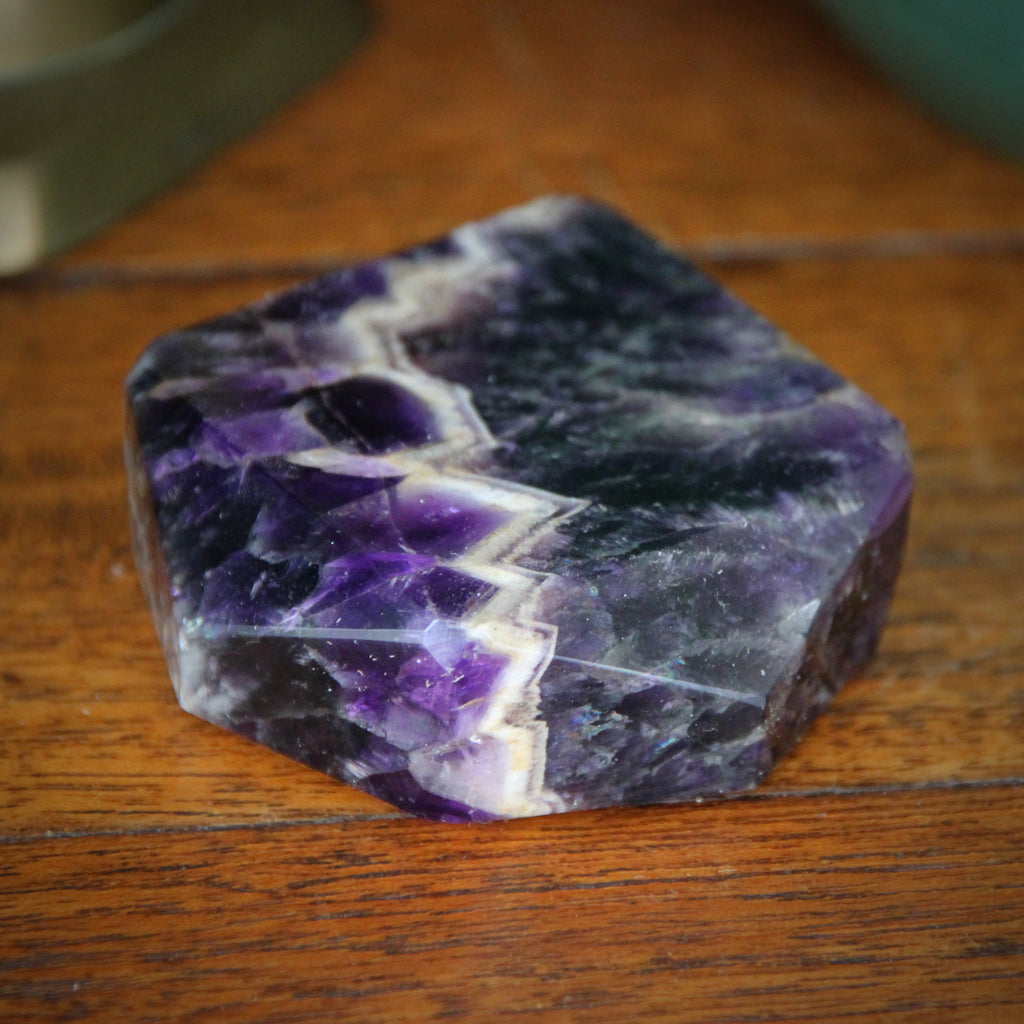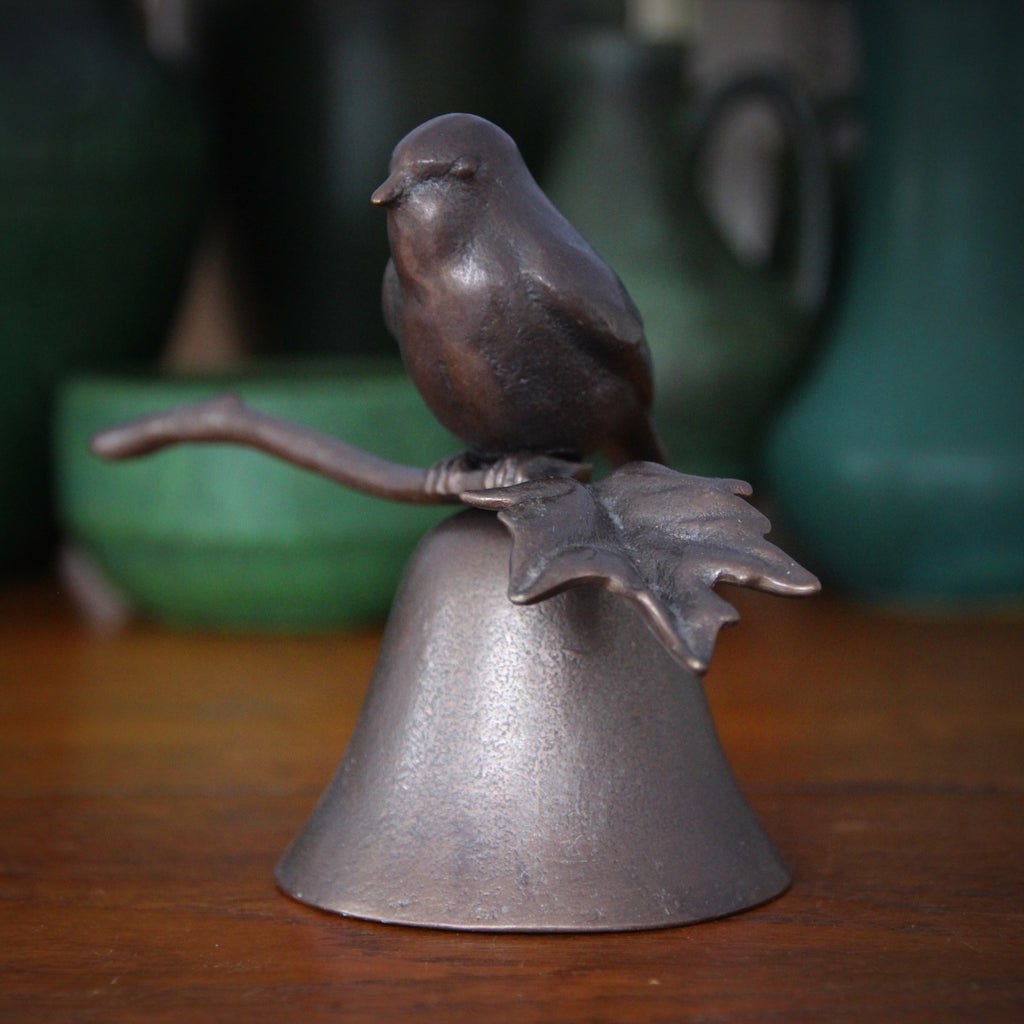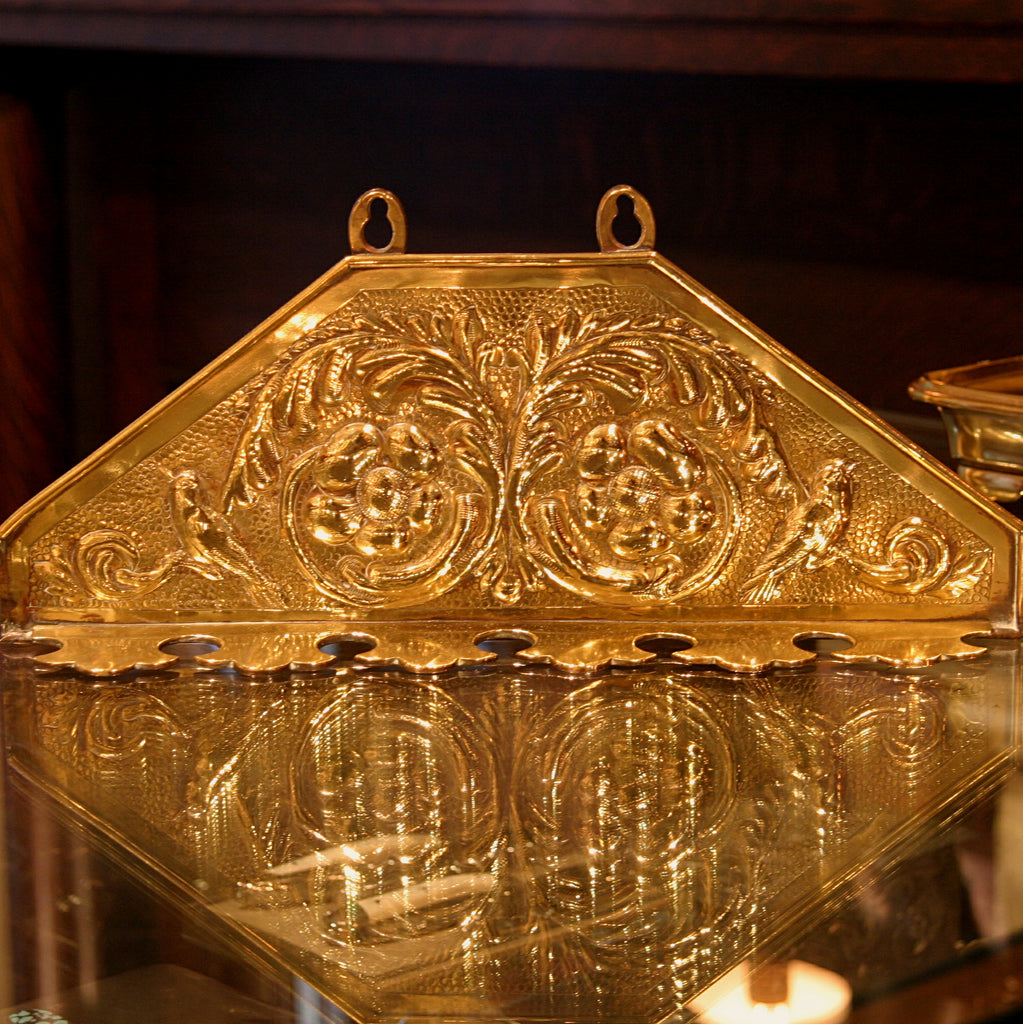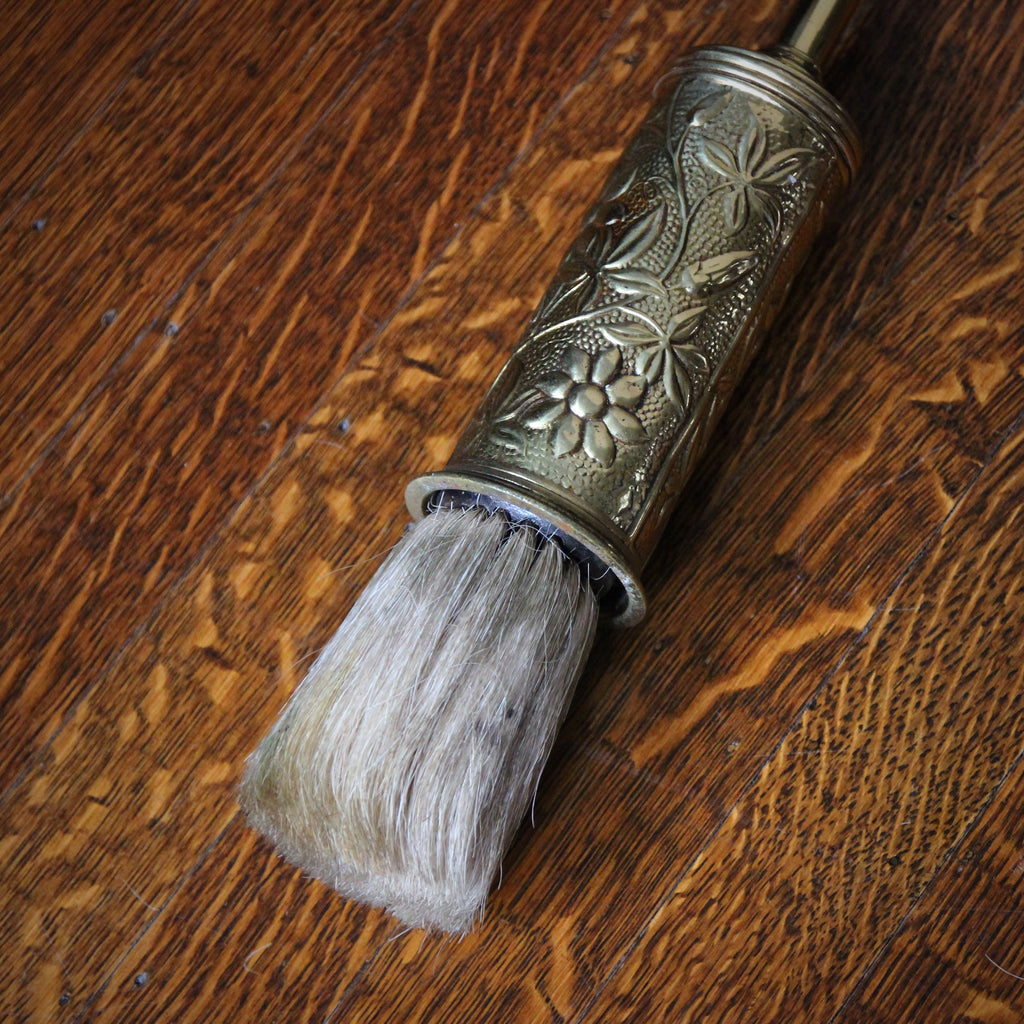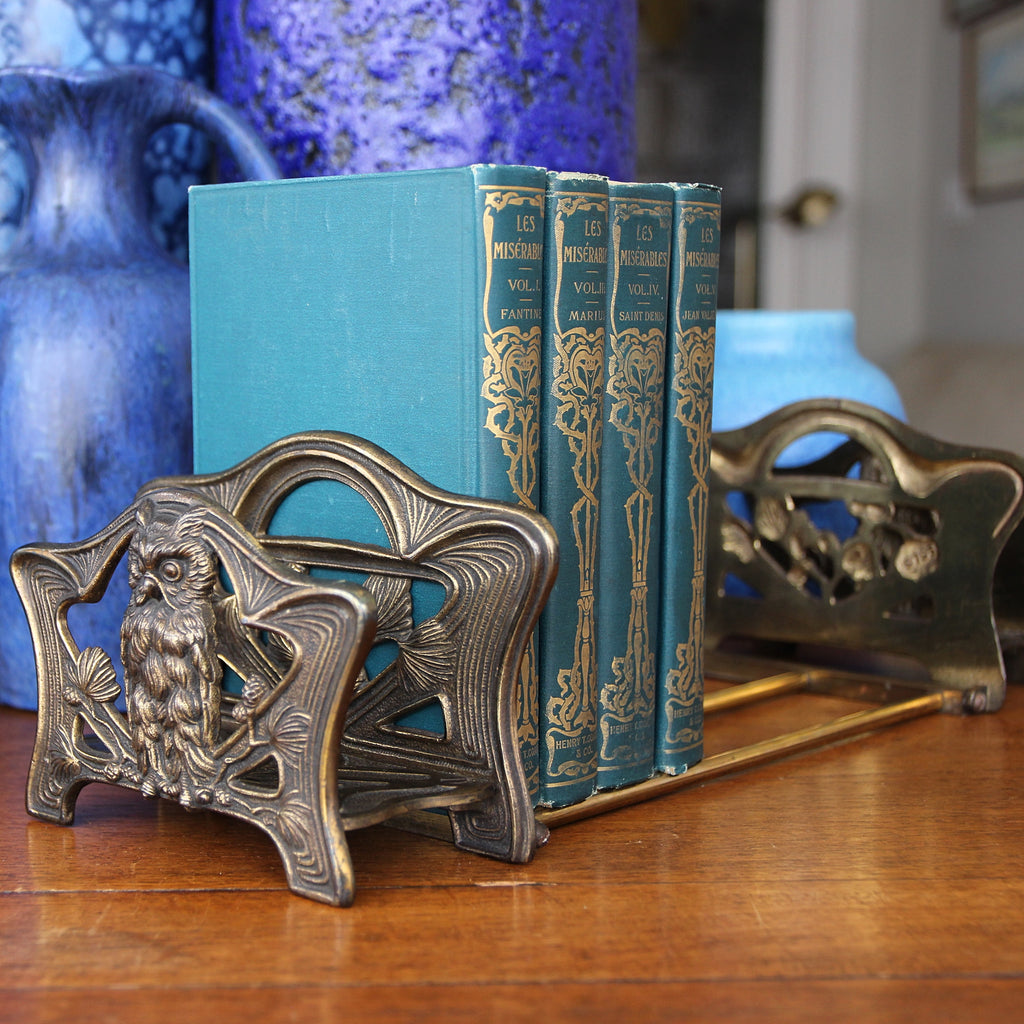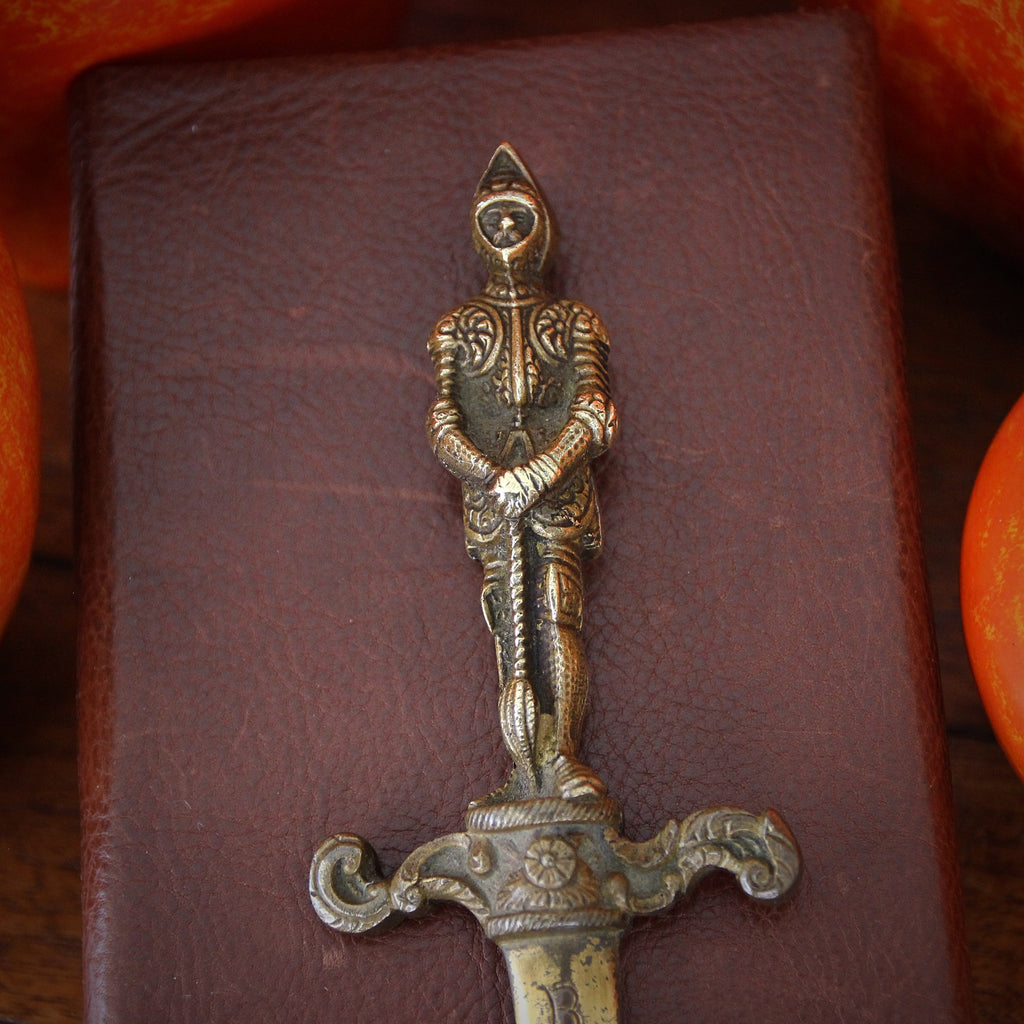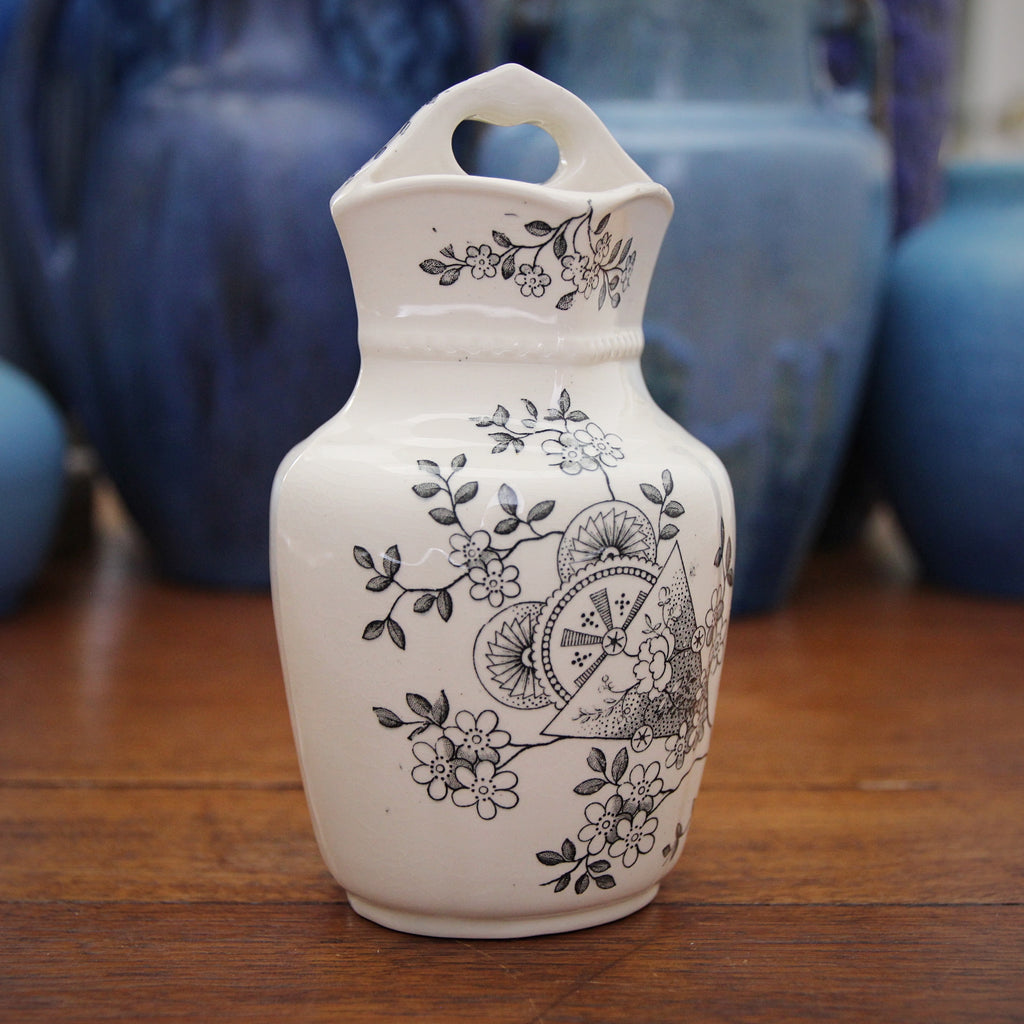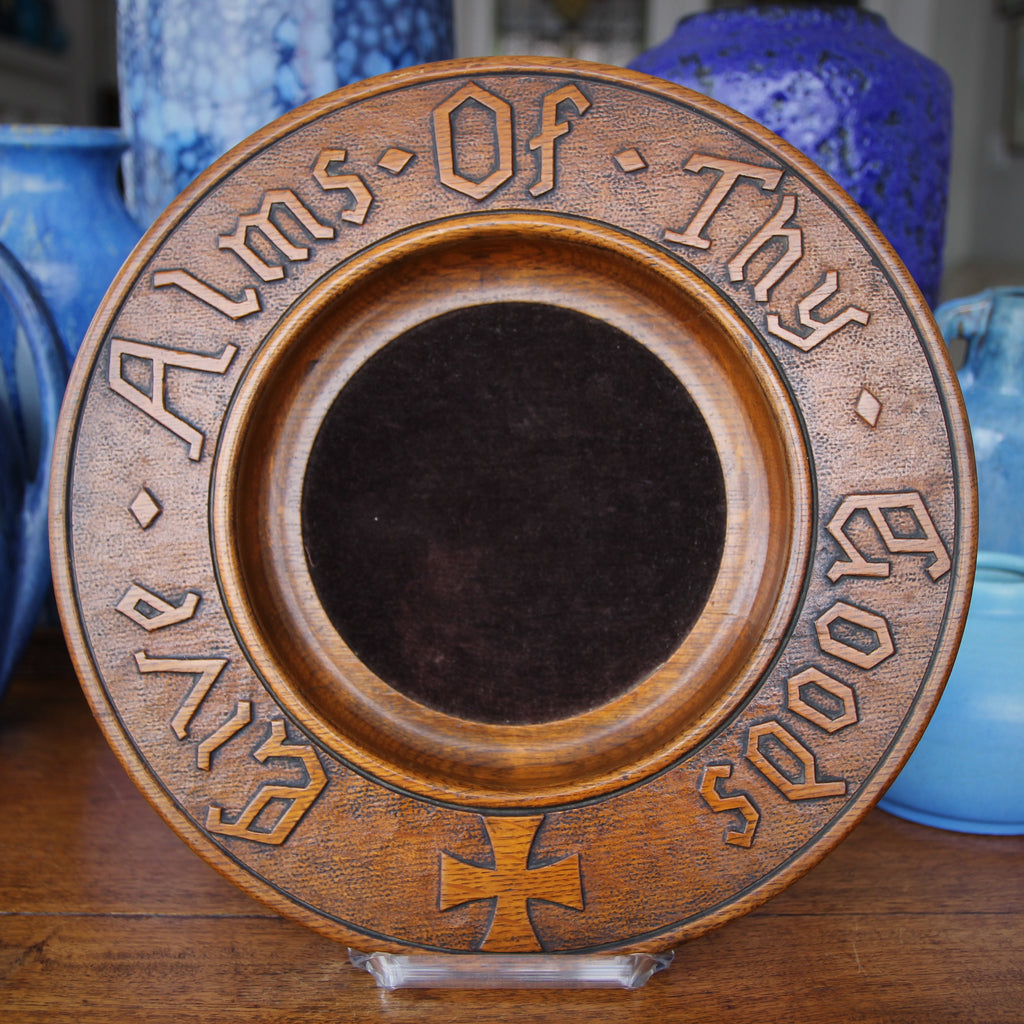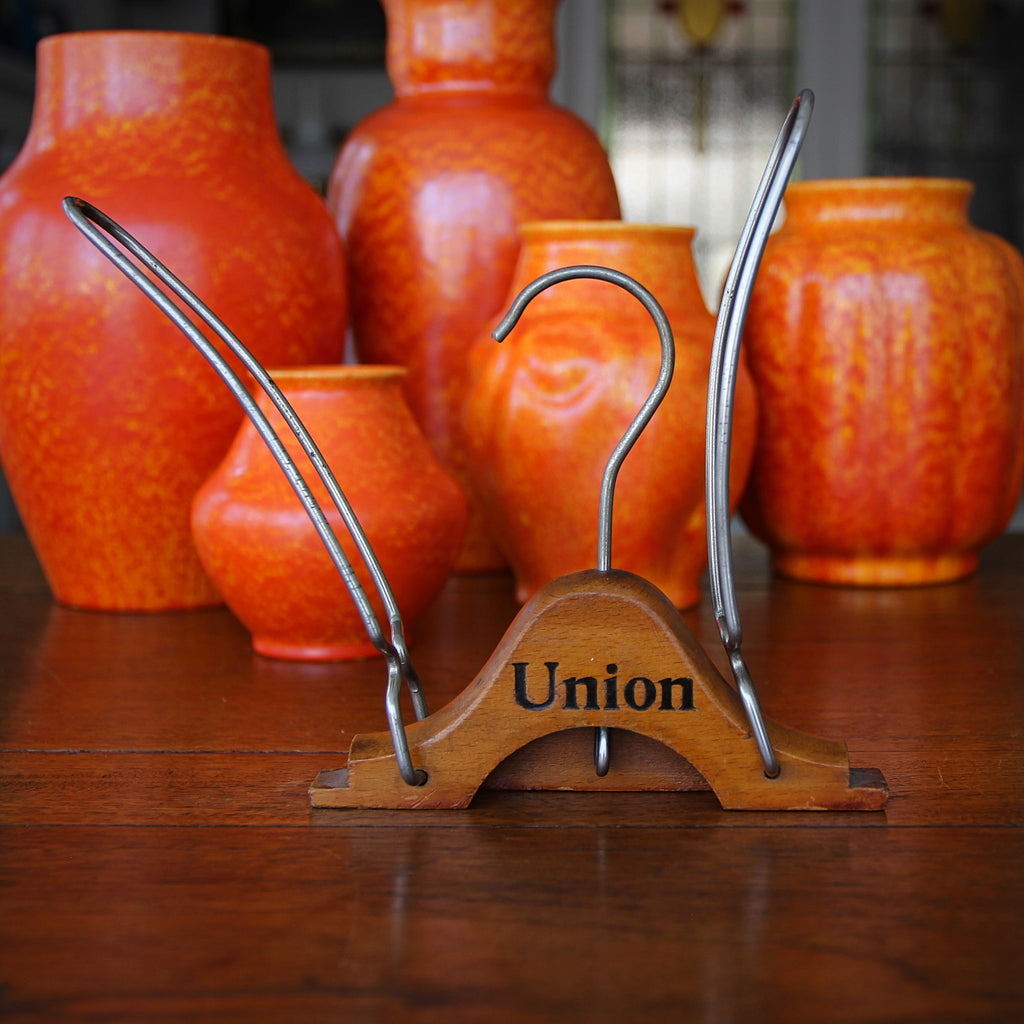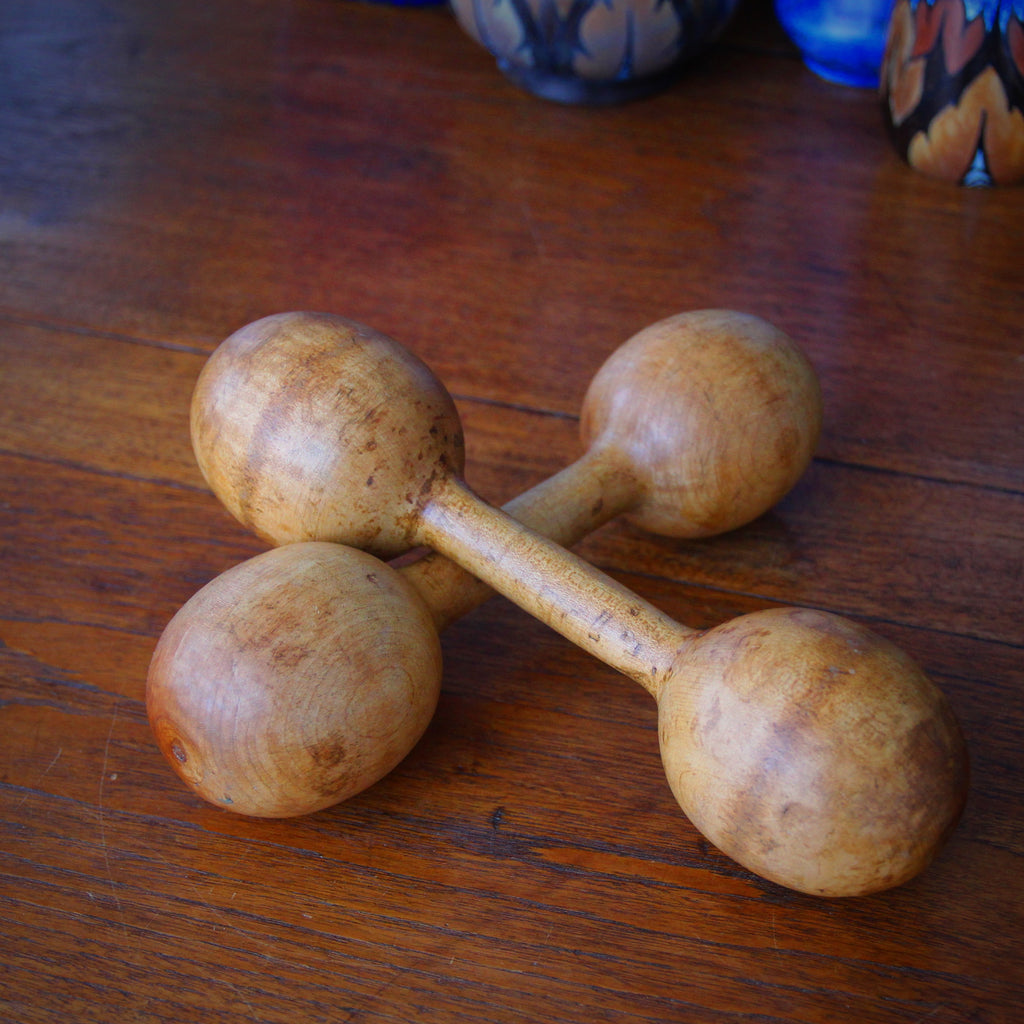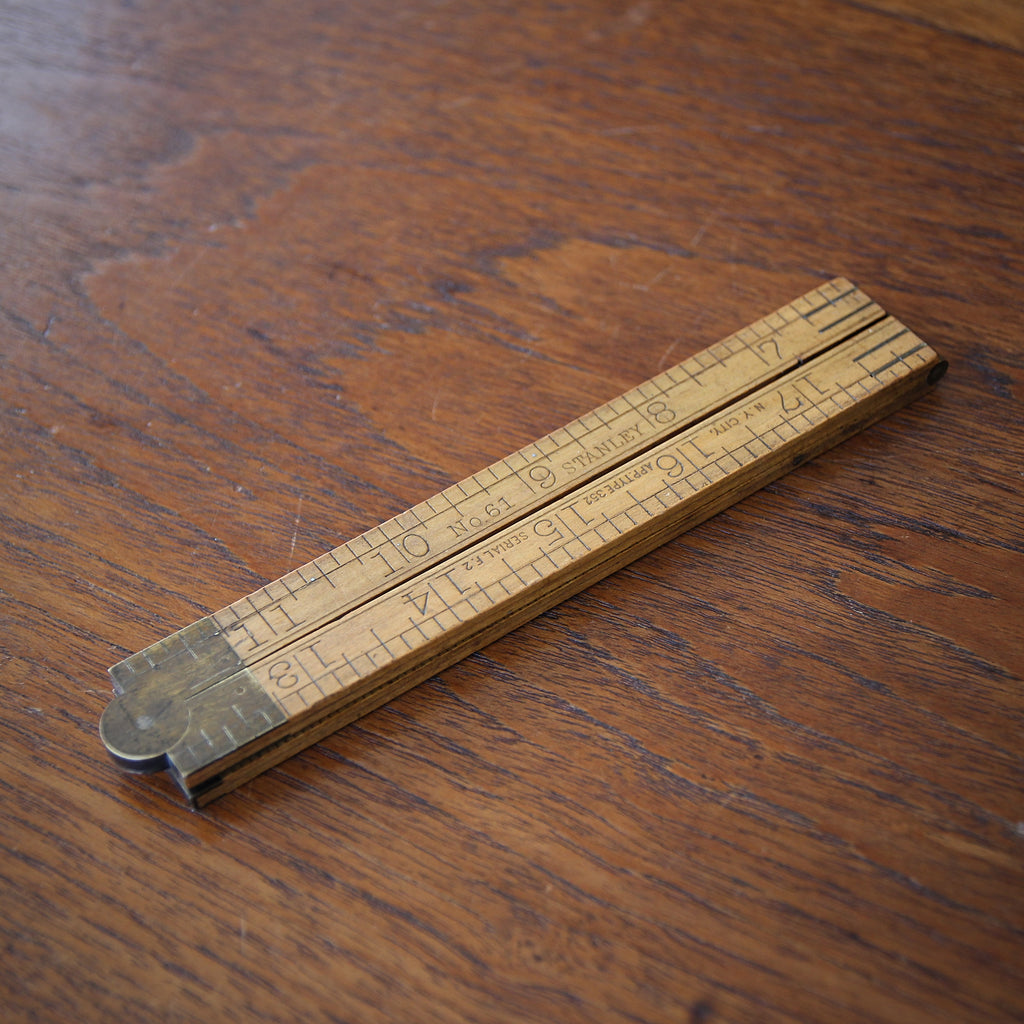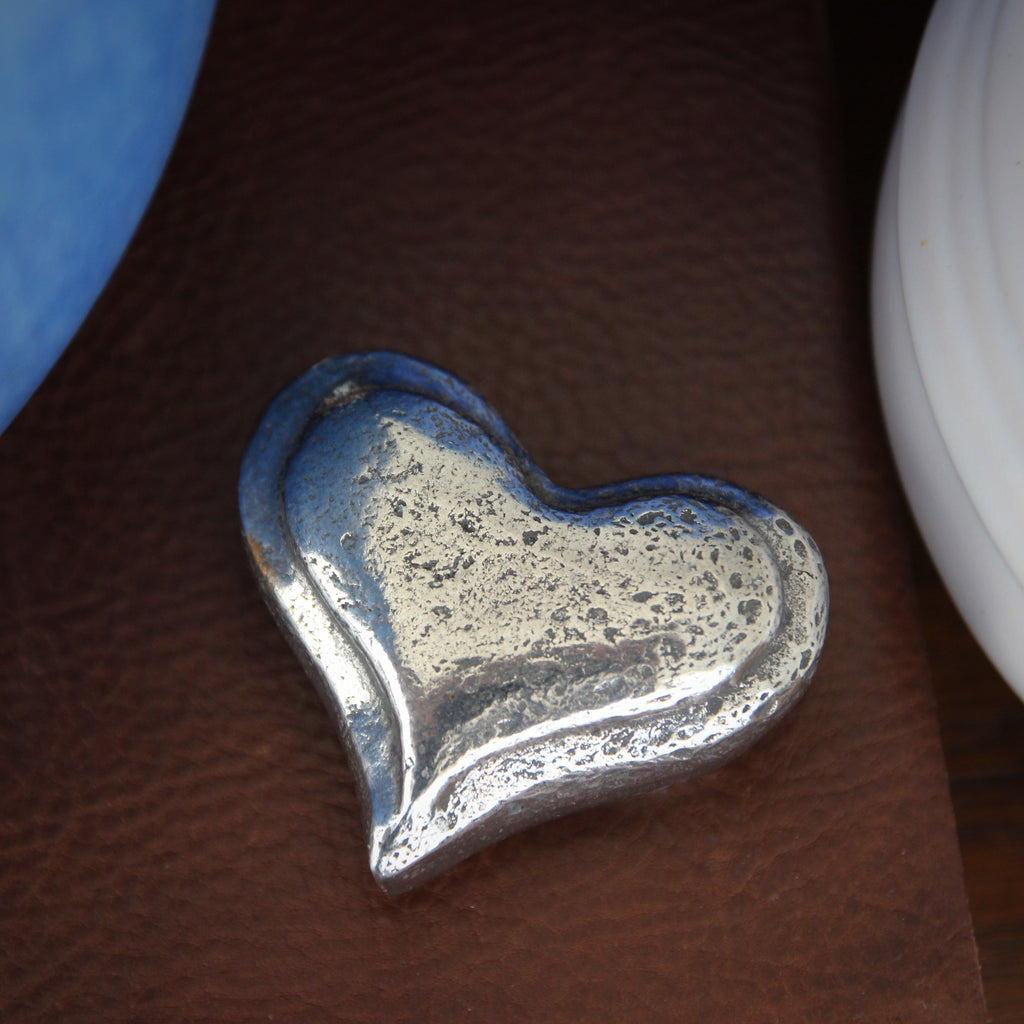JOURNAL — Desk Accessories RSS
"Treen" refers to those small, useful objects handcrafted out of wood—not including architecture, furniture, clocks or cabinetry. The word "Treen," itself, means "of the tree." In the old days, metal tools and objects tended to be expensive (and plastic had not, yet, been invented). Therefore, many useful tools and household implements were crafted of wood. With the advent of the Industrial Revolution—with its mass production and economies of scale—metal became affordable to a greater percentage of the population. Laboriously hand-carved wooden items became a little less common.
Technically speaking, treen items can be found all over the world. Most of the treen I encounter today—especially from England, where I often shop—was made in the late Nineteenth and early Twentieth Centuries.
National Punctuation Day
Is punctuation passé? Perhaps it is amongst "the texting generation." Nowadays, capitalization, commas, and periods seem to be treated as . . . optional. While I do text (frequently), I do make every effort to punctuate properly. I attempt to proofread a text message before I hit that blue "send" arrow. With so many norms and standards falling-away (daily), I feel more compelled than ever to keep up the fight—including with my punctuation. Several years ago, I purchased Lynn Truss's book, Eats, Shoots and Leaves. The cover depicts a particular panda removing the title's offending comma. He wants to make it clear that he eats shoots (he doesn't shoot and leave.) I recently came across another argument for the proper...
"Long Live Absolute World Peace"
Today is the International Day of Peace. The United Nations established the commemoration in 1981 and it was first observed the next year. The aim of the celebration is to envision (and work towards) a world absent of war and violence. Japan is very aware of the human cost which comes from military aggression. In 1954, Japan presented the United Nations with a "Peace Bell" which was then installed in a Japanese garden on the U. N. grounds. It is a Bonshō style temple bell and it was cast from coins donated from all over the world. Besides current and old coins other metal objects were melted-down to form the bell: bullets, war medals, military badges, even saber guards. Pope...
Time Flies
On this day in 1752, Great Britain adopted the Gregorian Calendar, thus abandoning the Julian Calendar which it had been using for over 1700 years. This switch of systems meant of a loss of eleven days. The people of Great Britain (and its possessions, including the Original Thirteen American Colonies) went to sleep on Wednesday 2 September and woke-up the next morning, Thursday 14 September. For those who thought Y2K might be disruptive, the change to the Gregorian Calendar was truly a shake-up! The older, Julian Calendar was adopted in 45 BC (under the dictator, Emperor Julius Caesar). It accounted for a 365 day year, plus a leap day every fourth year. Although this was fairly accurate, it was still...
We Choose to Go to the Moon
On this day in 1962—a warm and sunny Texas day—President John F. Kennedy stood before 40,000 spectators in the Rice University Stadium. He laid-out his vision for America's essential leadership in "the space race." "I believe that this nation should commit itself to achieving the goal, before this decade is out, of landing a man on the moon and returning him safely to Earth." He added, "We choose to go to the Moon in this decade and do the other things, not because they are easy, but because they are hard." His goal (and the speech which inaugurated the campaign) was a challenge to Americans to show the world (and themselves) that the U.S. could do great things—for the benefit...
A Penny Saved . . .
The US Mint has announced that it will discontinue the production of pennies in early 2026. It seems that the humble penny is yet another American institution which will not survive the nation's Semiquincentennial. The Philadelphia Mint "struck" the first official US Penny in 1793, the year after the Mint was established by Congress. It has been copper (or copper-plated) ever since. From 1859 to 1909, the Mint produced the "Indian Head" penny. Then, in 1909 (which was the Centenary of Abraham Lincoln's birth), the Mint produced the Lincoln Penny with the president's profile on the obverse (and wheat sheafs on the reverse). This coincided with a period of "Lincoln Mania" in America—and the public really embraced the new coin....
Bird Watching - III
Don't let the appearance of this crusty and weathered parrot mislead you. The tinkle of this tea bell is sweet and clear—perhaps to the disappointment of the Irish maids (like my grandmother) who were expected to respond quickly to his call. Made of bronze in the late Nineteenth Century, it was colorfully "cold-painted" after being cast and chased (cleaned-up of burrs and roughness). Over the years, much of the paint has worn-down. But his worn visage reveals tremendous character. I can see Miss Havisham ringing this bell, summoning Pip into her sitting room, where she rocks in her decades-old wedding dress. I nearly expect the parrot to answer her questions!
August's Sardonyx - V
The Edwardian era marked the start of the Modern World. Shown here, an Edwardian Scottish inkwell, formed of handsome slabs of sardonyx, which tip the hat toward the Modernism which was to come. Stripes of reds, oranges and white create a strikingly handsome inkwell—certain to punctuate a well-appointed desk. Includes the original removable glass liner.
Countdown to LEO - 5
We're a few days away from LEO—which begins 23 July—when the Sun moves into that celestial lion's Territory-in-the-Sky. For the next few days, we will count-down the days 'til LEO with a selection of our favorite leonine items—currently in-stock at LEO Design.
Shown here, a cast iron "circus lion" bank from the early Twentieth Century, wearing his original gold paint. Cast iron banks (and mechanical toys and door stops) were very popular at the Turn-of-the-Century—and several Northeastern factories expanded to mass produce them.
This bank is made of two separate pieces, held-together with a screw. I have not tried to unscrew the two halves, not wanting to strip the screw or "break-the-bank."
Bastille Day
I wrote the following journal entry a year ago. It seems just as relevant one year later. Alas. So I will simply run it again.
Happy Bastille Day. - - - Are humans naturally drawn to Authoritarianism? Or, rather, do people yearn to live free? For centuries, historians and philosophers have studied various peoples living under monarchs, dictators and thugs. Why do some people prefer "to just let Daddy take over"? In 2024, we still do not know this answer.
Oh, Thank Heaven . . .
It's Seven-Eleven! And, when I think of 7/11, it conjures the word "convenience." In our modern world—with so much coming at us all the time—I (try to) rely on habit and discipline to help smooth the (otherwise) rough edges of getting through the day, on time. For me, I could not function without designating a place to keep my "exit essentials": keys, wallet and various "membership cards" which I need at different points in my schedule. In our household, we have a handsome French ceramic pie plate, glazed navy blue on the outside, glazed white on the inside (complete with a beautiful ruffled edge). It was the wonderful gift of a friend, Steve Leamer, who once made us a pie...
Opening in Style
Most of the letter knifes we have offered over the years have tended toward the heavy and masculine—like a prop out of Tosca, Act II. The elegant letter knife, shown here, is more subtle. It is fashioned of tapering stainless steel and is set within a silver handle, hand-engraved with scrolling botanicals. The handle conceals another little bonus: a folding stainless steel pen knife. As useful as it is, this knife is still very elegant—an object of sophisticated refinement. It was made in Japan in the Fifties.
Reliquary
We all have precious objects which need to be presented and protected—an item which calls for a reliquary, of sorts. This bevelled glass footed casket is a handsome solution to that task. Spelter ("white metal") framing joins the bevelled glass panels. The top lid hinges open. Use it to display a pocket watch, an awards medal, or some other cherished possession.
Temperature's Rising . . .
Yesterday was the first full day of Summer; the Summer Solstice began at 10:42 pm on Friday night. And (boy!) it's getting hot! Sweat-it-out in style with this handsome turn-of-the-century thermometer. The mercury thermometer is mounted upon a brass plate, engraved with the graduated temperature readings. The brass plate, in turn, is mounted to a wooden backing—fitted with a hanging loop. Gall & Lembke was founded in 1869 by Joseph Gall and Charles Lembke. They were headquartered at 21 Union Square and considered the premier maker of optical devices. The thermometer, shown above, was probably not made by the company. But it was intended to promote the company. The company name and address are engraved at the top of the...
Old Meets New
This Italian leather canister is an intriguing example of Old World craftsmanship meeting Modern World technology (about a century ago). Florentine gold-embossed leather is "wrapped" around a Bakelite canister—and fitted with a screw-down lid. Bakelite was invented in 1907. It was a leap-forward in the development of synthetic materials—plastics, actually. This remarkable new invention could be molded into complex shapes. It was suited to mass-production. And Bakelite was heat resistant—making it highly adaptable to use in the exciting, new Twentieth Century. Light bulb sockets, lamps, radios and (later) television parts were made of Bakelite. In the right color (and polished) it was attractive, durable and easy to produce. Numerous desk and household items were crafted in Bakelite—as was jewelry...
Light My Fire
In the days before electric ignition, matches were a common and necessary household implement—in the kitchen, in the dining room and at the fireplace. "Strike-anywhere matches" needed a safe and attractive container for safekeeping (sometimes called a "match safe"). As strike anywhere matches were combustible (and could, theoretically, be ignited if rubbed together), they required fireproof containment (in a vessel as air-tight as possible). And, because such a match holder was on prominent display on the mantelpiece, it should be attractive, too. This heavy cast iron match holder was made in the third quarter of the Nineteenth Century. It still retains its original black and golden paint. And the gold paint is richly-aged—never to be confused with the glitzy "shiny...
LEO - XI
LEO Design is sharing some of our favorite LEOs this week, as we mark the election of the new pontiff, Pope LEO XIV.
Shown here, a Turn-of-the-Century cast iron lion bank. Years of aging has left a darkened and highly-textured surface—while traces of the original golden paint are still visible in the mane. At one time, deposited coins could be removed by unscrewing the two cast iron sides—held-together with a screw. Over the decades, the screw (and two connected halves) seem to have fused-together, making it difficult (or impossible) to open-up. But this handsome vintage lion would easily earn his keep just standing-around, looking good. And think: he was made sometime during the papacy of the last Leo, LEO XIII.
Holy Saturday
Between Good Friday (when Jesus was killed and buried) and Easter Sunday (when Jesus rose from the dead), we have Holy Saturday—a time of contemplation and watchful waiting. Holy Saturday is the last day of the Triduum, which concludes with the Easter Vigil Mass on Saturday night. The Italian sandglass, shown above, is made of sand-cast pewter fitted with a corseted glass timer. It holds (approximately) five minutes of sand (though precise timing never seems to be of paramount importance in Italy—style and craftsmanship are). Sandcasting of metals is an ancient process, thousands of years old. An object (which one would like to duplicate) is pressed into a bed of sticky sand, creating a "mould." Then molten metal (bronze, brass,...
Diamonds Are For . . . April
Welcome, February, and your birthstone—the diamond. Diamonds have always been the "crown jewel" of the "cardinal gemstones," a designation which includes diamonds, emeralds, rubies and sapphires (and, at one time, amethysts). Diamonds are very old. Most were formed between 1 and 3.5 billion years ago, deep within the Earth (some 90-500 miles down). More recently (say hundreds of millions of years ago), the Earth's volcanic activity shifted the substrate, slowly moving some of those diamonds closer to the surface of the Earth (where miners could find them). And some diamonds were created by the heat and pressure of meteorites crashing to the Earth. Diamonds are also very hard. Very few diamonds are suitable for jewelry (which must be nearly...
The Ides of March
"Beware the Ides of March," warned Spurrina, the Etruscan Haruspex, to Julius Caesar. A haruspex was a soothsayer—a seer—trained in predicting the future by studying the entrails of slaughtered animals. He believed that trouble might befall the leader on the Idus (the mid-point) of Martius (March). The year was 44 BC.
So, on that day, as Caesar was heading to the Theatre of Pompey (where the Senate was convening), he passed that very fortuneteller in the street. "Well, the Ides of March are come," said Julius. "Aye," the seer responded, "but they are not yet gone." It was at that Senate meeting, at the Theatre of Pompey, where a group of 60 conspirators, led by Brutus and Cassius, assassinated Julius Caesar.
Birds of a Feather - IX
Like Mary Poppins's talking brolly handle, this pretty parrot is mostly content to stand quietly—waiting to be of use. The cold-painted Victorian bronze tea bell produces a delicate tinkling. It's loud enough to be heard by the servants, but not so brash as to disrupt your restorative respite. And its time-worn patina provides just the right touch of gentle decadence.
Birds of a Feather - I
Spring is in the air. We've been teased with fleeting moments of warmth—only to be blanketed with snow and ice the next day. But the birds are aflutter, zooming through my backyard. Let's anticipate the Spring with a selection of feathered friends, all now in-stock at LEO Design.
Shown above, a brass tea bell—its handle a chickadee, alighted upon a leafy twig. It's a handsome bell, whether employed at-table, sitting upon a pile of coffee table books, or standing sentry on your windowsill.
Finally February!
Boy! Didn't January 2025 feel six months long! But we've made it to February, and she brings with her a birthstone, the regal Amethyst.
"In the Olde Days," Amethysts were rare, indeed. They were considered one of the "Cardinal Gemstones"—alongside diamonds, rubies, emeralds and sapphires. Further elevating their status was their association with the monarchy—as the precious (and costly) color purple has long been linked to the royalty. Alas, new and large amethyst mines were discovered in Brazil in the Nineteenth Century, causing the global price of amethysts to fall. Though less-precious today than they once were, they remain no less beautiful—or regal. And they are the birthstone to those born in February.
Winter White - V
Laguiole knives have been made in the French village of Laguiole since 1828. Nearly 200 years later, Forge de Laguiole is the only knife-maker operating in Laguiole (though many have tried to appropriate the name, likeness and trademarks of the brand—as far away as China). Originally used by local shepherds and other working people, these knives have been refined over the company's first several decades, resulting in the classic design we see today: a sinuous curve, beautiful finishing, marked with the trademark bee. At the time of Laguiole's founding, folding pocket knives were still a novelty. But is it a fly or a bee? The company says it's a bee. In Laguiole's early days, each knife-making artisan would "sign" his...
Snowfall
The snow has been falling, fluffy and deep, in my neighborhood. Having grown-up in Hawaii, I always thought that "the Mainland snow" was supposed to go-away at the end of Christmas. Shouldn't January—a new start, clean and fresh—"snap-back to normal"? One trick I've learned is to shovel the sidewalks as soon as possible. Fluffy snow can be "scooped" quickly and easily. Once it has been tamped-down (by marching feet), it is much harder to shovel. Snow that melts, just a little, and re-freezes is a nightmare. And it gets worse when new snowfall piles upon that sheet of ice. But snow can be so pretty. (At least initially.) As these French Modernist crystal paperweights are pretty. A delicate snowflake is "embossed"...
Playful Pup
How wonderful to wake-up, Christmas Morning, to a playful little puppy waiting under the tree. While I would strongly discourage giving a real puppy as a gift (unless it were properly planned), I do endorse this little silver-plated music box which plays Brahm's Lullaby (published in 1868). Wind him up and enjoy Brahm's most famous tune.
Giving Thanks
I have spent my adult life as a merchant. Thanksgiving has always been a milestone day in my professional calendar. Despite the busy-ness of the season—the preparation and the crazy days to come—I love this quiet day to rest and reflect on everything for which I am grateful: my friends and family, my health, my customers and my faith.
Shown above, a cast pewter heart. It's a sculpture, a paperweight, a loving memento.
Wishing you a wonderful Thanksgiving Day. And I hope that we might "cross paths" between now and Christmas!
Seeing and Being Seen
Before radio and television and Netflix, people had to leave their homes to find great entertainment. Theaters, music halls and opera houses provided much amusement—and gave the fashionable set a place to see-and-be-seen. A common accessory in Nineteenth and early Twentieth Century auditoriums was a handsome pair of opera glasses. Most opera glasses were fairly low-powered; 3x magnification was recommended. Most theatres were not too big. And the subject to be scrutinized was never too far away. Furthermore, over-powered opera glasses would provide too much "shake"—not to mention the nausea of seeing the world spin before one's eyes.
Nothing Faster
It was such a different time—back in the 1930's—when the postal system represented the cutting edge of quick and efficient document transmission. There were no fax machines. No Federal Express. And the internet was still decades (and decades) from introduction. "The mails" was the fastest system—and postage stamps were the coin of the realm. Everyone (at least anyone who sent mail) kept a ready supply of postage stamps at hand—in various denominations, in order to cover the weight of the envelope or parcel one was sending. Stamps might be kept in a special container, like the handsome English Art Deco stamp box shown above. When this stamp box was first in-use, in the Thirties, a US postage stamp cost 3¢. It remained...
Verdi Bells?
Not so long from now, we'll be hearing all about "Silver Bells." But before we reach that point—and while it's still warmish—let's look at a "Verdi Bell," now in-stock at LEO Design.
In this case, Verdi does not refer to the Italian Maestro, Giuseppe—composer of opera masterpieces Aida, Otello, La traviata (and more). Rather, in this case, we refer to "verdigris"—the naturally occurring greenish-bluish-greyish patina which develops on bronze, brass and copper. According to one theory, the name Verdigris is derived from the Old French Verte Grez (Green-Grey). Modern French calls it vert-de-gris ("green-of-grey").
Keeping it Together
Before the Holidays arrive—and sweep us away—we have a few days remaining to activate those long-planned organizational systems, simple or complex as they may be. Having "just the right place" to keep important items can save us time and annoyance (when we most need to be operating efficiently). For me, having my keys and wallet stashed in their proper place makes for a less dramatic morning—when I'm scrambling to get-out-the-door on-time.
This heavy brass "pocket caddy" is the perfect place to keep those pocketable items, perhaps near the door (where they can always be located). This caddy can also be used at bedside—to keep-tidy one's watch, cufflinks, coins, rings or collar stays.
Happy Days?
One week to go! Election Day! Will we see Happy Days? Oh my. Why don't we avoid the topic? Let us look the other way! In 1903, Julius Chein opened his modest, new business in a New York City loft—initially making printed metal toys to be included as the "prize" in a box of Cracker Jack. His focus was lithographed tin, though, for the first four years of business, Chein had to outsource his metal printing. Business succeeded and, by 1907, Chein could afford to open his own metal printing plant in Harrison, New Jersey. J. Chein & Company made all manner of toys and novelties of lithographed metal: piggybanks, tambourines, rattles, & other noisemakers, scale trucks & automobiles, wind-up toys...
Cute and Cuddly
When I found this charming baby bird, I just couldn't resist. I suppose his plump body, big eyes and open mouth are his evolutionary insurance that his parents will continue to feed and protect him—until such time he can provide those functions for himself. Could this be why we find baby creatures adorable? So that we will continue to nurture them through those vulnerable years? This little Japanese bird—is it meant to hold matches, cigarettes or toothpicks?—is cast in bronze and finished with a light verdigris patina. Need I add that he is well-sculpted? Clearly the artist knew exactly how to appeal to that ancient animal impulse (in most of us) to care for those cute and cuddly creatures—be they...
Left Behind
Promotional, "advertising" items have long been used by businesses seeking to promote sales for their companies or brands. These items, usually given to a customer (or a potential customer), could take one of many different forms. Sometimes the item might be a miniature version of the manufacturer's regular item—think of an anvil salesman leaving a miniature cast iron anvil paperweight (complete with the maker's brand name and contact info). A promotional item could be something useful: a calendar, a letter rack, a coin tray, a wall clock, or a paperweight. Or the promotional item could be an outright advertisement—like a product sign to be mounted on a display case or a brand logo to be hung on the wall.
Super-Size Me
The older I get (!!!), the more I appreciate having magnifying glasses here-and-there—lying in strategic spots, all around the house. I have one in the kitchen for reading the criminally-small cooking instructions on food packaging. There's one in the TV room for ascertaining the running time on a DVD movie box. I have a few of them in my work space—where I am forever researching antique makers' marks. And a good, strapping magnifying glass is always helpful in the tool drawer, for when one is called-upon to read the finely-raised (white-on-white) instructions inside a smoke detector or the etched serial number on the bottom of a toaster.
The magnifying glass, shown above, was made for one's more-refined tasks.
Autumn's Coming
Autumn will be here in a little over a month—time to start tidying-up for the Winter. In times past, before homes had summertime air conditioning, the semi-annual ritual of swapping window screens for storm windows (and vice versa) was part of the seasonal cycle. But which custom-fitted screen (or storm window) went into which window frame? Brass tacks—like the set shown above—came to the rescue. Each set of tacks was numbered (in this case, 1 through 15). The homeowner would press a numbered tack (let's say #7) into his window frame, a matching tack (another #7) into the the corresponding window screen frame, and a third matching tack (#7) into the proper storm window. This way, screens and storm windows are...
Sewing Speeds-Up
On this day in 1851, Isaac Merritt Singer obtained a patent for improvements he created to the sewing machine. Though he did not invent the original sewing machine, his design changes made the machines smaller, more reliable, easier to use, and easier to manufacture. He emulated the mass-production examples of gun makers (like Samuel Colt and Eli Whitney) with their modern production lines and reliance upon interchangeable parts. Prior to this, sewing machines were big, bulky, complicated industrial machines—better suited to cobblers, harness makers and other industrial settings. Singer's smaller, reliable machines could be used in the home. And they were affordable. His mass-production drove-down the price of a new sewing machine from $100 to $10 (equivalent to about $400...
A Tribute to "Cat Ladies" - III
Is there any greater luxury than an afternoon nap? Even if you're too busy to indulge in such a pleasure, you might enjoy watching this little kitty, curled-up, enjoying forty winks. He is made of stoneware, finished with a thick and curdled mocha-caramel glaze. He will happily serve as a little paperweight. Or be content to just lie-around, perhaps on the windowsill, making the place even homier.
The LEO in Summer - VII
This week, we're presenting some of our favorite felines—The LEO in Summer—which can be found in our LEO Design on-line shop.
Here's another Turn-of-the-Century cast iron lion bank—probably first owned by a child who was being encouraged to save his coins. The two halves are separately cast, then screwed together. Whether used to hold coins or not, this handsome LEO has a richly-aged patina. He'll provide good company on a desk, bedside, or windowsill.
The LEO in Summer - II
Before Venmo or Apple Pay or Zelle, people saved and spent real money—cash dollars and coins. Good savings habits were encouraged in youngsters by giving them a bank into which they could deposit coins—to save-up for a special purchase or to hold-fast for a rainy day.
The cast iron lion bank, shown above, was just such an item. In it, a child could save his or her coins and have a wonderful companion in their bedroom. Traces of the original golden paint remain on the lion which was made at the Turn-of-the-Twentieth-Century.
The Dog Days of Summer - VI
In "The Olde Days," cigarettes and the sporting life went hand-in-hand. Thus we have here a cast brass ashtray of two English birddogs, emerging from the water, in pursuit of their assignment: to gently retrieve their master's (or mistress's) birds. The bas relief sculpting is nice: interesting, detailed, full of energy. And one need not smoke to make use of this English brass tray! At bedside it would make a great place to keep one's rings or cufflinks—or perhaps a supply of collar stays. On the desk, it could hold one's clips or coins. And, at the front door, it's a great place to stash one's keys—from where one will always remember where to retrieve them. And, for those who smoke,...
József Pulitzer
On this day in 1917, the first Pulitzer Prizes were awarded—in three categories: Biography, History and Journalism. They were awarded by Columbia University in New York, thanks to an endowment by Hungarian immigrant, József Pulitzer (1847-1911), who had made a fortune in American publishing. It was Pulitzer's bequest which had established the Columbia School of Journalism in the first place. Pulitzer was born to a Jewish family in Southern Hungary, near Romania. His father was a successful merchant and eventually moved the family to Pest (along the Danube River, the eastern portion of Budapest). The Pulitzer children were privately tutored, learning French and German. When Pulitzer's father died, however, the family went bankrupt, forcing the young József to find work....
The End of Italian Monarchy
On this day in 1946, the people of Italy voted to abolish their monarchy (54% to 46%) and the Republic of Italy was born. From this point, by law, no male heir to the crown (or queen consort) was allowed to set foot on Italian soil. Within 11 days, King Umberto II left Italy peacefully, never to return. He lived most of his final 37 years in Cascais, along the "Portuguese Riviera." This last Italian monarch, Umberto Nicola Tommaso Giovanni Maria di Savoia, had only been king for about five weeks. His father, Vittorio Emanuele III (who had ruled since 1900), stepped-down and let his son succeed him. The former king, Vittorio Emanuele III, was exiled to Egypt and died...
Brushin' Up
When I was a boy, I remember the Fuller Brush Man coming to the house every couple of months. His range of items on-offer seemed endless, a brush for every conceivable household purpose. There were toothbrushes, toilet brushes, hair brushes, scrub brushes—even brushes to clean other brushes. My mother usually placed a little order with each visit. We don't seem to use as many brushes today. Or as often. In the past, many households—working or middle class—had a "hall butler" near the door: a hanging mirror with hooks or a shelf to hold a few brushes, It was customary to take a quick look in the mirror before leaving the house. And one could brush-off any lint or dandruff...
May-ple
Mayo, Maypo, Maypole, Maple. Some days the puns flow more easily. Today's not that day.
Day-in and day-out, regardless of the month, this maple "dish" remains handsome and moderately useful. It is cast of pewter and finished with a brassy wash. The dip in the center makes it perfect for holding a few small objects: paperclips, cufflinks, rings or house keys. It would also "present" a small stack of business cards with "North-of-the-Border" style.
Indian Clubs
Exercise clubs are believed to have been developed first in Persia, called "meels," which were used in individual and group exercise routines. They later became popular in India where Colonial British soldiers discovered and adapted them for their military fitness regimens. It was at this point that they began to be called "Indian Clubs." English Commonwealth and American civilians embraced them during the Late Victorian age. The clubs range in weight from about a pound (for use in calisthenics) to very heavy (up to 100 pounds, for resistance training). After World War II, and the advent of more sophisticated exercise equipment, Indian Clubs lost their popularity. Today they are most often used as a decorative accent for a clubby, athletic...
April First, Diamonds and Paperwork
This is one way to organize paperwork. And it's branded "Diamond," the birthstone which begins April First.
The organization of paper makes me think of this story from last week:
Deep within the dozens of boxes of "misappropriated and recovered" government documents this year was found an "Official Presidential Order" written sometime during the waning days of 2020. According to Avril Foulin, staff assistant at the National Archive's Stolen Document Recovery Department, the document—which may or may not have been officially processed—was found in a folder, clipped to commercial import invoices for "Chinese Antiq. Style PVC Ecomomy Fawcet (with high-gloss golden color sprayed)." Interestingly, the presidential order under scrutiny may have been related to these cheap and tacky plastic bathroom fixtures.
Imperial Glass
In the Nineteenth Century, Western Pennsylvania, West Virginia and the Ohio River Valley emerged as the preeminent glassmaking region of the United States. The region had all the necessary ingredients for glassmaking: raw materials (silica-sand and limestone), cheap heat (natural gas and coal), cheap labor (and much of it from glass-making Eastern European countries) and rivers and railways (to ship-out the finished product). Riverboat captain, Edward Muhleman, had made a tidy sum plying the waters of the Ohio River during America's Industrial boom. As he got older, he found himself ready to wrap-up his "seafaring" career—but he wasn't quite ready to retire completely. He set the goal of building the country's largest glass manufacturer in the Ohio River Valley. He...
Bohemia's Golden Days
While I love the Art Nouveau, I always have been hesitant to enter "The Art Glass Fray." It's a world chock-full of passionate, opinionated and discriminating aficionados—people who seem to loooove setting other people straight. These experts all seem to have 75 years of collecting experience (and don't you forget it!). Interestingly, my reluctance has proved convenient. Glass breaks easily and I am always shipping merchandise (either from Europe or to my customers). The less delicate merchandise I stock, the less-fraught my life should be. (Right?)
Time to Leap
A calendar year, on Earth, is 365 days long. However, it takes a little more time than that for the Earth to complete its full revolution around the Sun—365.242374 days, to be precise. (A true "Earth Year" is 365 days, 5 hours, 49 minutes, 1.1 seconds.) This small difference would add-up to 24 days in a century. After 100 years, the calendar would be off by nearly a month. Within 500 years, our Summers would be freezing cold! So, in 46 BC, Julius Caesar instituted a leap day—an extra day added to the calendar every four years—on his new Julian Calendar. This "intercalary date" was still not quite right (the adjustment was too much). So Pope Gregory XIII instituted his Gregorian Calendar (in...
Trench Art
The term "trench art" is used to refer to the folk crafts fashioned of (or partially fashioned of) the used or spare materials of warfare. This art form was especially popular during and after World War One. Trench art was made by all the major WWI participants: England, France, Belgium, Germany, Canada, Australia and the United States. But very little trench art actually was made "in the trenches"—or even on the front lines, for that matter. Much of it would have been made away from the battlefield, for example, at training camps or other military posts. Some might have been made in hospitals by recuperating soldiers. And some may have been made back at home—by soldiers awaiting call-up. Even after...
Wooden It Be Useful? - V
Can one have too much organization on one's desk? This English early Twentieth Century oak stationary stand bears the crest of Queen's College, Oxford. Store stationery supplies: envelopes, paper, business cards. Perhaps a stash of commonly used forms or cards. Or keep your to-do cards and paperwork close-at-hand. And the handsome, wooden construction adds a small touch of architectural interest to your office, den, kitchen or entryway.
Wooden It Be Useful? - IV
To hold this Japanese hand-carved business card case is to appreciate its beauty and craftsmanship. The delicately tapered "wedge" (thicker on one edge than the other) feels great in the hand. The hinged cap, at top, closes with a satisfying magnetic click. Pulling the case from the breast pocket of a jacket will provide that extra measure of confidence before handing one's business card to that important professional contact.
Wooden It Be Useful? - III
This week we're sharing a selection of useful wooden items. The wood of this English barrel-form coin bank glows richly. Riveted brass bands punctuate the bulging form. Warm, honest materials meet straightforward function: a handsome place to stash your savings.
Wooden It Be Useful ?- II
Yes, this English Arts & Crafts Letter Rack is made of wood—though it is embellished with plenty of hand-hammered brasswork. A winged dragon stalks in a field of botanicals, while an undulate amethyst glass cabochon floats overhead. The hand-tooled panels are riveted to the oak understructure. This piece is made to hang (on its mounting ring) or it can rest of a flat surface.
Wooden It Be Useful? - I
Is there anything more wonderful than wood? Warm. Useful. Natural. For millennia, humankind has been fashioning wood for tools, shelter, warmth and all sorts of decorative items. Perhaps it is the most malleable and accessible of natural materials. And the nature of wood makes it ideal for many uses—which no other material can replicate.
For the next several days, we'd like to share a selection of our wood-crafted objects, items which are handsome and useful.
Shown here, an American Arts & Crafts slatted oak wastepaper basket. The quarter-sawn strips, bound with rawhide lashings, add an additional level of textual interest. What Arts & Crafts desk (or office) wouldn't look better with this handsome basket?
Sailing Towards Christmas
True, Christmas is eleven months away. But it is coming!
This cast iron "Spanish Galleon" doorstop was made by Hubley (Lancaster, PA) in the Twenties or Thirties. It still has much of its original hand-painted color—though that paint is now well-aged (and full of character). Imagine this doorstop holding the door (or decorating the mantelpiece) of your favorite sailor's den or office. And imagine what style it would bring to someone's house at the shore.
Style, Quality, Mass-Production
One of the recurring themes of my Journal Ramblings is the confluence of taste, quality and modern production methods. There was a time in the Nineteenth Century—during the height of the Industrial Revolution—when good & tasteful design married the economically advantageous benefits of industrial mass-production. The idea was to create a beautiful original and then to produce them in great quantity—an effort "to bring good taste and quality to the masses." This happened in England and, a little later, in America and throughout the industrializing world. The simple 19th Century letter and pen holder, shown above, is an example of this phenomenon. Two identical "ends"—formed as a pair of flared, booted legs—are spaced three-and-a-half inches apart, joined with rods. A...
Storage Space Upgrade
It's the New Year! Time to reorganize, refresh, retire that To-Do List, sitting oh-so-long upon the desk. Perhaps this pair of Victorian cast iron brackets—embellished with delicate, pierced "tracery"—will give your storage projects a lift? They were made in the 1880's or 1890's and are six inches in one direction, eight inches in the other. This means you can install a wider or narrower shelf, based upon your needs and the space you have available (supporting shelves from six inches to approximately ten inches wide). These brackets would provide a small but powerful shot of architectural interest wherever they might be installed: in the kitchen, a bathroom, or in the office-den.
Seven Months 'til LEO!
I need little encouragement to celebrate—to lionize—LEO. This Turn-of-the-Century cast iron "Ferocious Lion" coin bank will help remind us that LEO starts seven months from today! He is nicely-cast and wears an age-darkened, original patina.
Welcome, Winter
This evening—at 10:27 pm Eastern Time—Winter will begin in the Northern Hemisphere. 10:27 pm will also mark the moment when the Earth's North Pole is tilted furthest from the Sun. Thus it is the shortest period of daylight in the year (for those of us living in the Northern Hemisphere). Starting tomorrow, 22 December, the days (that is, the daylight) gradually will get longer and longer. Today is also our Seventh Wedding Anniversary! Though we have been a devoted couple for (almost) 34 years, legal marriage was not afforded us for most of that time. On this day, in 2016 (with President Obama securely in-office for one more month), Bob and I ran-down to City Hall for a late morning...
A City on a Hill
The United States Capitol building is a glorious feat of Neoclassical architecture. Construction began in 1793. Central portions of the building were complete by 1800—only to be partially burned-down by the British in 1814. The damaged portions were re-built and the entire building expanded in the 1850's. The cast iron dome (weighing nearly nine million pounds) was finally completed in 1866. Like other important Washington, D. C. buildings, the Capitol is Neoclassical in design and painted white. Indeed, it gleams like the proverbial City on a Hill.
The glass-slab paperweight, shown above, features a sepia photograph of the Capitol. It's a handsome and useful gift for your favorite historian, architect or future Congressman.
From Birmingham, with Luck
The brass paperclips, shown above, are designed in the form of a lucky horseshoe—and are embossed with a wish for "Good Luck." They have a loop on the back, allowing one to hang the packet of paper sheets on a nail on the wall. They were made in 1870 in Birmingham, England, by M. Myers & Son. Birmingham had a very important "Jewelry Quarter" since the Sixteenth Century. It was here that much of England's jewelry was produced. With so many skilled workers in the area, other small metalworks manufacturers sprung-up: makers of buckles, blades, metal buttons and pen nibs. Besides inexpensive labor, Birmingham also had the materials of production (iron ore and the coal to process it) and the means...
The Sporting Life - IV
If you can't get enough of the outdoor sporting life—or if you only wish to experience it from comfortably indoors—this English cast brass ashtray will bring a touch of Nature onto your desk, counter or coffee table. Two bird dogs, Setters, emerge from the water. Let them bring their bold, outdoor energy into your home.
For A Doll's House
I am always looking for "things to hold other things." Near the top of that perpetual search list are objects which can be used to hold business cards. Coolness, style and unexpected adaptation always goes a long way. This little vintage bench—made of pine twigs—was made in the Fifties for a doll's house. In order to keep the cards from slipping between the twiggy slats, I folded one of the cards ("just right") to create a smooth, impermeable surface.
Measuring Up
125 years ago, rolling tape measures were made of printed fabric, wound around a spool in a bulky cartridge. One would pull out the tape measure and reel it back in, as one would a fishing reel. Modern, stiff metal tape measures were invented in the Twenties; the concave-convex metal tape allows it to remain relatively stiff, an aid to measuring. The "thumb lock" tape measure was patented by Stanley in the Sixties. Speaking of Stanley, this New Britain tool manufacturer made the folding pocket measure, shown above. This is the "Stanley #62," made of boxwood and brass (which is used for the hinges and along the sides of the ruler). A measuring stick like this would be carried in...
Quit or Do It In Style
I have never liked smoking. I just don't understand the allure of bathing one's lungs in carcinogenic smoke. One's first cigarette—and the disgust it induces—should be enough to preclude a second one. The act seems so foreign to me. However, I must admit, I really do like many smokers. And I love the accoutrements of smoking: tobacco jars, pipe holders, smoking cabinets, humidors and cigarette cases. And, of course, beautiful ashtrays. Shown above, a large Italian Modernist ceramic ashtray—impressed, incised and glazed in a "Rimini Blu" glaze. It was designed by Aldo Londi for Bitossi and made in the Sixties. The Bitossi family had been making ceramics in Tuscany since 1871. In 1921, Guido Bitossi founded his own pottery workshop outside of Florence....
The Right Hold on Books
When reading a large, heavy book—a reference tome, a Bible, a cookbook—it is often easier to read when placed on a stand. There are also times when one must use his or her hands while referencing the book. In such cases, a sturdy (and handsome) bookstand, like the one shown above, comes to the rescue.
This Nineteenth Century English bookstand is made of pierced brass, stands atop four feet, and has an adjustable "tilt" to create just the right angle for reading. And the whole unit folds shut for storage when it's not being used. It is also a fine place for displaying a framed photo, a piece of art, a menu, or a sign atop a table or credenza.
Bird Bell
A proper Victorian household would not be complete with a broad collection of bells, scattered variously about the house. A "quick tinkle" of a tea bell would summon the servant to bring-in the tea, collect a letter for posting, or to escort a guest from the sitting room. Bells should sound nice, of course, but their sound must also travel a reasonable distance, sometimes through walls or closed doors. The handsome Victorian bronze tea bell, shown above, may have helped keep a proper household properly moving. The handle is in the form of a parrot. And the hand-painted coloration (on the bird and on the skirt of the bell) is referred to as "cold painting"—that is, paint applied to the...
Art Nouveau Belge
This Belgian Art Nouveau bronze platter ticks so many boxes for me. It's Art Nouveau. It's Belgian. It is highly sculptural. It is cast of heavy bronze. And it features an exuberant spray of highly-realistic tulips—each one dressed in a gilded bronze patina. Is it practical? Well.... Sure, you could place business cards on it. It could be used to hold pens or clips on the desk. It's perfect for corralling few cufflinks, collar stays or earrings at the bedside. And it could even present a small offering of wrapped candies on a table. But its greatest feature is its beauty. It would perform no task better than being a beautiful accent on a flat surface—a Nouveau punctuation on your...
Make Your Mark
"Handsome and Useful" has always been my lodestar—at least when it comes to selecting gifts and other antique items to offer in my shop. The dressmaker's "Skirt Marker," shown above, ticks both of these boxes. A cast iron base holds the boxwood measuring stick used to achieve a level hem while marking the skirt or dress. It is patent-marked from 1940 and was probably made shortly thereafter (before America diverted much metal production to the war effort). Perhaps you've fashioned your final couture creation? Well, this piece of vintage sewing paraphernalia will help maintain the atmosphere of an old-time tailoring shop. It would also be a cool gift for a fashion designer friend or graduate.
Autumn is Here - part XIII
As the Autumn chill increases, we find ourselves hanging-up the garden tools and returning to our indoor pastimes: reading, baking, arts & crafts. For those who sew (or practice other needlecrafts), this hand-carved Swiss Blackforest pincushion might be a handsome and practical solution. Leaves and scrolling branches provide the frame—which, if desired, can be hung right on the wall (next to one's sewing spot). It can also be stored in a sewing basket or on a sewing room table or shelf. If sewing isn't your hobby of choice, this pincushion might be a useful place to hang some of your jewelry: pin-on the brooches directly and hang earrings or necklaces on a straight pin. It is also a clever and handsome...
Autumn is Here - part IV
Even a Non-Canadian is likely to agree: the maple leaf is a beautiful thing. Add to that the splendors of "birdseye" or "curley" maple wood—and let's not forget the wonder of maple syrup. O, Canada!
Shown above, a cast pewter maple leaf "dish," finished with a brassy patina. It could be used to hold rings, cufflinks, collar stays, paper clips, wrapped candies or a stack of business cards.
Back-to-School - III
Back-to-School cannot be (must not be) all study and drudgery. American Football plays a major role at many schools across the nation. Get into the school spirit with this Japanese crystal football by Sasaki, c. 1960's -1970's. Click on the photo above to learn more about it.
René Jules Lalique
René Jules Lalique was a French jeweler, interior decorator, medal sculptor, and (most famously) the designer and maker of luxurious decorative art glass wares during the Belle Epoque period. He was born in Aÿ, France, in 1860 and moved with his family to Paris at the age of two. As a teen, he took drawing classes at school, supplemented with night courses at the Ecole des arts décoratifs. When Lalique's father died, René became an apprentice jeweler to a Parisian goldsmith. learning the trade of jewelry production. He continued taking art classes at the Ecole des arts décoratifs. At twenty one, René began providing freelance jewelry designs to such luminaries as Cartier and Boucheron. At 26, Lalique founded his own jewelry...
Counterbalance
Before digital scales were invented, objects were weighed by "balancing" the object against another group of objects whose weights were already known and could be added-up. On one side of the balance, a measure of grain. On the other side of the scale, a group of counterweights which balance the weight of the grain.
The handsome—and sculptural—industrial scale weights, shown above, were made in the early Twentieth Century. Each brass weight (raging from .8 ounces to 10 pounds) is marked with its weight. These counterweights would have been used, in combination, to ascertain the weight of some other object. Add and subtract weights until balance is achieved. Then, simply add-up the total weight of the multiple counterweights.
St. Johnsbury to the World
Thaddeus Fairbanks, of Saint Johnsbury, Vermont, was an inventor, mechanic and wagon-maker. He developed a cast iron plow and a cast iron oven, yet he was disappointed with contemporary weighing scales. They were inaccurate and difficult to use. With his brother, Erastus, he formed the E & T Fairbanks Company. With their clever new inventions, the brothers' business rocketed—and their timing was perfect, right at the start of the Industrial Revolution. By the 1860's, at the time of the American Civil War, Fairbanks scales were the most famous American product in the world. Thaddeus achieved ease and accuracy of weighing by applying the physics of leverage to reduce the amount of counterweight needed to measure heavy objects. He developed...
Always Good Intentions
I remember Eighth Grade Shop Class quite well. It was at Kapaa Intermediate School, on the Hawaiian island of Kauai, and we would rotate through the various "disciplines" quarterly: woodworking, metal craft, technical drawing and gardening. If Mother's Day or Father's Day happened to coincide (even approximately) with the woodworking or metal craft interval, you could be certain that a "love-crafted gift" would be going home to the parent in question. Now, 47 years later, I can still clock a shop class creation from across the flea market. The piece always has good intention; it's the level of finesse which varies. And I always spare a thought for the (poor?) parent who was required to "oooh and ahhh" at the...
I'm Not Going Native!
Though I live in the City of Pittsburgh, I am part of a multi-dealer group shop, The Antique Center of Strabane, in Washington County—the suburban (and rural) region south of The Steel City. Thus I am a daily witness to the aesthetic "taste preferences" of this non-urban population. What's most popular in this area is a rustic country look, sometimes called "primitives." This means crocks, old kitchen accoutrements, and rustic, painted wooden furniture.
One such example of primitive goods is the weathered knife box, shown above. It displays the "life wear" which primitive collectors want, plus substantial traces of the original paint, in this case white.
Summertime!
Although we have been "in-summer" for a full two weeks, it really seems to be kicking-in now, with the temperature spiking and Independence Day behind us. I find myself heading out to my garden early in the day—before it gets too hot. If I can do my weeding and trimming and fertilizing before 10:30 am, I can shower and focus on "work" for the rest of the day. These working dogs—English Birddogs—seem to be enjoying a cooling splash in a steam. They also seem to like getting out of the house and into the countryside. Though I have endured many a hot day in England, on the whole, there is nothing more beautiful than an English Summer. The light, the...
The Paperweight
In the days before air-conditioning, offices had windows. Eventually, offices got fans. But paper, windows and fans can be a risky combination. Paperweights were standard-issue equipment in every office—of every variety and strata. Paperweights came in all manner of styles. Railroad magnates might enjoy a fancy, expensive, sculpted-bronze masterpiece by Tiffany. The billing clerk at the fruit wholesaler might employee an old, worn horseshoe. Everyone in-between would use an appropriate paperweight which comports to their industry, budget and the aesthetic sophistication of their office. A good paperweight must satisfy several criteria. First, it must be weighty. Stone or metal are typically heavy for their size, making them appropriate paperweight materials. They should be small-ish—so that they don't obstruct (or hide)...
Rip, Cut or Slit?
How one opens an envelope tells you a little something about that person. (Not everything, but a little bit.) Most people are content to insert a finger into the flap and "rip-away." What does it matter if the top edge of the envelope is tattered crudely? The envelope will be binned momentarily. The envelope already has served its purpose; let's not get precious. Other people are fastidious about being neat, exercising precision, or preserving options (specifically, the need to save the envelope to store the enclosed document). Such people prefer to use a letterknife to execute a clean opening. If the document needs to be saved or stored, the envelope is nice-and-tidy—ready to receive the returning letter, bill or form....
Take Note
In the Nineteenth Century (and much of the Twentieth Century), notes, orders and receipts were all on paper—usually hand-written. Shops, offices and government agencies needed a place to store small scraps of paper for proper filing at a later time. Workers used "note spikes" to hold such pieces of paper—usually on a desk, sometimes mounted to the wall.
The cast iron note holder, shown above, was made in the last quarter of the Nineteenth Century (it is patented 5 November 1872). The Aesthetic Movement backing is made to attach to the wall with a screw or it can hang from a nail.
Amethyst
Amethyst is the purple variety of quartz—"contaminated" with iron, thus its color. Pure, clear, purple sections are cut and polished into jewelry. Larger, variegated slabs can be carved and used for other decorative purposes: vases, amulets, inlaid surfaces.
The paperweight shown here was hand-faceted into the complex octagon you see above. White veins flash across the stone, creating wonderful movement and energy.
Song Birds
Spring is here—and, with it, comes the increasing presence of avian life: bird song, fluttering and the empty halves of turquoise egg shells, tossed from the nests above. When I first moved to Pittsburgh, six years ago, I was astounded by the din of morning birds—loud and oh, so early. By now, I've grown accustomed to the ruckus, much as I grew used to the clatter of automobile traffic when I lived in New York City.
For a more controlled birdie-reverberation, consider this cast bronze bell. A quiet chickadee perches atop a twig—atop a bell. He'll only tinkle when you tell him to. Handsome, practical, and perfect for the bird lover in your life.
April Showers - Part Nine
Although I generally hate smoking, I have always liked the handsome accoutrements of lighting-up. And, I must confess, I have occasionally enjoyed the (light) waft of a really nice pipe tobacco. Ashtrays, tobacco jars, cigar cutters—these are all things which have intrigued me (and have often become part of my stock). Perhaps it's because smoking used to be part of a Man's World (and, thus, smoking items often had a handsome, masculine, grandfatherly aesthetic). The English Arts & Crafts pipe rack, shown above, boasts sensational hand-hammered repoussé work: birds, flowers, scrolling foliage. And it has space to hold seven special pipes. It is meant to be mounted to the wall, perhaps next to Dad's chair or over the smoking...
April Showers - Part Three
The Victorians had a tool—or an implement—for every conceivable need. Tidying-up the fireplace was no exception. And they found a way to do it with stye and class! This Victorian English horsehair fireplace brush is housed in a retractable brass "sleeve"—embellished with Springtime flowers and scrolling foliage. Between uses, the brush can be pulled-back into the sleeve and the brush can stand (tenuously) or hung until the next use. Click on the photo above to learn more about it,
You Had Mail . . .
On this day in 1950—73 years ago today—the U.S. Post Office reduced mail deliveries to once per day (Monday through Saturday). Many of us don't remember the time when mail came more frequently. In the Nineteenth Century, households received mail deliveries up to five times a day. In the first half of the Twentieth Century, households received a morning and an afternoon delivery; businesses received mail up to four times a day.
This Edwardian English wall-mount letter caddy was the perfect spot to stash newly delivered letters and newspapers at the Turn-of-the-Century. A handsomely chamfered oak panel is mounted with brass holders—embellished with enameled lettering and decoration.
Twice-as-Wise
I have loved these "Wise Owl" letter racks since I first opened the LEO Design doors in 1995. The flamboyant Art Nouveau "whiplash" silhouette is tempered by the masculine owl, pine foliage and dark, antique brass finish. I always try to keep one of these letter racks on-hand, in-stock, since it makes such a handsome and meaningful gift. Almost everyone can use one on his or her desk. In 28 years of business, however, I have never had this deluxe version: a pair of owl letter holders, connected with a book rack between them. Made for a partners' desk in the early Twentieth Century, each partner could stash his mail in his letter rack and share a small collection of reference...
Knight Time
An armored night stands atop this Belgian Art Nouveau heavy cast brass letter knife, a souvenir from Belle Epoch Brussels. Part of the allure of Art Nouveau was its "reviving" of earlier, local culture, literature or mythology. The Gothic—the Medieval—was a popular choice in several Western countries. This handsome fellow will add a touch of Gothic Glamour to one's desk. It is also a practical gift—sure to remind the user of a generous friend each time a letter is opened.
Dental Delight
Though modern dentistry has come far in the last 50 years, basic dental hygiene—brushing one's teeth two or three times a day—has been standard practice for decades. In a middle class English home of the 1880's, a toothbrush holder, such as the one above, might have sat on the edge of the heavy porcelain sink. It was made in Burslem, Stoke-on-Trent in Staffordshire—that center of British ceramics production since the 1700's. The handsome Aesthetic Movement decoration is applied with "transferware," a process by which a pattern printed on paper is applied to the ceramic item before firing. This allowed complex or delicate patterns to be quickly (and inexpensively) reproduced on ceramics en masse. The material is called "Ironstone," a common...
Giving Alms
During Lent, Christians are encouraged to pray, fast and give alms—that is, provide money (or other necessities) to those in need. These disciplines prepare the heart, mind and soul for the the joyous season to come: Easter. Sure, almsgiving is (and always has been) important. And not only amongst Christians. But who knew it could be done with such style? This handsome Arts & Crafts alms plate, made around the year 1900, is fashioned from hand-carved oak. The exhortation, "Give Alms of Thy Goods" surrounds the plate and a soft velvet pad is affixed to the bottom of the bowl (to muffle the vulgar rattle of coins). It's a beautiful plate—and one which has done much good, collecting unknown amounts...
Hanging in Style
Oh, for those former days of simple quality! This "Union" brand folding traveling hanger, from the Forties, melds function, quality and style—in one clean stroke. Two chromed-steel wire "wings" rise and drop from a nicely carved beechwood body. Early Modernism at its best. Light, durable and practical (not to mention super-cool), this hanger would fit easily in your carry-on or make a statement hanging on the hook of your office door. Initially, I thought this hanger might have begun its life on the railways, but I have not (yet) found any such connection. I wish I had a gross of these!
Back-to-Work
Spring is coming—and summer "beach weather" will not be far behind. We will not be able to hide beneath those chunky-knit sweaters for much longer. Time to hit the gym! A century ago—when these turned maple dumbbells were crafted—"strength training" was the domain of a very few, hardy souls: bodybuilders, screen actors, circus performers. 25 pound dumbbells were not to be found in everyday homes (or even exercise rooms). What the Edwardians did have, however, were light dumbbells like these—used to augment calisthenics or stretching regimens. A bit of extra weight (a couple of pounds) can make a difference in a prolonged jumping-jacks routine or regimen of "windmills" for the arms. Even if one doesn't intend to use these dumbbells...
Made-to-Measure
Not so long ago, metal spring-roll-up tape measures (which are common today) had not, yet, been invented. Printed cloth tapes might be used for measuring long distances, though two people were required to unroll and pull-taut the soft tape measure. The tape could then be retracted—like winding a fishing spool—into its leather or metal case. For smaller jobs, a boxwood folding pocket ruler, like the one shown above, was de rigeuer. This one, made by Stanley in New Britain, Connecticut, was the go-to tool for many a carpenter, cabinetmaker, or contractor. Stanley made variations on this tool; different styles varied as to their measurement graduations, whether the numbers read right-to-left (or vice versa), and some had add-on features (like bevelled...
Saint Valentine's Day
Valentinus—today known as "Saint Valentine"— was a Roman priest (and possibly a bishop) in Third Century Rome. He ministered to the persecuted Christian locals which angered the authorities and, eventually, led to his arrest. Valentinus was brought before the emperor, Claudius Gothicas, who came to like the priest. But, when Valentinus pushed too hard to convert the emperor, the monarch provided his own ultimatum: the priest must renounce his Christian faith or he would be clubbed and beheaded. The priest refused to renounce his faith and was martyred on 14 February 269. Before he was killed, however, Valentinus is said to have restored the sight and hearing to his jailer's daughter.
Clean Sweep
Christmas is behind us and we are squarely into the New Year. Time to clean-up, re-organize, get sorted! Perhaps the hearth needs a little attention—so active was it during a season of Holiday entertaining. This Victorian English fireplace brush is a handy and stylish way to make quick work of the mess. A soft horsehair brush is concealed within an embossed, heavy brass sleeve. Retract the brass cover and reveal the brush within. It will stand upright in a protected spot (as long as one does not bump it). And the decorative brass work will provide handsome punctuation to your fireplace 365 days a year.
Arts & Crafts Modernism
In some cases, the Arts & Crafts Movement can be viewed as the early stages of Modernism. Simplicity of design and an aesthetic of functionality can be seen in many Turn-of-the-Century Arts & Crafts objects—such as the oak book trough, shown above. Of course, the Arts & Crafts Movement spanned a wide range of countries and aesthetics (with each contributing a different "vocabulary" of design features and styles). But the mission of "honest simplicity" which informed the Arts & Crafts Movement was clearly carried-onward throughout the Modernist school. This "book trough," made of thick planks of oak, is simplicity and elegance itself. Six screws—three on each side—are the only joinery or decoration to be had, save the handsomely cut...
Fair Winds & Following Seas
Over the years, I've bought and sold a fair number of barometers—mostly from England (and most of those using imported German mechanisms). I never gave much thought to whether they were accurate or not. I always assumed they had already been "sprung," to coin a term. In truth, I didn't really have a method of accurately measuring their accuracy except when extreme weather happened to come around. So, when I purchased this nautical "ship's wheel" barometer, I assumed the status quo would endure. But now I have an iPhone—with a fairly sophisticated local weather app. Over the last two weeks, I've been monitoring the accuracy of this barometer (two or three times a day) and, I must confess, I've been...
Cyber Contrarian
It's "Cyber Monday." Of all the manufactured "holidays," this one seems particularly crass, to me. Particularly manufactured. Particularly self-serving. And, although I do make (part of) my living by selling on-line, I cannot bring myself to cheerlead the event.
Instead, I will find and present the oldest, "least-techie" toy in my possession—no screens, no electricity, no internet connection. It's an early 19th century wooden cradle, made to hold a little doll, fastened with old, square nails.
Which makes me think: how many modern toys last 200 years? I have mobile phones and laptops which are obsolete after 15 years!
For those who cannot help themselves, have a Happy Cyber Monday.



